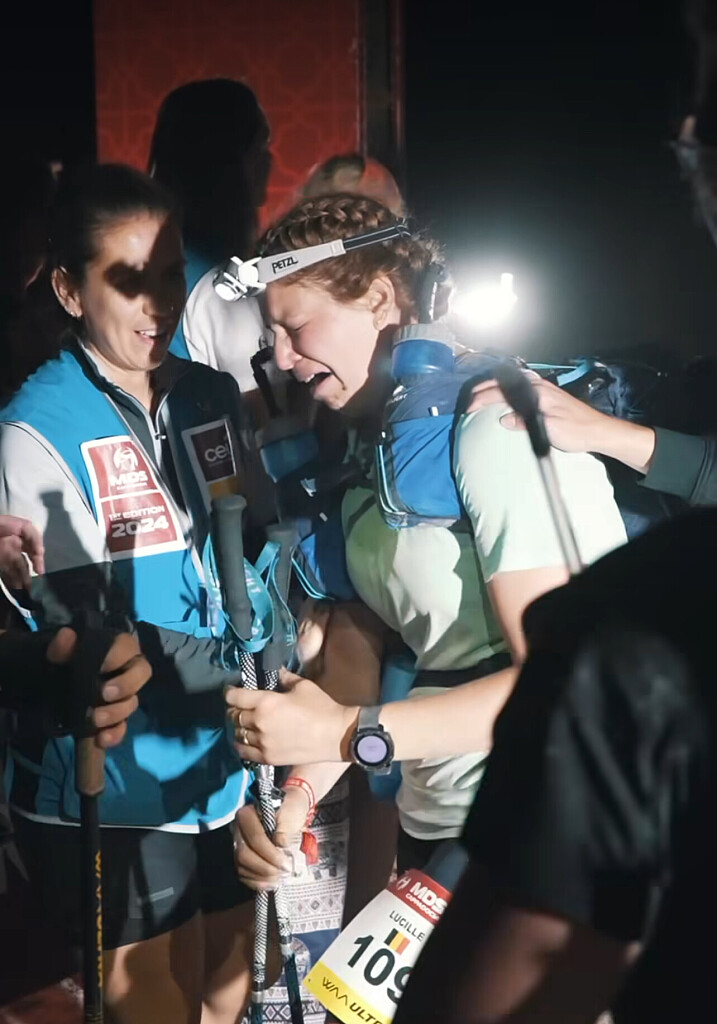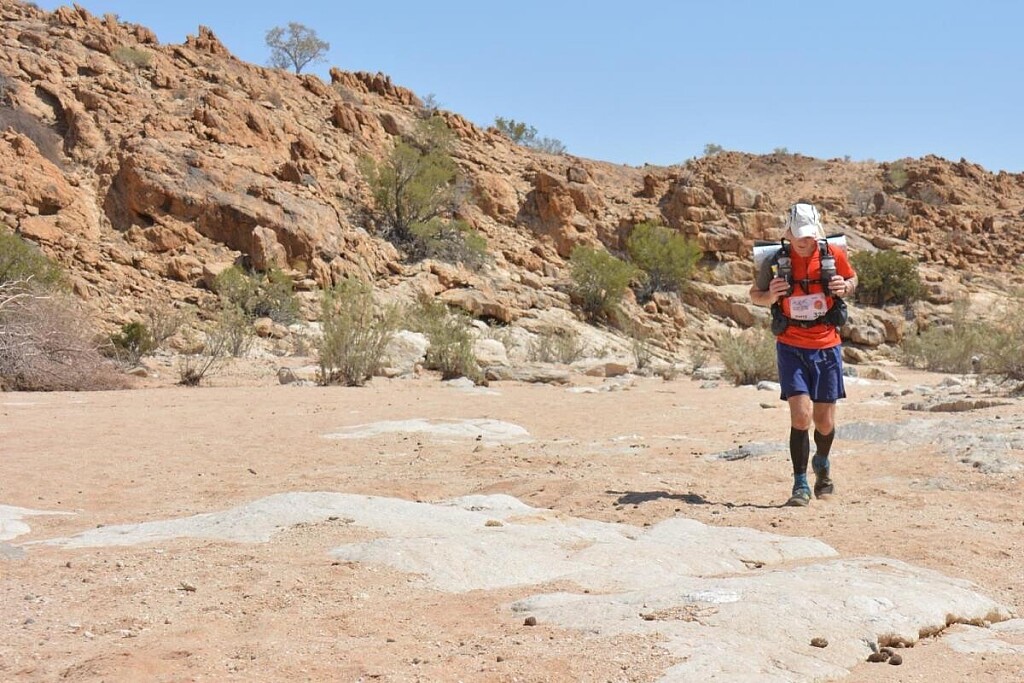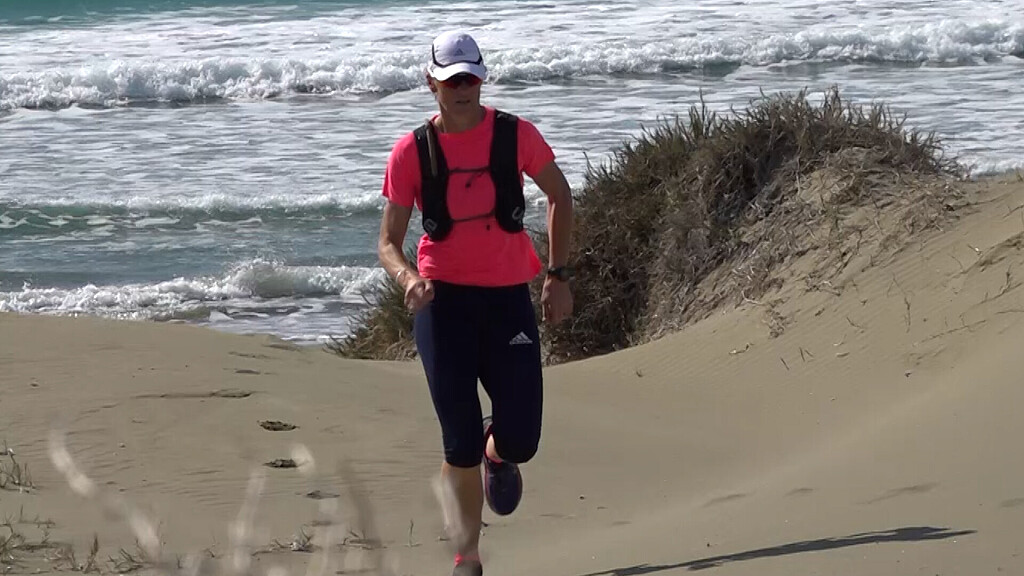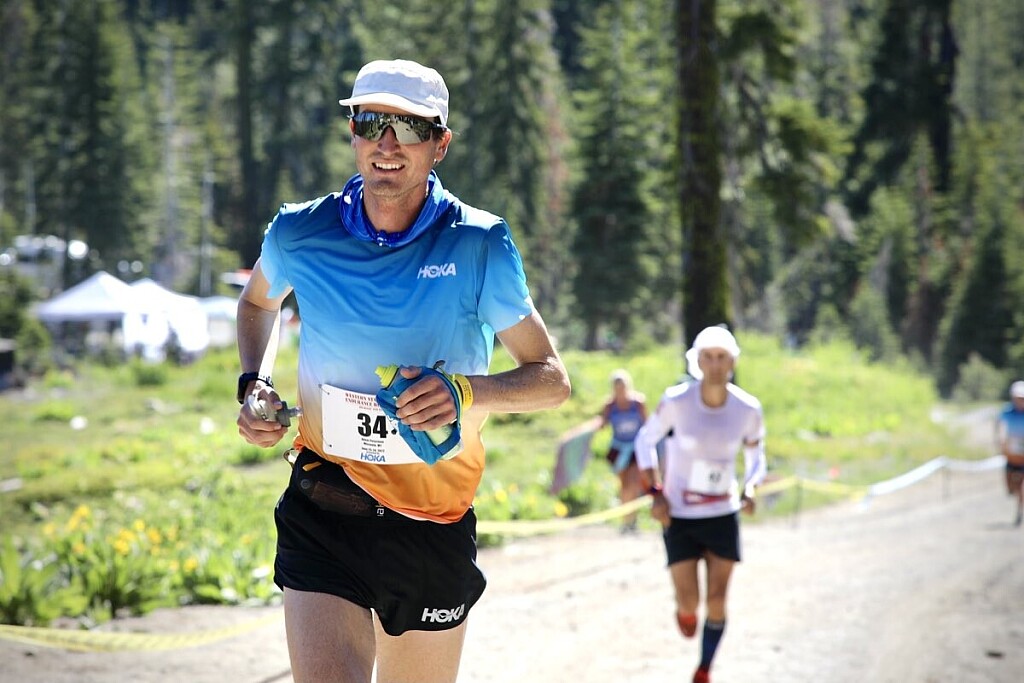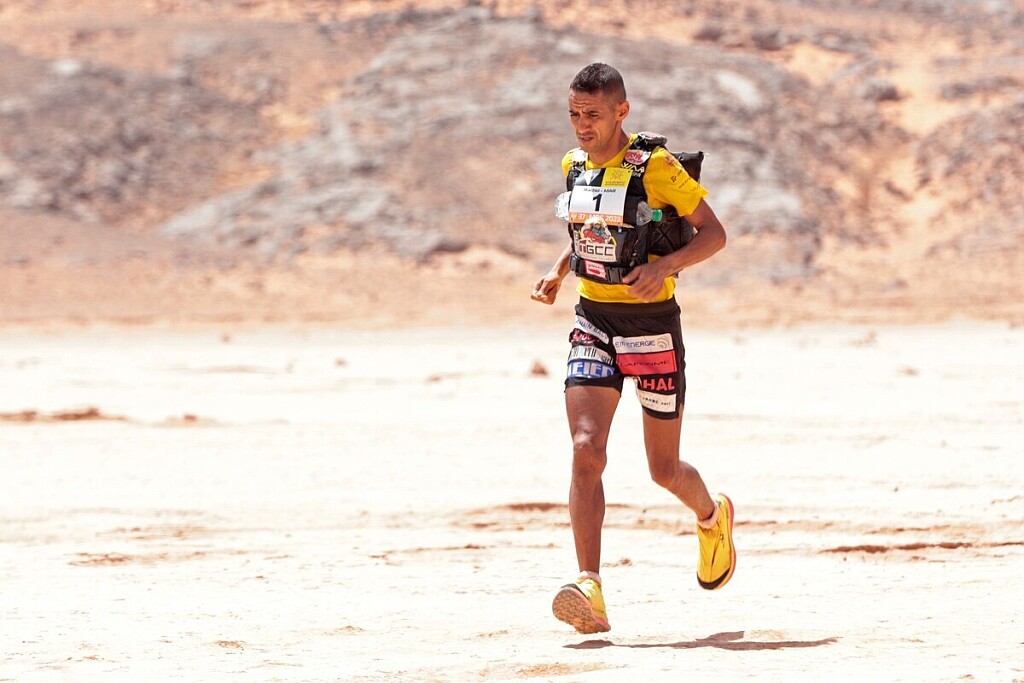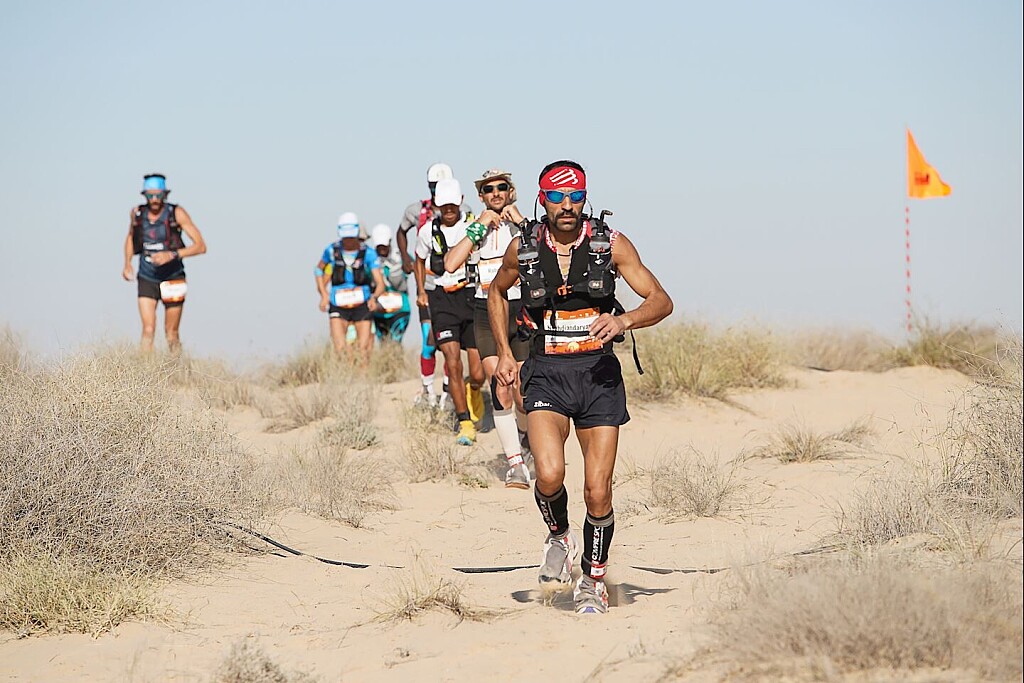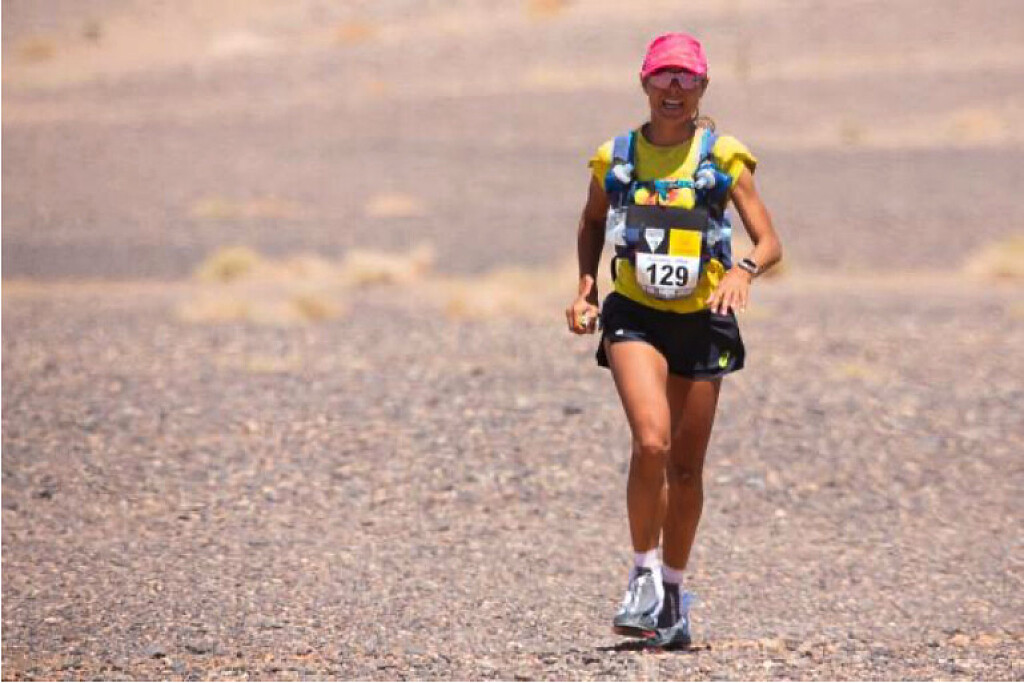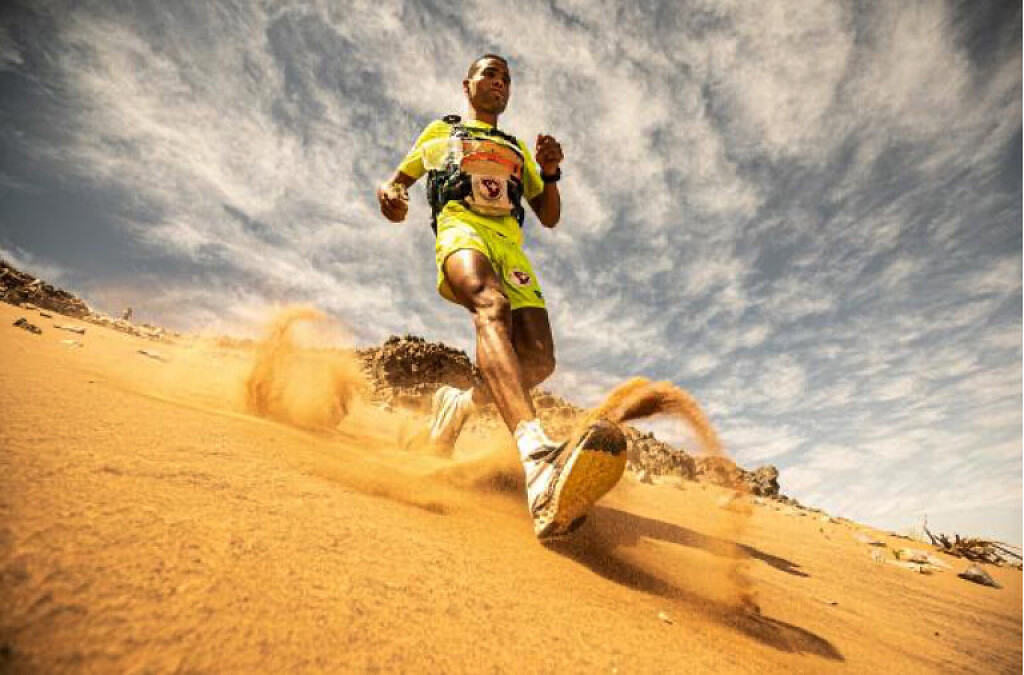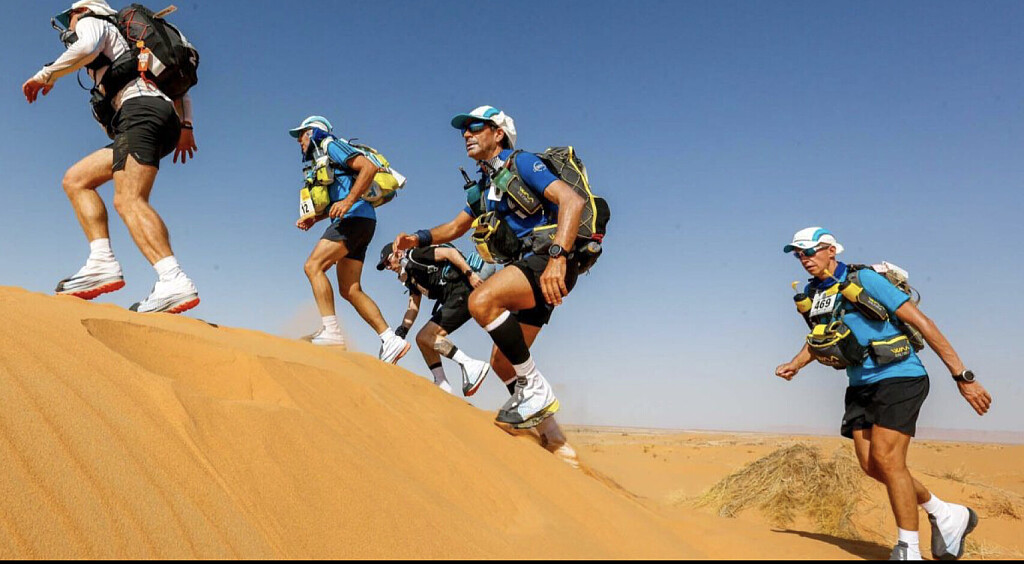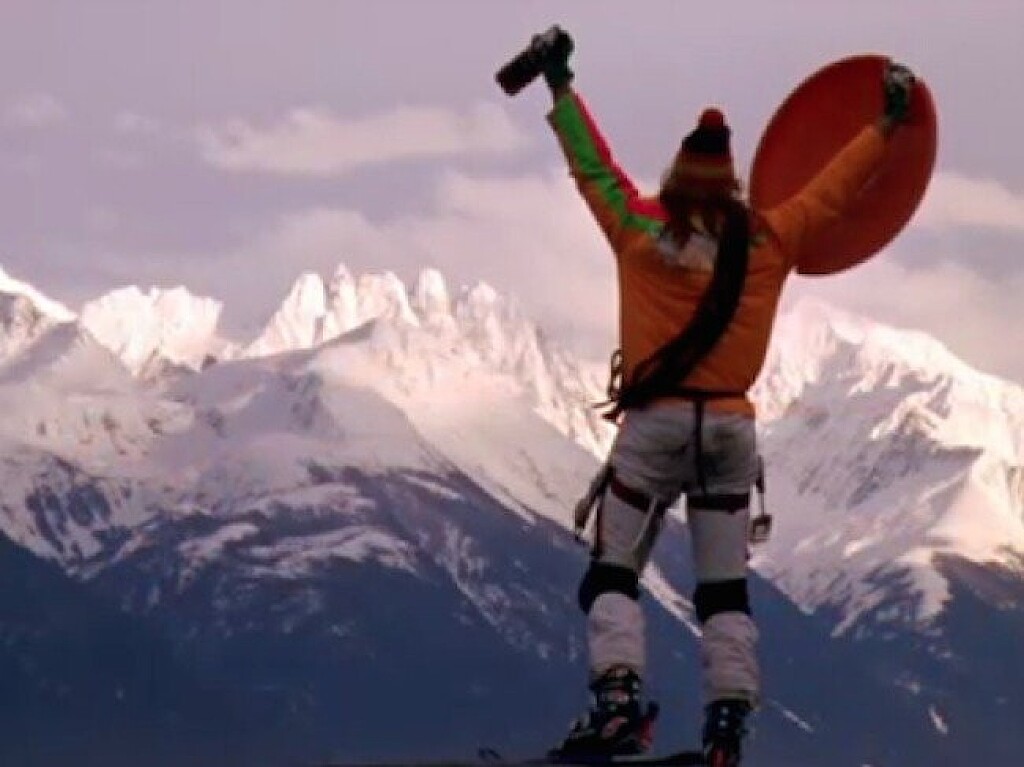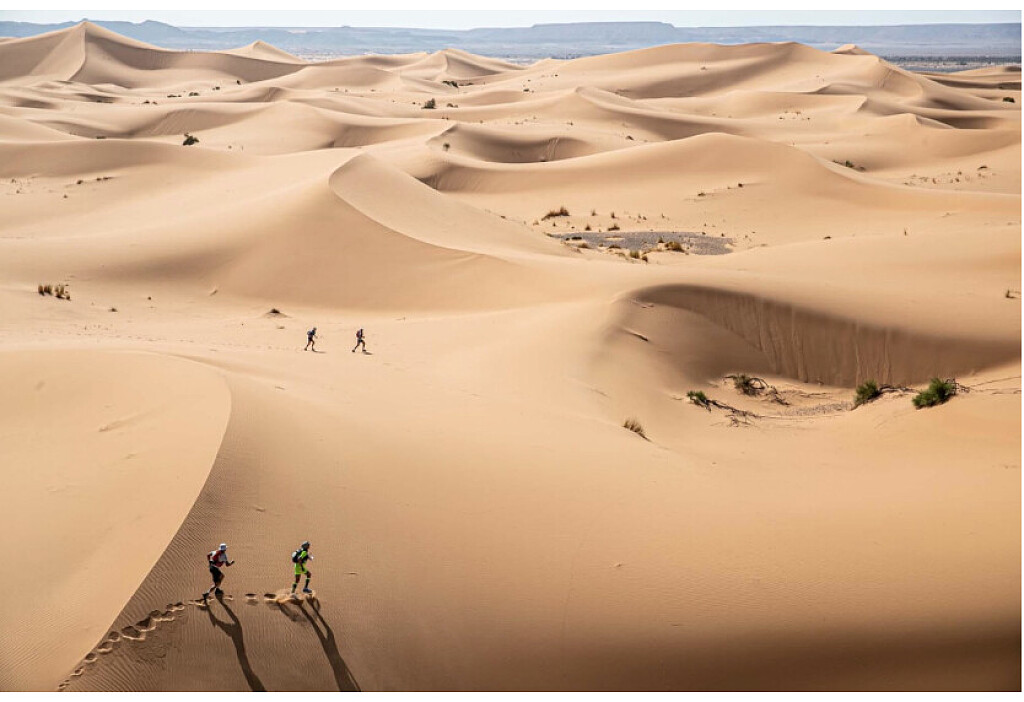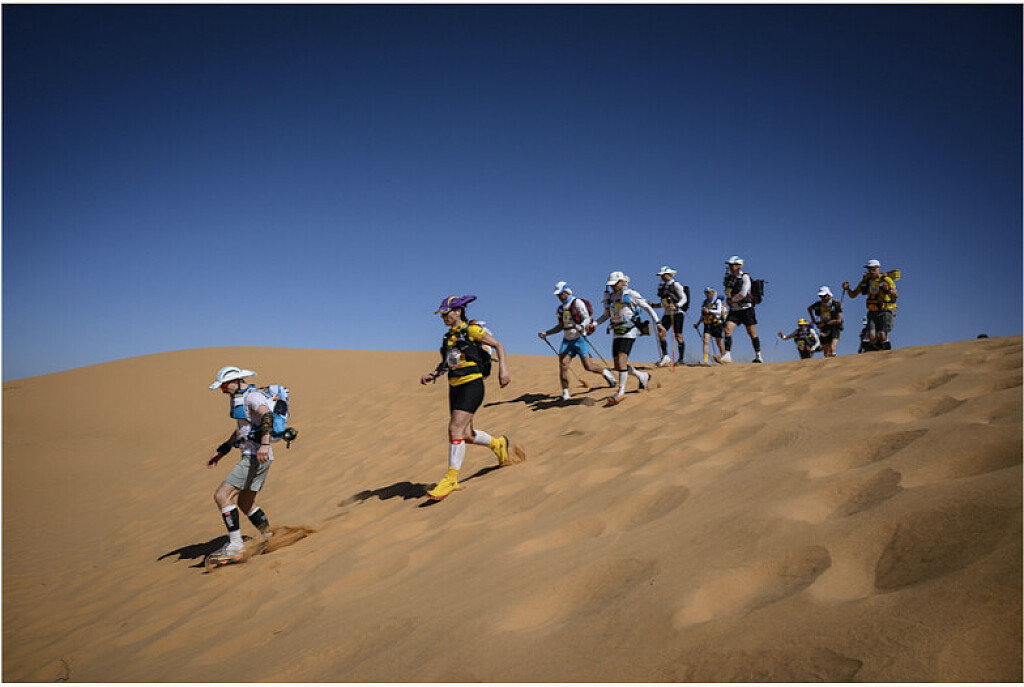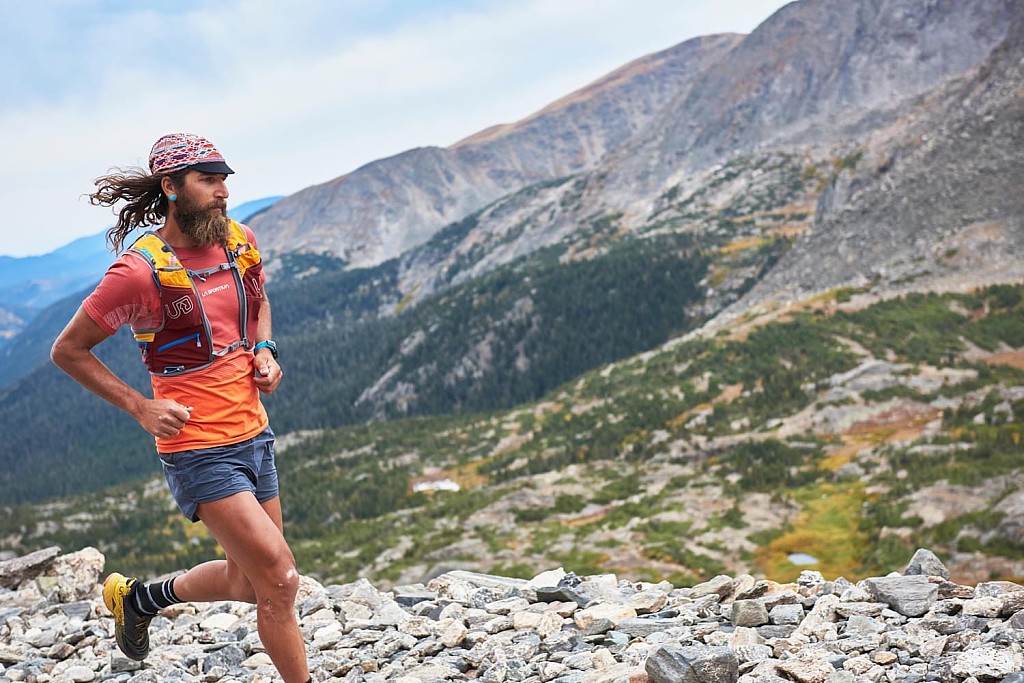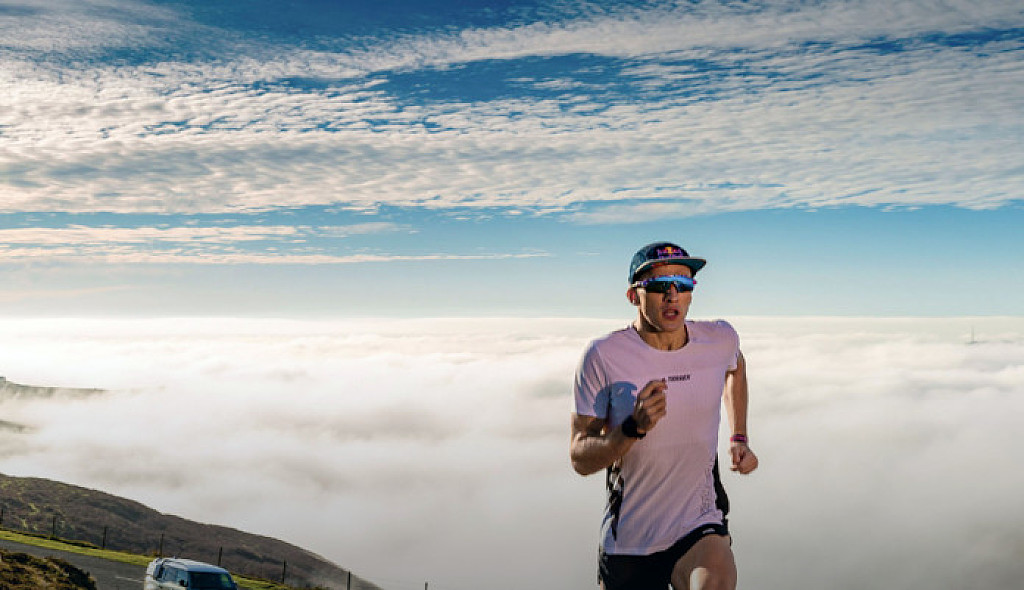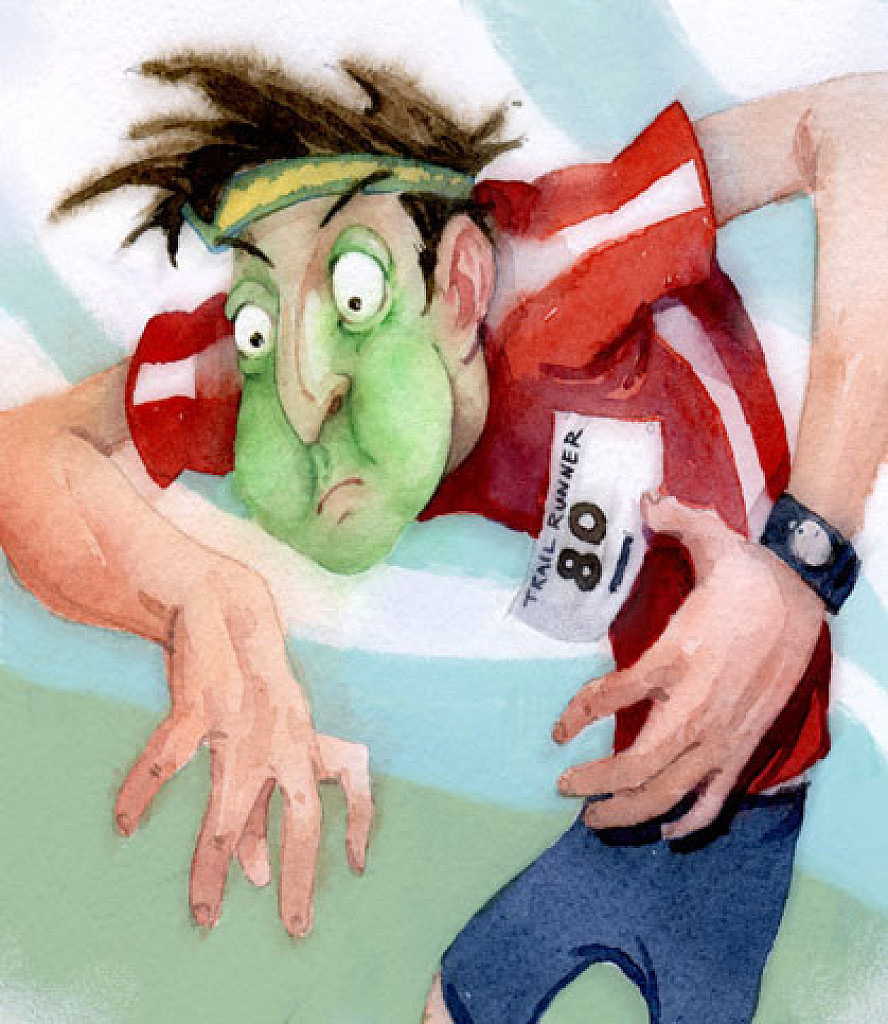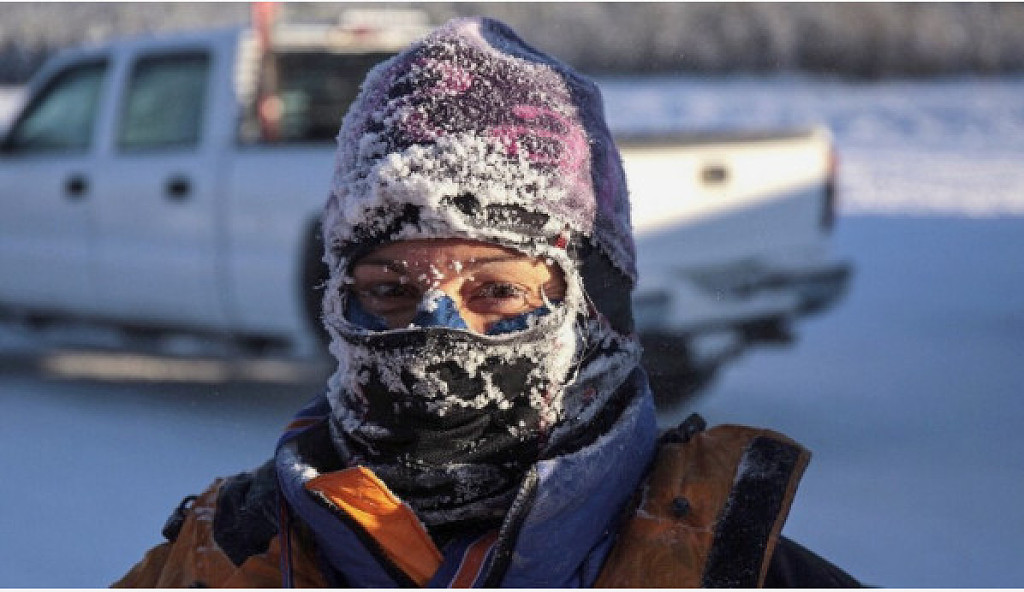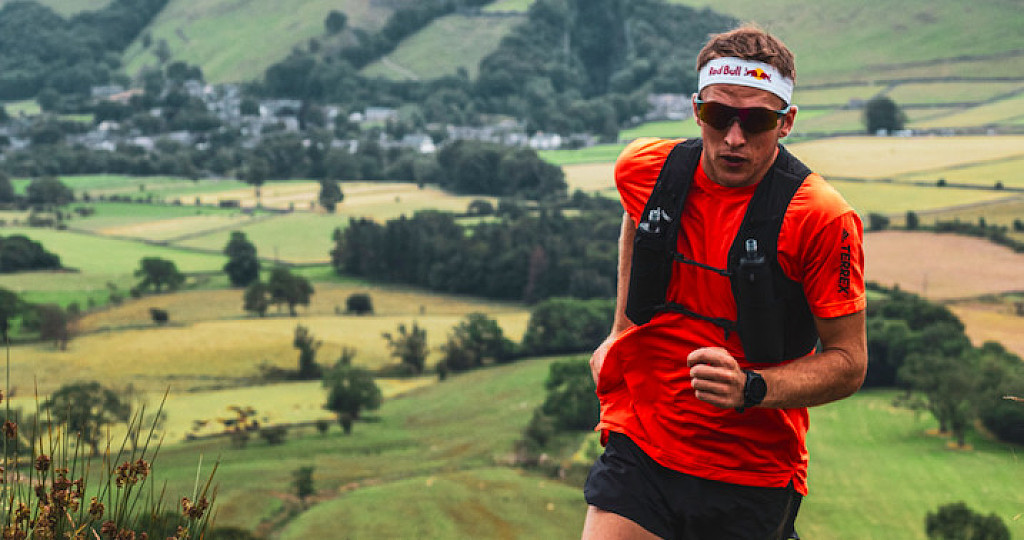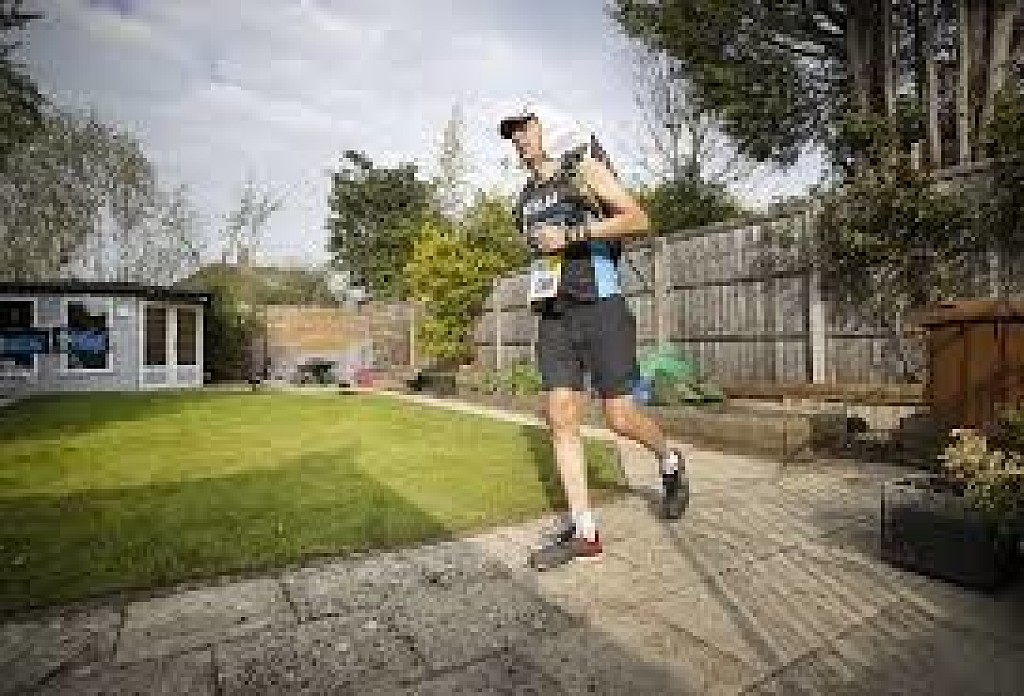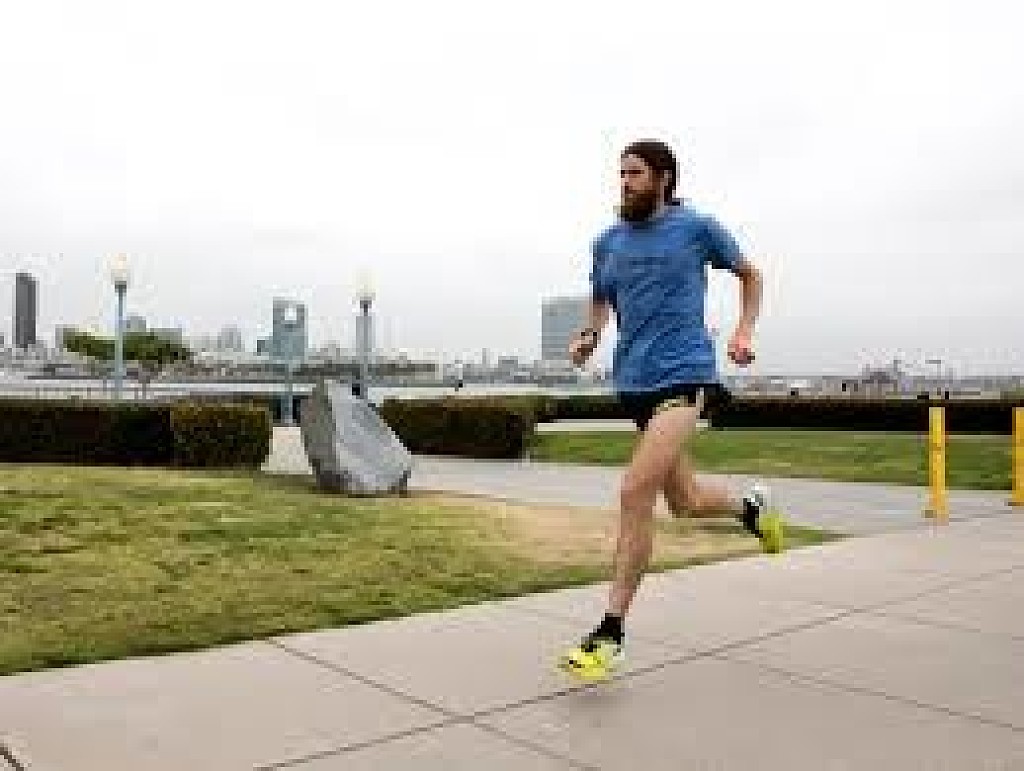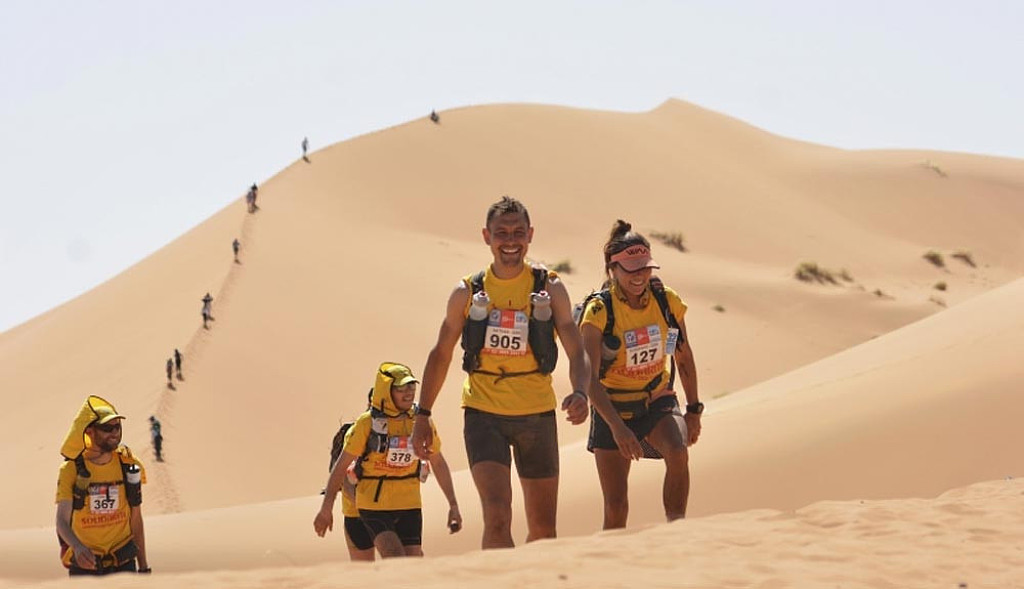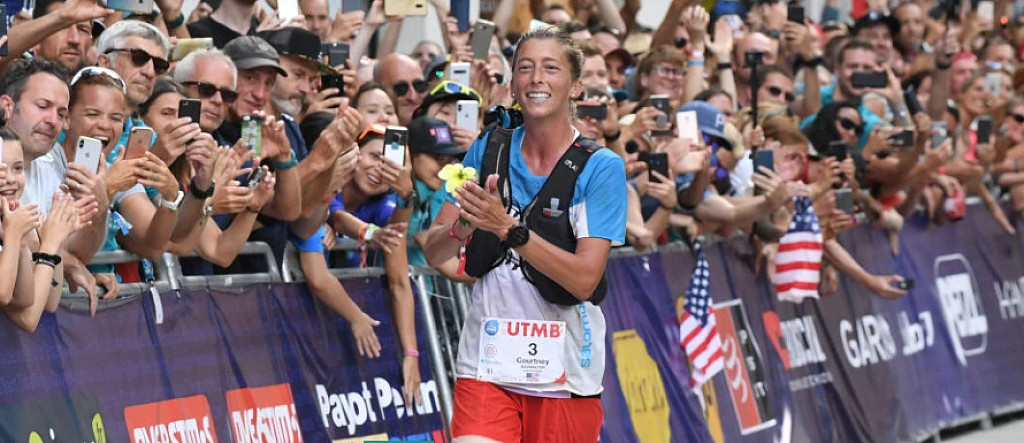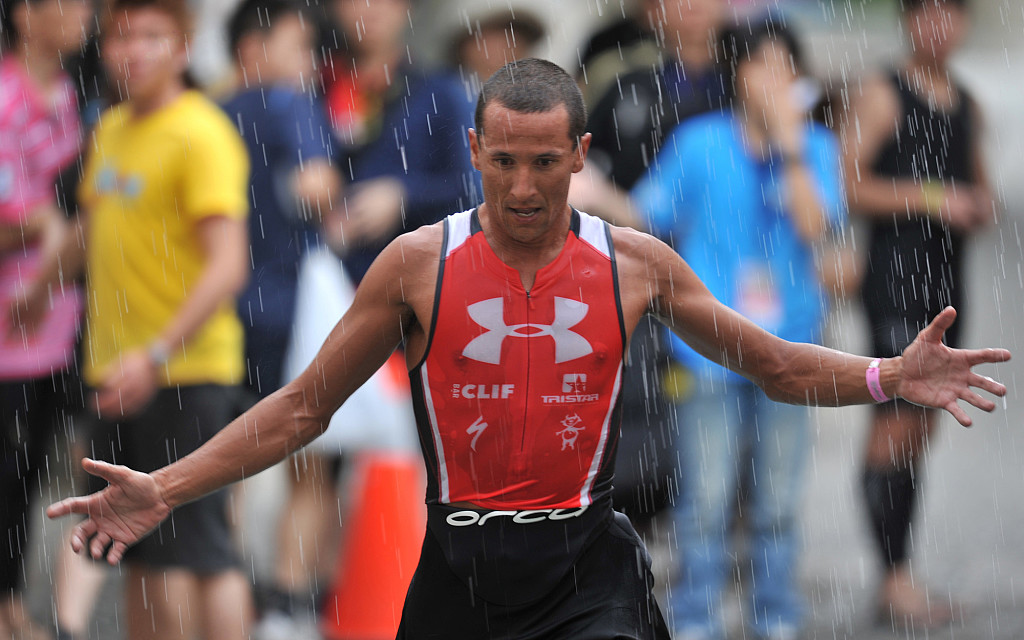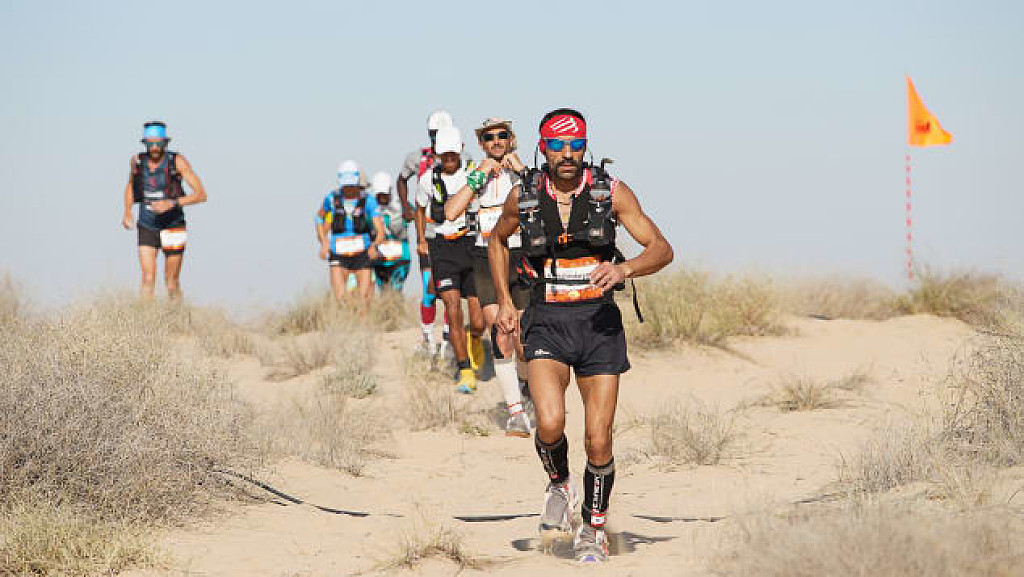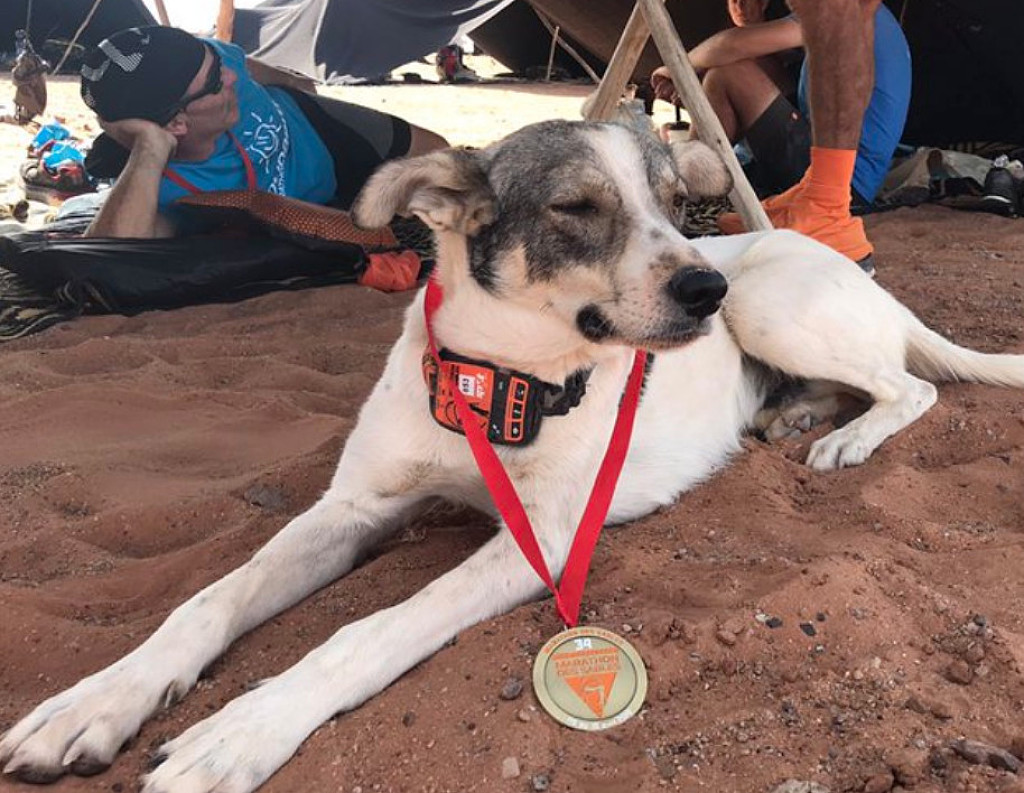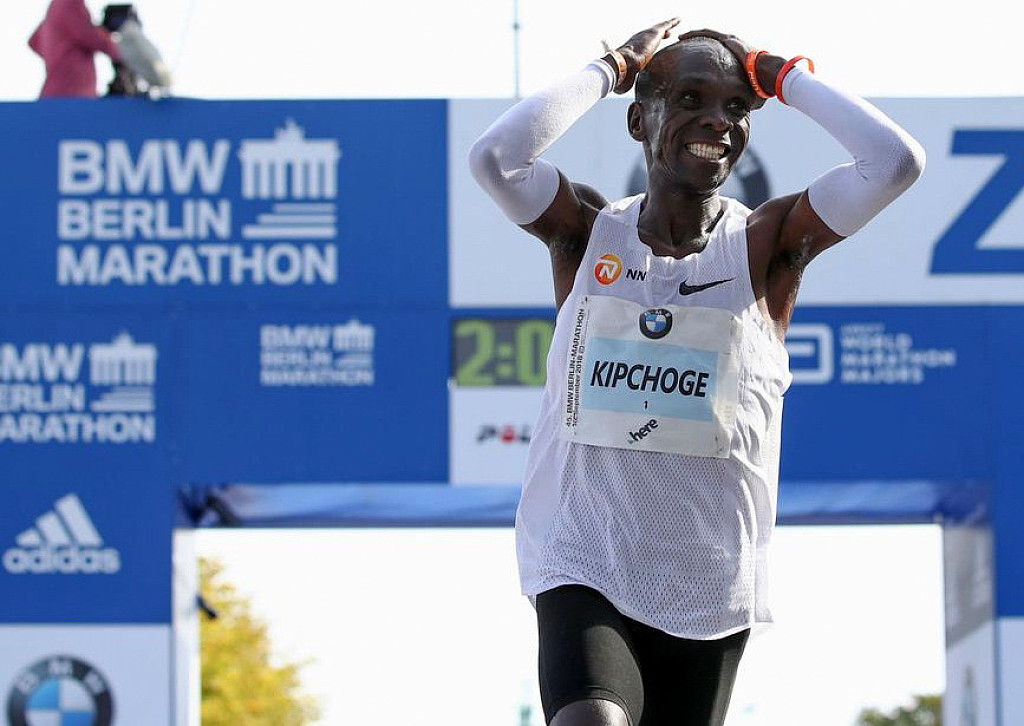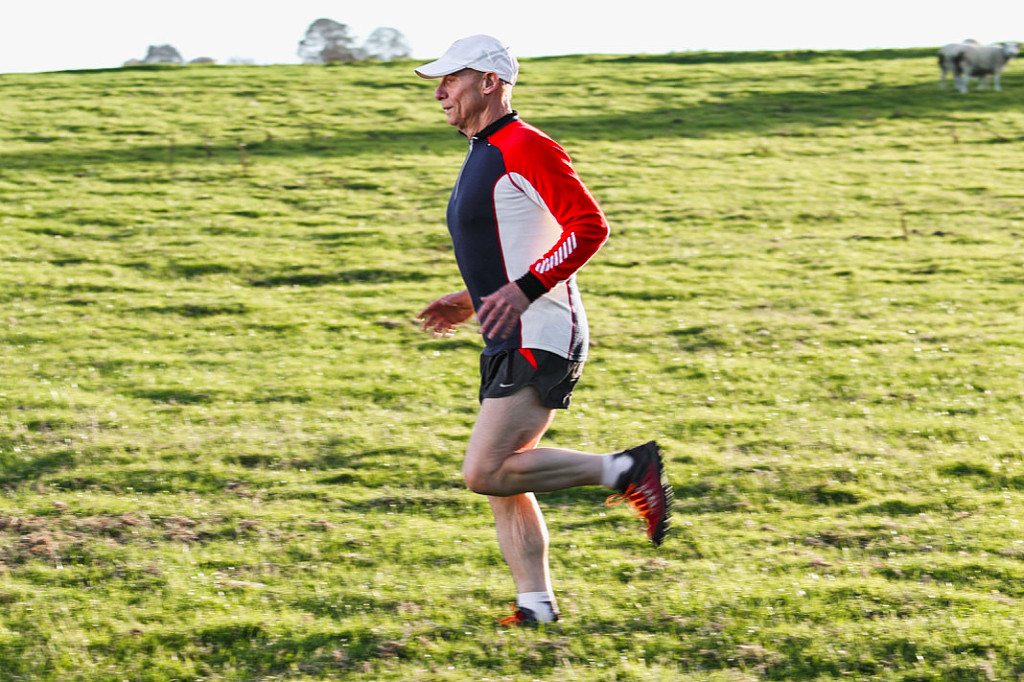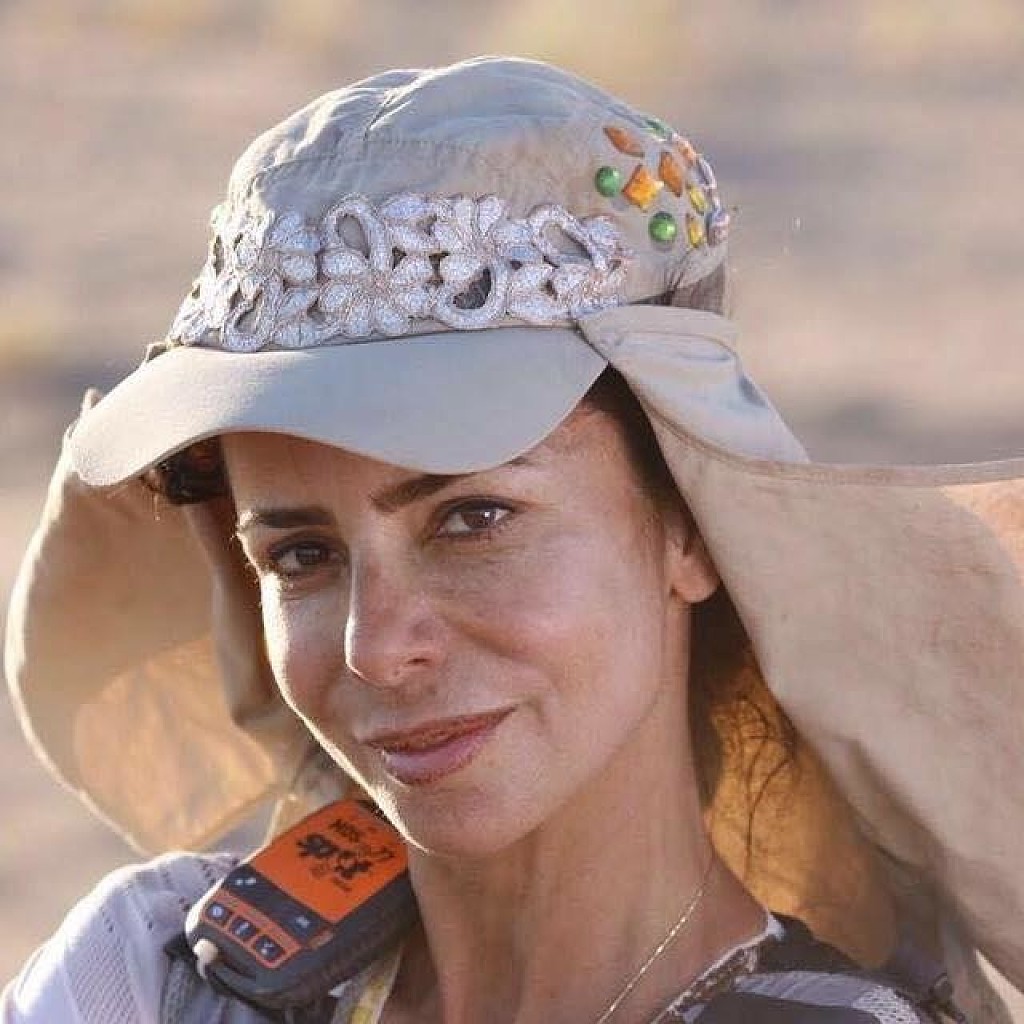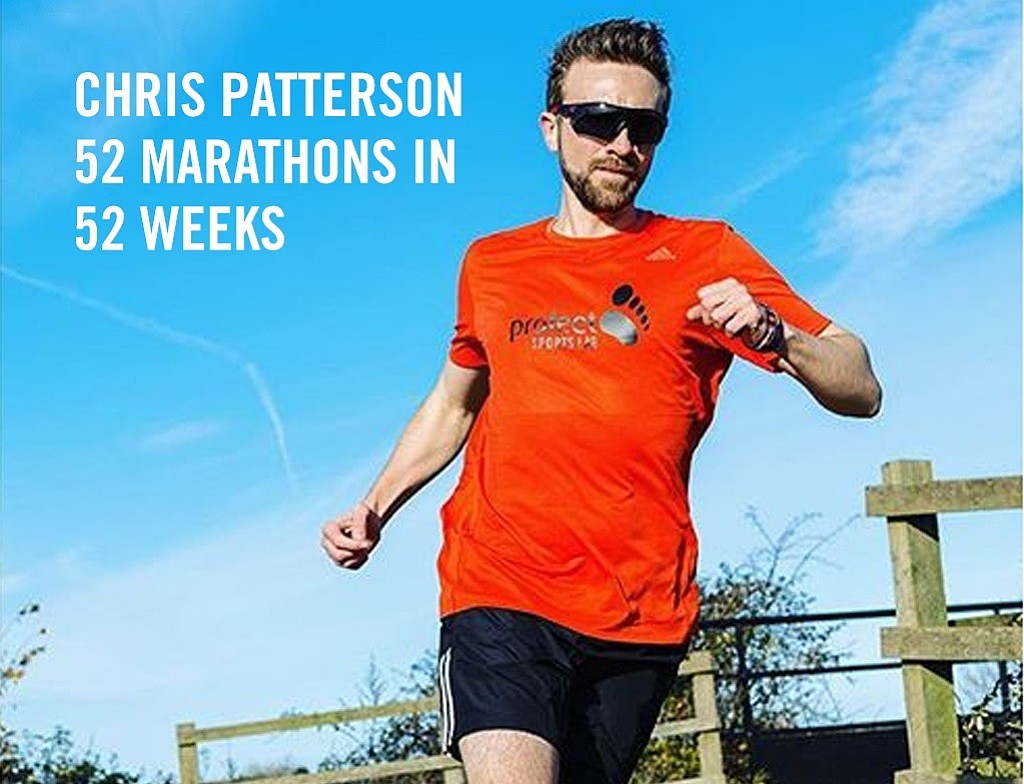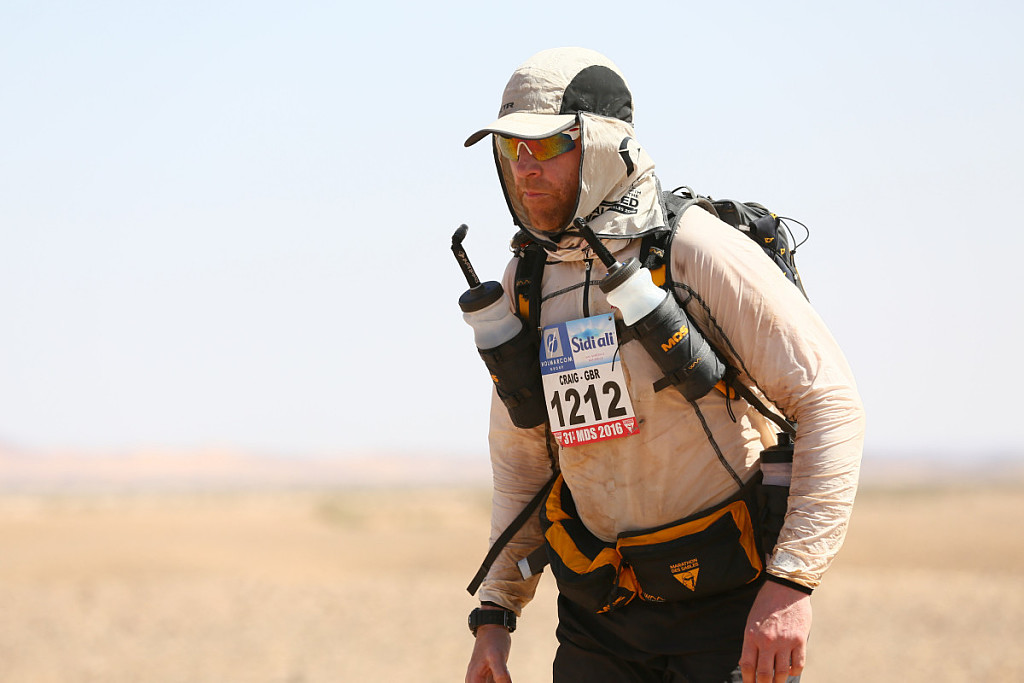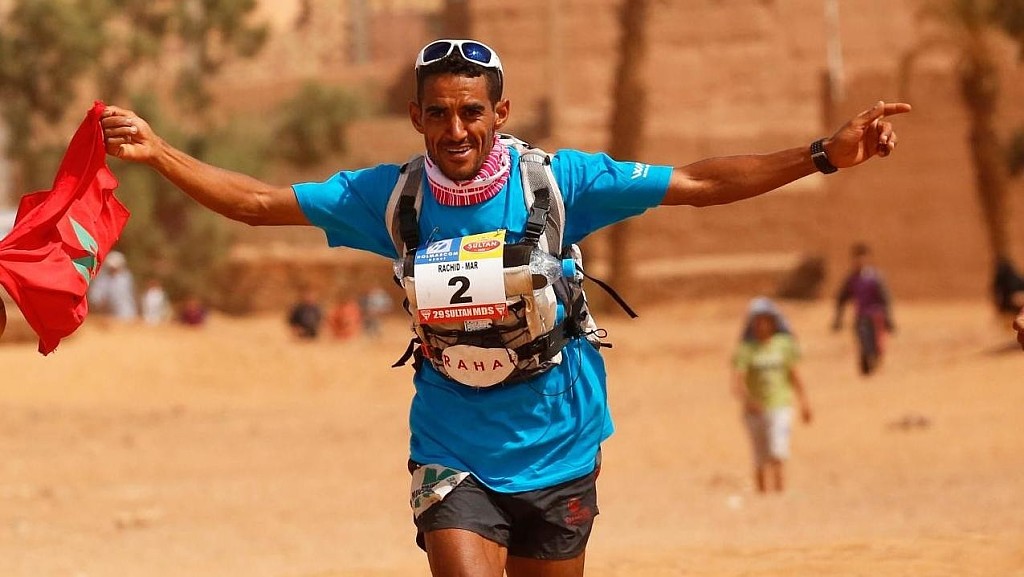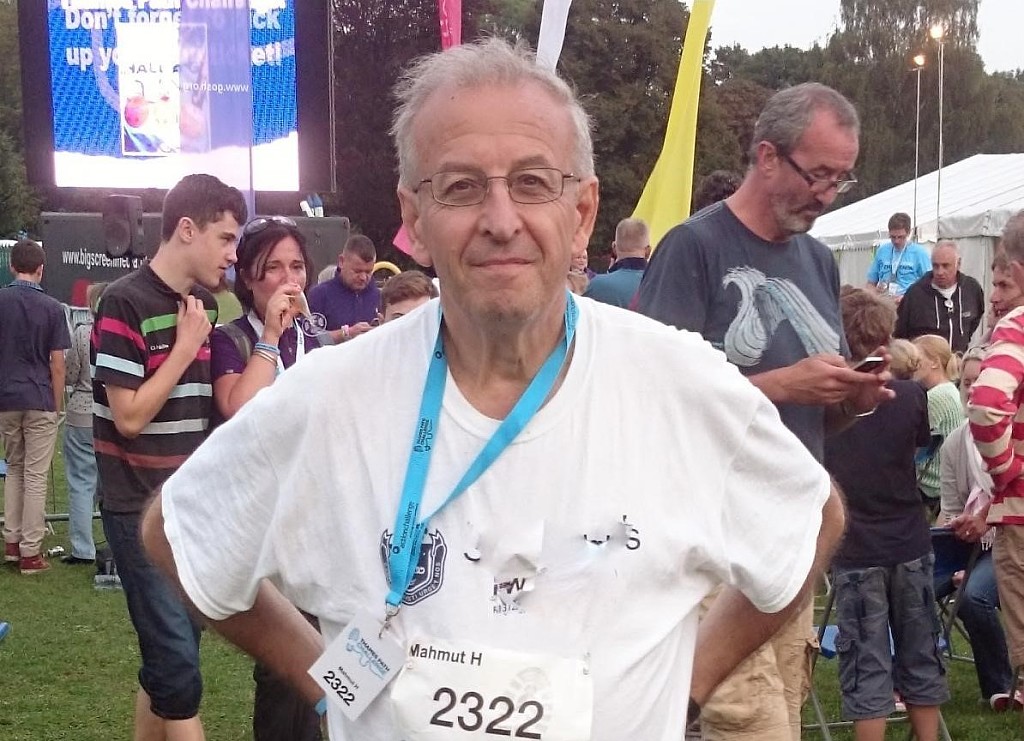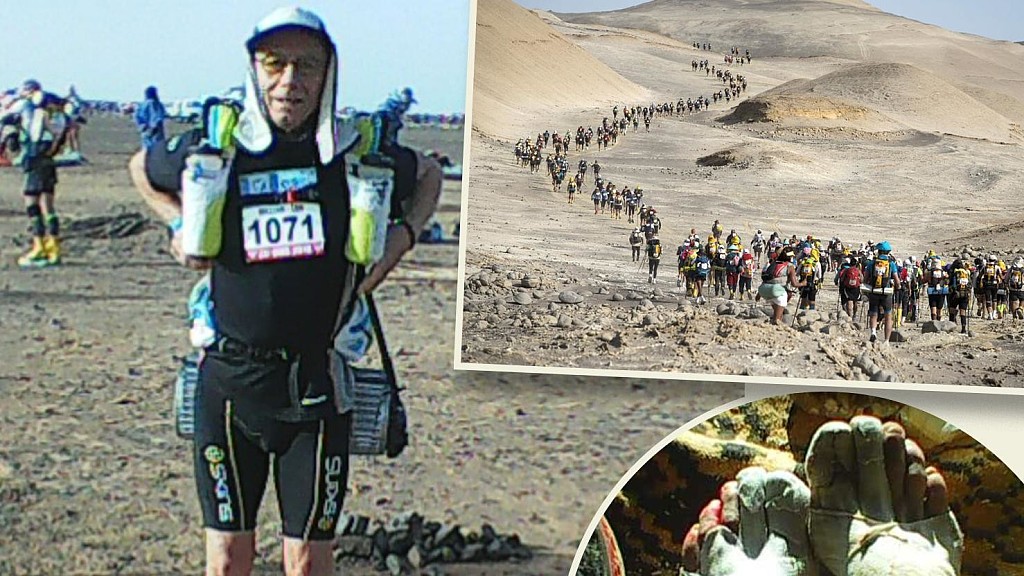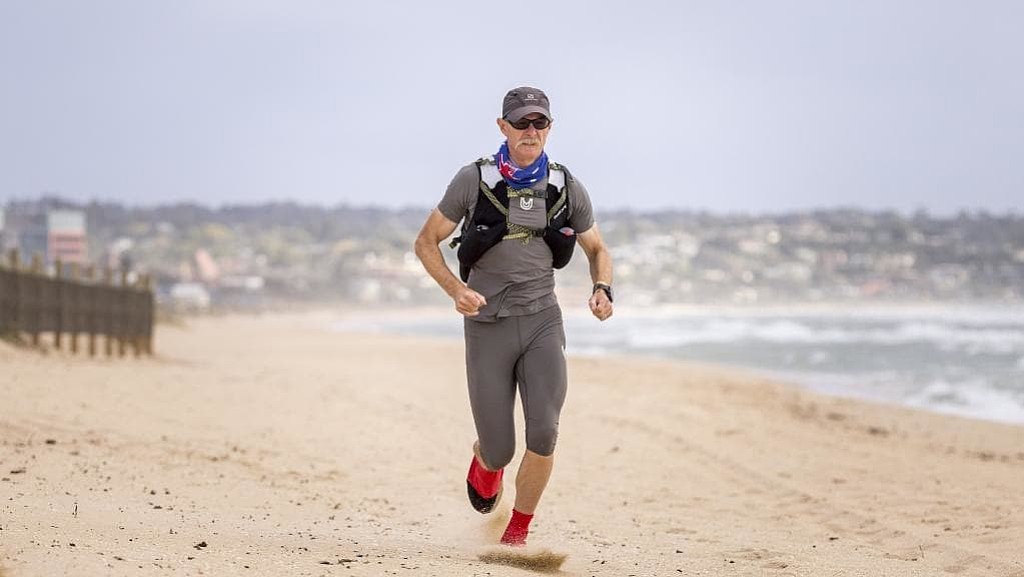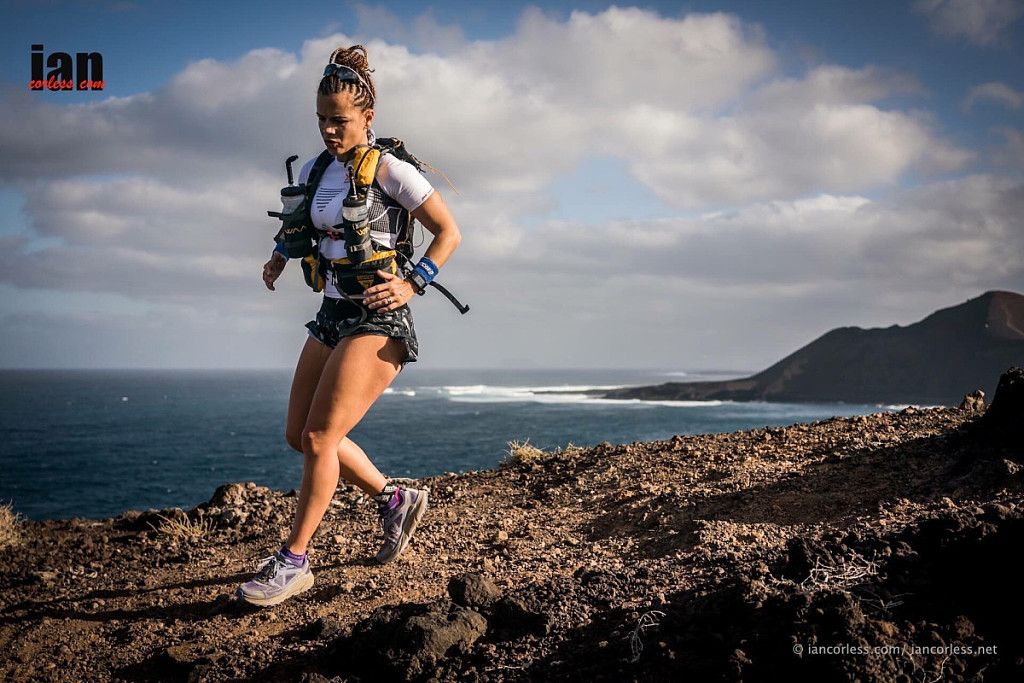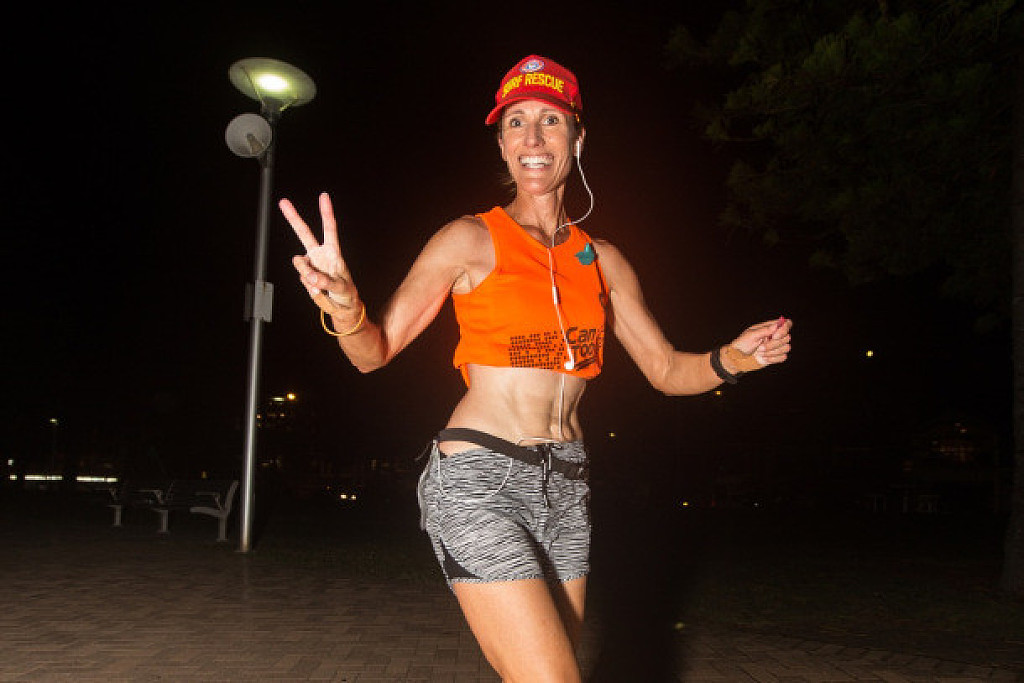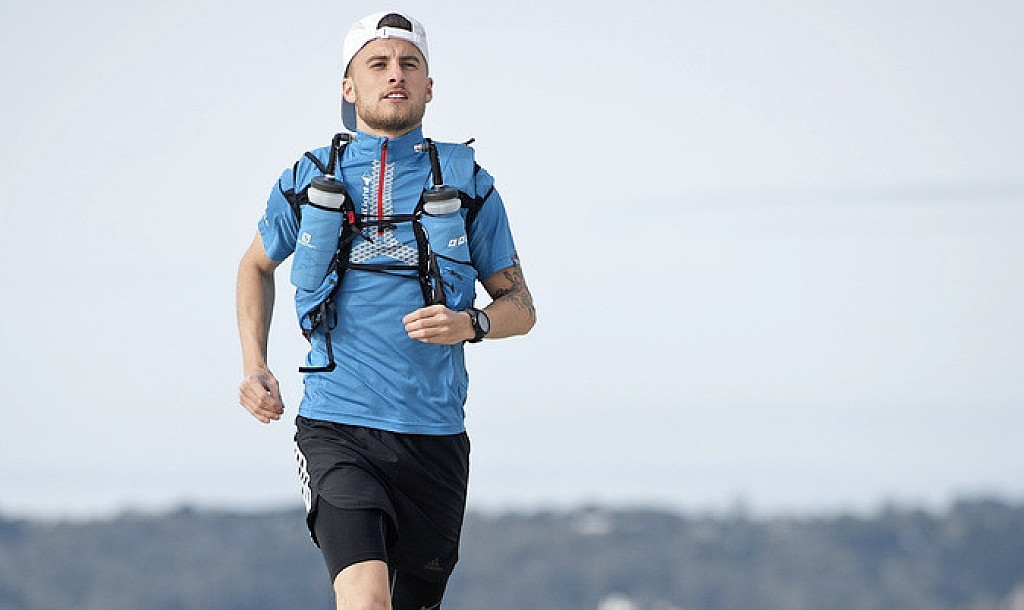Running News Daily
Running News Daily is edited by Bob Anderson. Send your news items to bob@mybestruns.com Advertising opportunities available. Train the Kenyan Way at KATA Kenya and Portugal owned and operated by Bob Anderson. Be sure to catch our movie A Long Run the movie KATA Running Camps and KATA Potato Farms - 31 now open in Kenya! https://kata.ke/
Index to Daily Posts · Sign Up For Updates · Run The World Feed
Articles tagged #Marathon Des Sables
Today's Running News
Surviving the Sahara – Inside the Marathon des Sables, the World’s Toughest Footrace
Dubbed the toughest footrace on Earth, the Marathon des Sables (MdS) is a grueling multi-day ultramarathon that challenges participants to traverse approximately 250 kilometers across the unforgiving terrain of the Moroccan Sahara Desert. This annual event tests the limits of human endurance, self-sufficiency, and resilience.
A Brief History of a Brutal Race
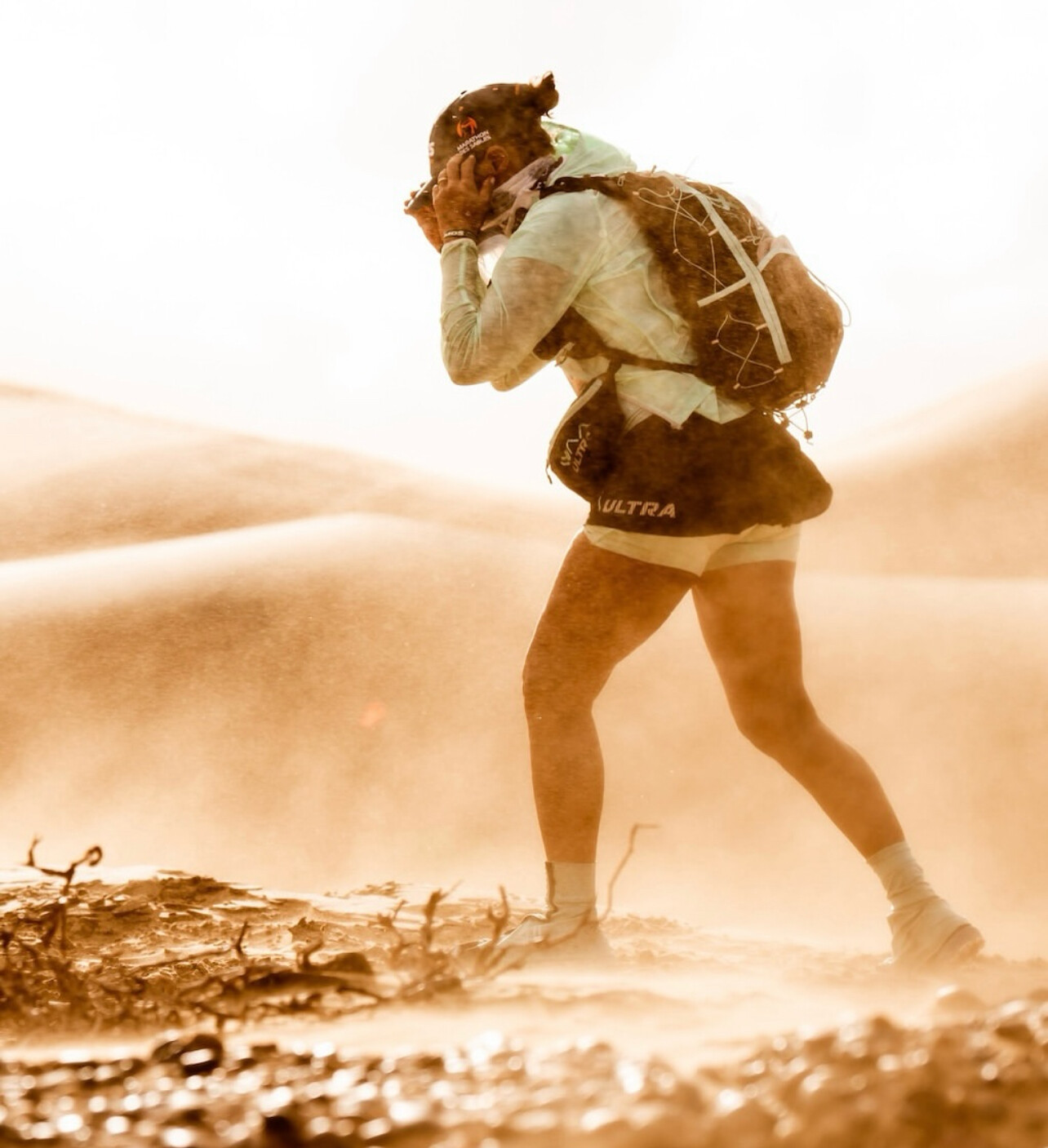
The Marathon des Sables was conceived by Frenchman Patrick Bauer, who in 1984 embarked on a solo trek of 350 kilometers across the Sahara Desert. Inspired to share this transformative experience, Bauer organized the inaugural race in 1986 with just 23 participants. Since then, the MdS has grown exponentially, attracting over a thousand competitors annually from around the globe.
The Race Format – Six Days of Pain and Perseverance
The MdS spans six stages over seven days, covering diverse and challenging terrains:
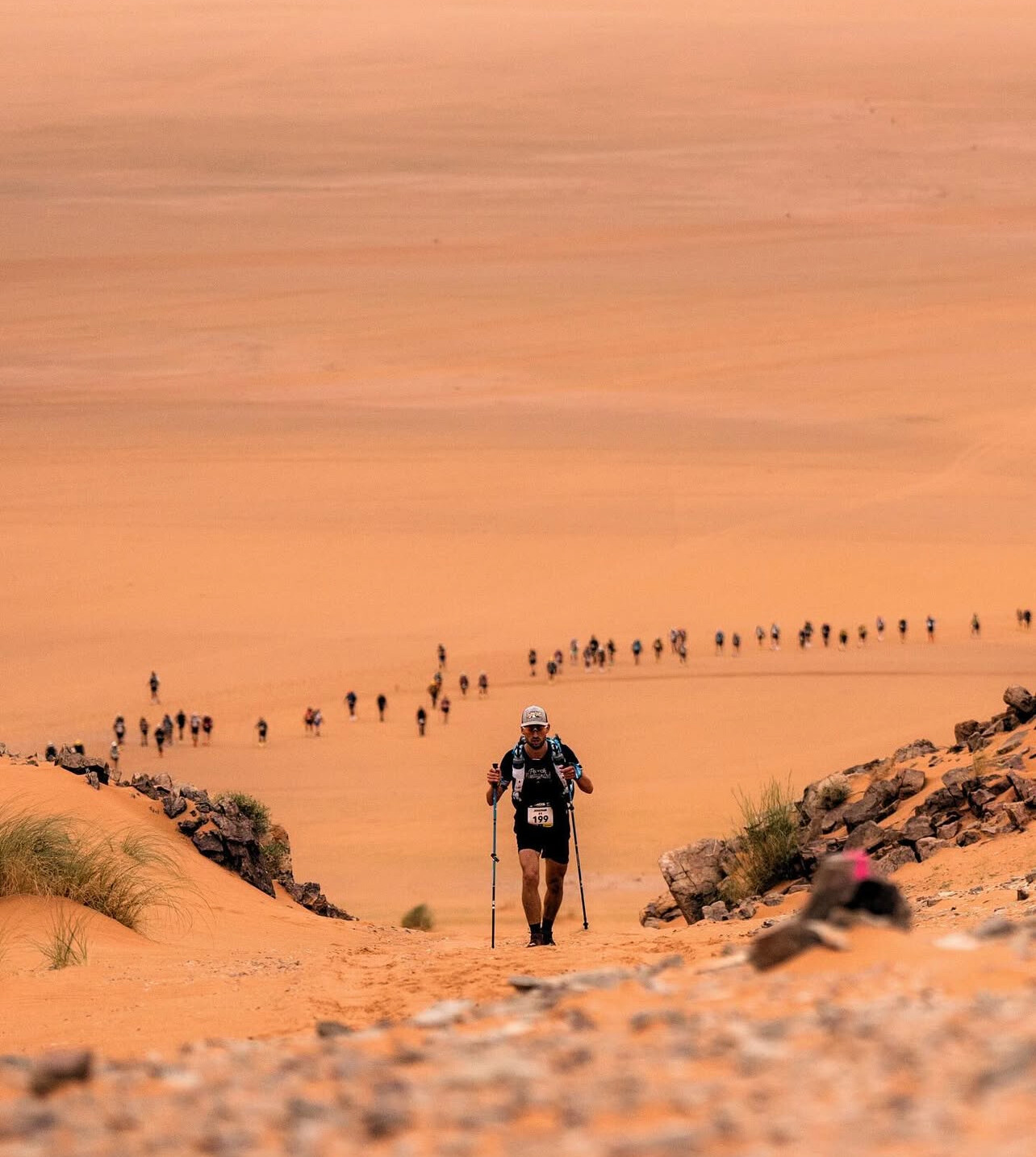
• Stages 1–3: Medium-distance runs of 30–40 km each.
• Stage 4 (The Long Day): An arduous 80+ km stretch, often extending into the night.
• Stage 5: A standard marathon distance of 42.2 km.
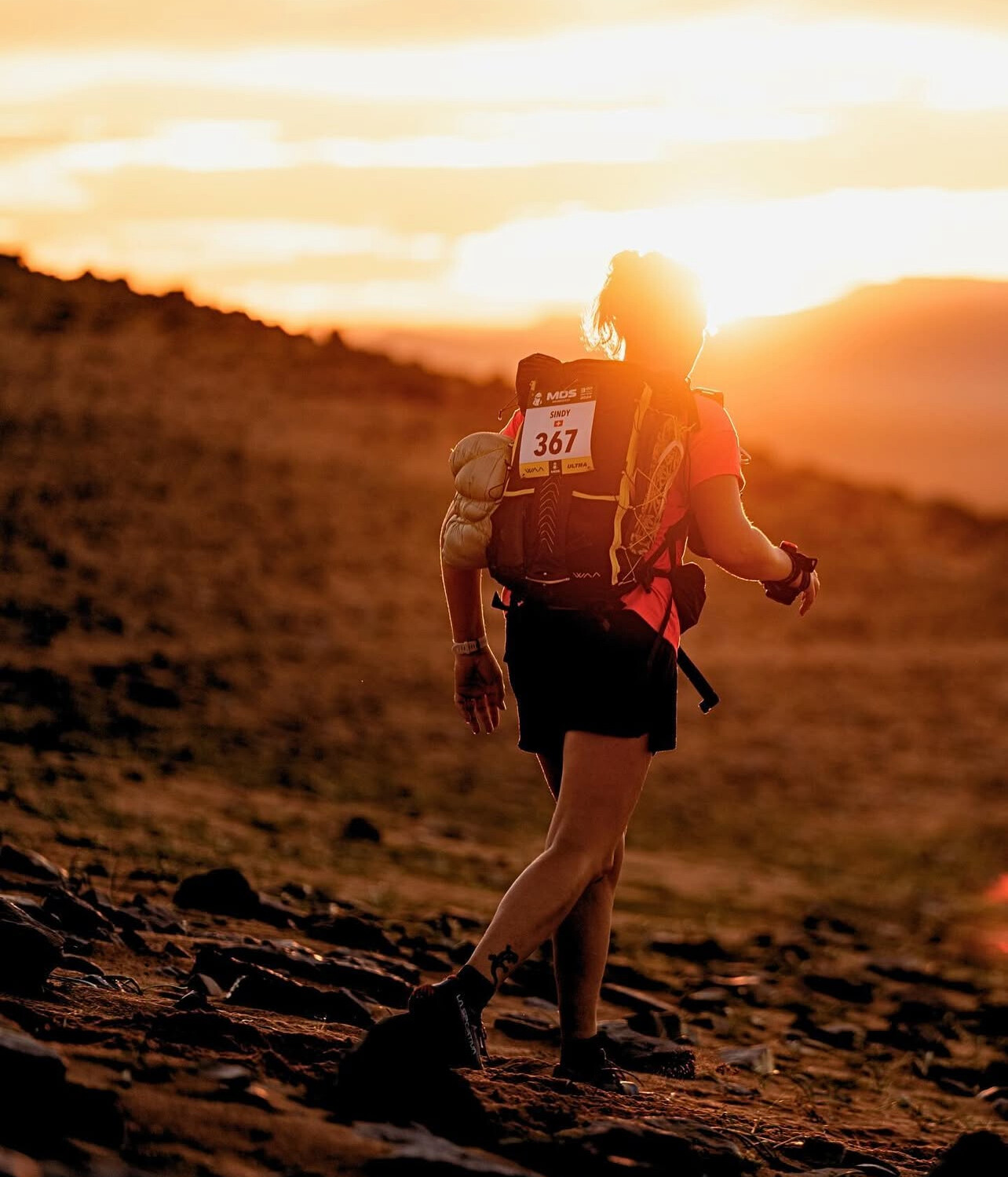
• Stage 6: A non-competitive charity stage, approximately 10 km, fostering camaraderie among participants.
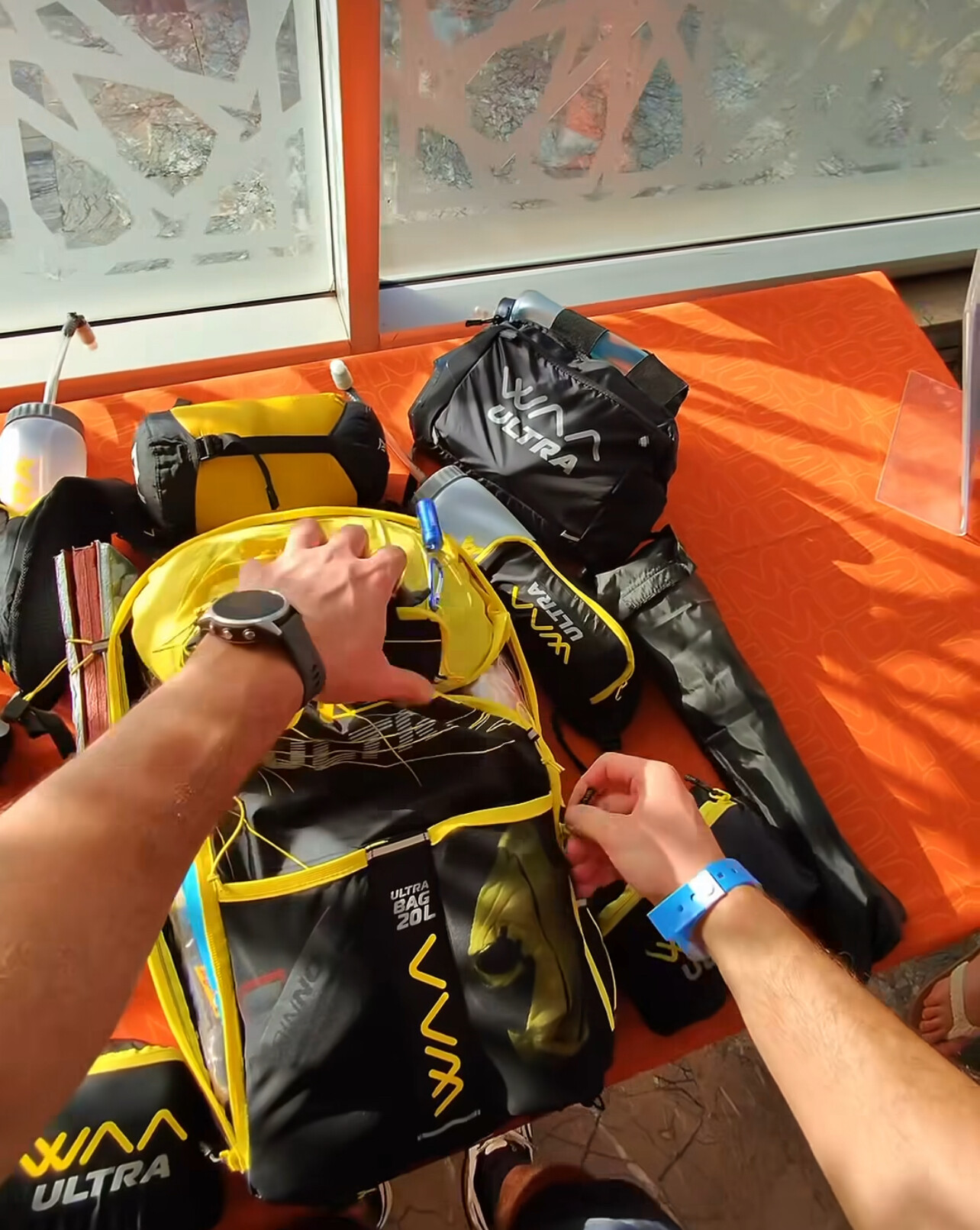
Competitors must be self-sufficient, carrying their own food, equipment, and personal belongings throughout the race. Water is rationed and provided at checkpoints, and communal Berber tents are set up at designated bivouac sites for overnight stays.

Training and Preparation – Building the Body and the Mind
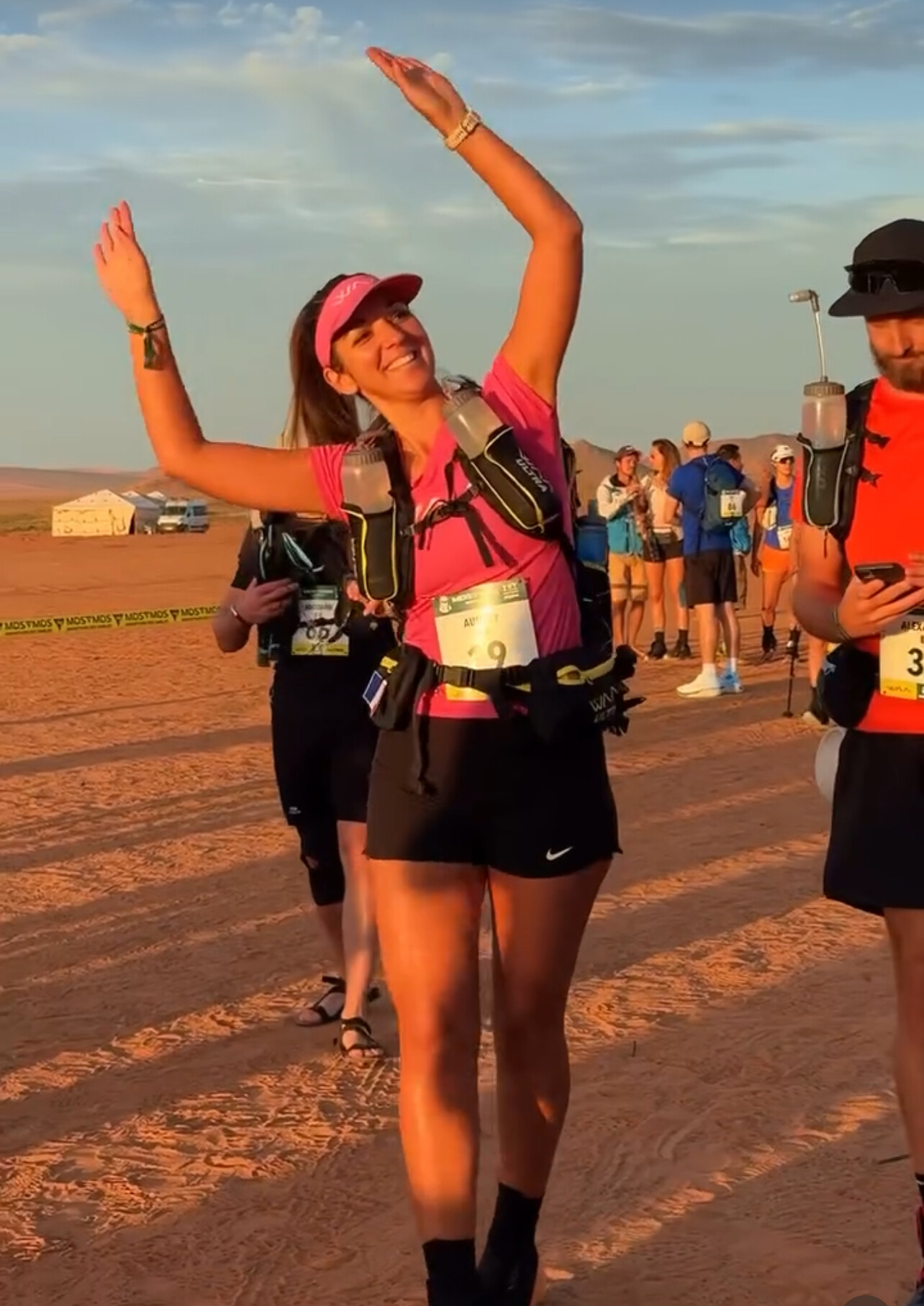
Preparation for the MdS requires a comprehensive approach:
• Endurance Training: Incorporating high-mileage runs, often back-to-back, to simulate race conditions.
• Strength Conditioning: Focusing on core and lower-body strength to handle the added weight of the backpack.
• Heat Acclimatization: Training in heated environments or during peak temperatures to adapt to desert conditions.
• Mental Fortitude: Developing strategies to cope with isolation, fatigue, and the psychological demands of the race.

Many participants also engage in simulated self-sufficiency exercises, practicing with their race gear and nutrition plans to ensure efficiency and comfort during the event.
Gear and Packing Essentials – Living Out of a Backpack
Competitors are required to carry mandatory equipment, including:
• Sleeping bag
• Headlamp and spare batteries
• Compass and roadbook
• Emergency whistle and signaling mirror
• Minimum of 2,000 calories per day
• First-aid supplies, cooking equipment, and survival gear
Optional items often include gaiters to prevent sand ingress, specialized desert footwear, and comprehensive blister care kits. Balancing pack weight (typically between 6.5 to 15 kg) with essential supplies is crucial for performance and comfort.
The Daily Grind – Life in the Desert
Each day begins before dawn, with participants breaking camp and preparing for the day’s stage. The course presents a variety of challenges, from towering sand dunes to rocky jebels (mountains), under the relentless desert sun. Checkpoints provide rationed water and medical support, but the journey between them is a true test of endurance.
Evenings are spent at bivouac sites, where runners tend to injuries, share experiences, and rest under the starlit Sahara sky, fostering a unique sense of community and mutual support.
Famous Runners and Legendary Stories
The MdS has seen remarkable athletes:
• Rachid El Morabity: A Moroccan runner with multiple victories, renowned for his dominance in desert ultramarathons.
• Laurence Klein: A French athlete with several MdS wins, exemplifying endurance and resilience.
Inspirational tales abound, such as that of Mauro Prosperi, an Italian competitor who in 1994 survived nine days lost in the desert after a sandstorm veered him off course—drinking bat urine and eating lizards before eventually being rescued.
Why They Keep Coming Back
For many, one MdS is enough. For others, it becomes an annual pilgrimage. The appeal goes beyond running—it’s about testing your limits and discovering who you really are when stripped of all comfort.
The camaraderie, the solitude, the intensity, and the transformation draw people back. In a world filled with convenience, the MdS offers a rare crucible: a space where pain becomes purpose and exhaustion becomes transcendence.
by Boris Baron
Login to leave a comment
An amazing challenge. I am sure the feeling of crossing the finish line must be a feeling that would be hard to put in words. - Bob Anderson 4/4 3:11 am |
Marathon Des Sables
The Marathon des Sables is ranked by the Discovery Channel as the toughest footrace on earth. Seven days 250k Known simply as the MdS, the race is a gruelling multi-stage adventure through a formidable landscape in one of the world’s most inhospitable climates - the Sahara desert. The rules require you to be self-sufficient, to carry with you on your...
more...Harry Hunter, 75, set to take part in Marathon Des Sables in Morocco
Harry Hunter will soon be flying out to Morocco to take part in the Marathon Des Sables in aid of Alexander Devine Children's Hospice.
Harry Hunter, 75, from Windsor, will be taking part in the race in April and hopes to raise funds for the hospice, which is the only specialist children's hospice serving Berkshire and surrounding counties.

The race is in its 38th year and is a multiday race held in southern Morocco, in the Sahara Desert. This year the total distance is 252km over six stages.
A fellow boot camper of Mr Hunter's has described him as an "inspirational character", having served for 22 years in the Blues and Royals in Windsor.
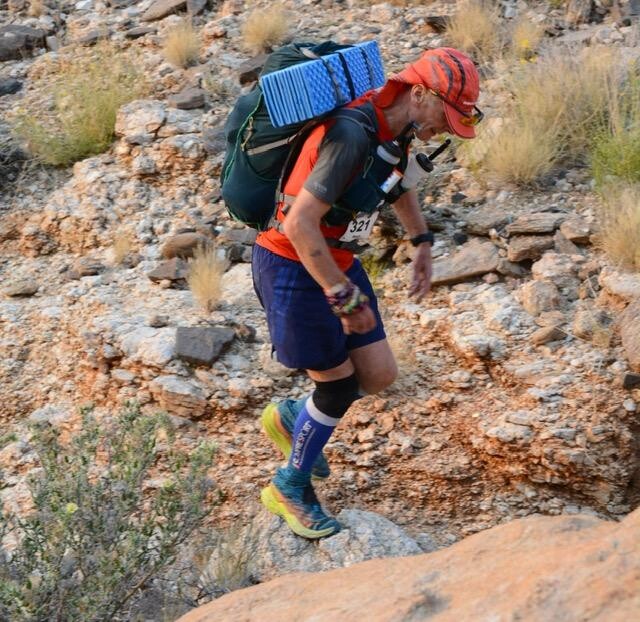
He is not a stranger to extreme challenges for charity and is "well known" in the area.
Mr Hunter will be 76 years old on the second day of the race, making him the oldest man to run it.
A fundraiser on Just Giving has been launched with a target of raising £2,000 for charity.
Alexander Devine Children's Hospice currently supports over 165 children and their families, but they are committed to growing their service and reaching out to every child and their family that needs them.
The hospice needs £2.8 million of funding each year and most of this comes from donations.
by Daisy Waites
Login to leave a comment
Marathon Des Sables
The Marathon des Sables is ranked by the Discovery Channel as the toughest footrace on earth. Seven days 250k Known simply as the MdS, the race is a gruelling multi-stage adventure through a formidable landscape in one of the world’s most inhospitable climates - the Sahara desert. The rules require you to be self-sufficient, to carry with you on your...
more...Olympian Army major gets ready for 250km ultramarathon
Two-time Olympic rowing champion and Army major Heather Stanning is ready for her next challenge.
Alongside a famous face, she is set to take on the Marathon des Sables, an extraordinary race and adventure that's been taking place in the southern Moroccan Sahara since 1986.
Forces News caught up with her in Cyprus during training.

This event is the ultimate ultra race and certainly not for the faint-hearted – which is probably why Maj Stanning said 'yes' when asked if she would take part.
The Marathon des Sables sees competitors race 250km over six days, self-sufficient and in the Sahara desert.
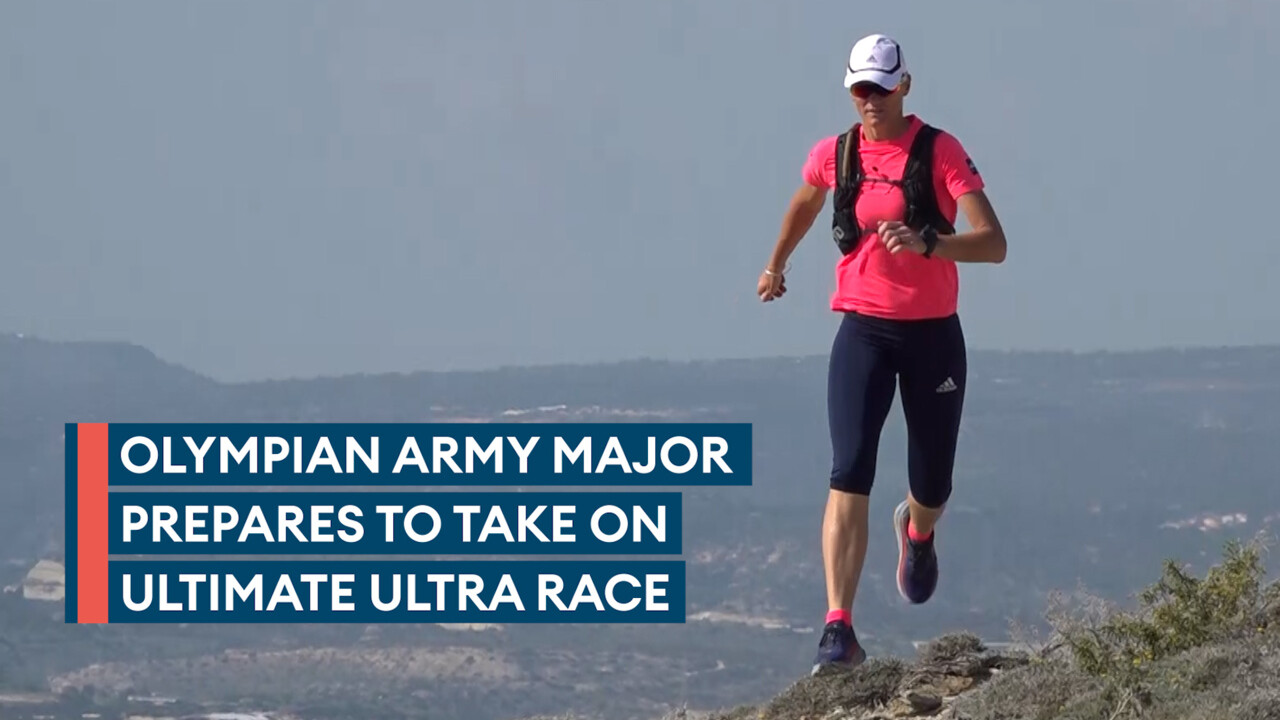
Maj Stanning's team is made up of three other British Army personnel and TV personality Judge Robert Rinder.
Maj Stanning said: "Why am I doing it?
"The Army Benevolent Fund approached me and said 'It's our 80th year, we want to do a big challenge, raise awareness and raise some money, will you do this challenge for us?'.
"I was like 'Oh absolutely' and then they told me, I was like 'Oh wow, that is a challenge'."
"I've been training since before Christmas, just gradually building up," Maj Stanning explained.
"For me, the biggest thing is staying in one piece and not getting injured.
"I may not be doing loads and loads of miles every week, but it's just gradually building up.
"It's time on my feet. Quite honestly, I will probably walk the majority of it. And that's probably where us in the military will do quite well.
"Let's not think we are all going to be ultra runners and break some records. It's about getting to the finish line."
by Sofie Cacoyannis
Login to leave a comment
Marathon Des Sables
The Marathon des Sables is ranked by the Discovery Channel as the toughest footrace on earth. Seven days 250k Known simply as the MdS, the race is a gruelling multi-stage adventure through a formidable landscape in one of the world’s most inhospitable climates - the Sahara desert. The rules require you to be self-sufficient, to carry with you on your...
more...2023 Western States 100 Men’s Preview
The Western States 100 is set for 2023. The iconic point-to-point, net-downhill course takes in 100.2 miles, 18,000 feet of climbing, and 22,000 feet of descending, as it starts at the Palisades Tahoe ski resort in Olympic Valley, California, and finishes at Placer High School in Auburn.
Environmental conditions will play into the race’s competitive story this year. With record snowfall throughout the upper elevations of the Sierra Nevada, the mountain range through which the race travels, runners will encounter plenty of snow over the course’s first quarter, along with numerous high water crossings lower down as all that snow melts.
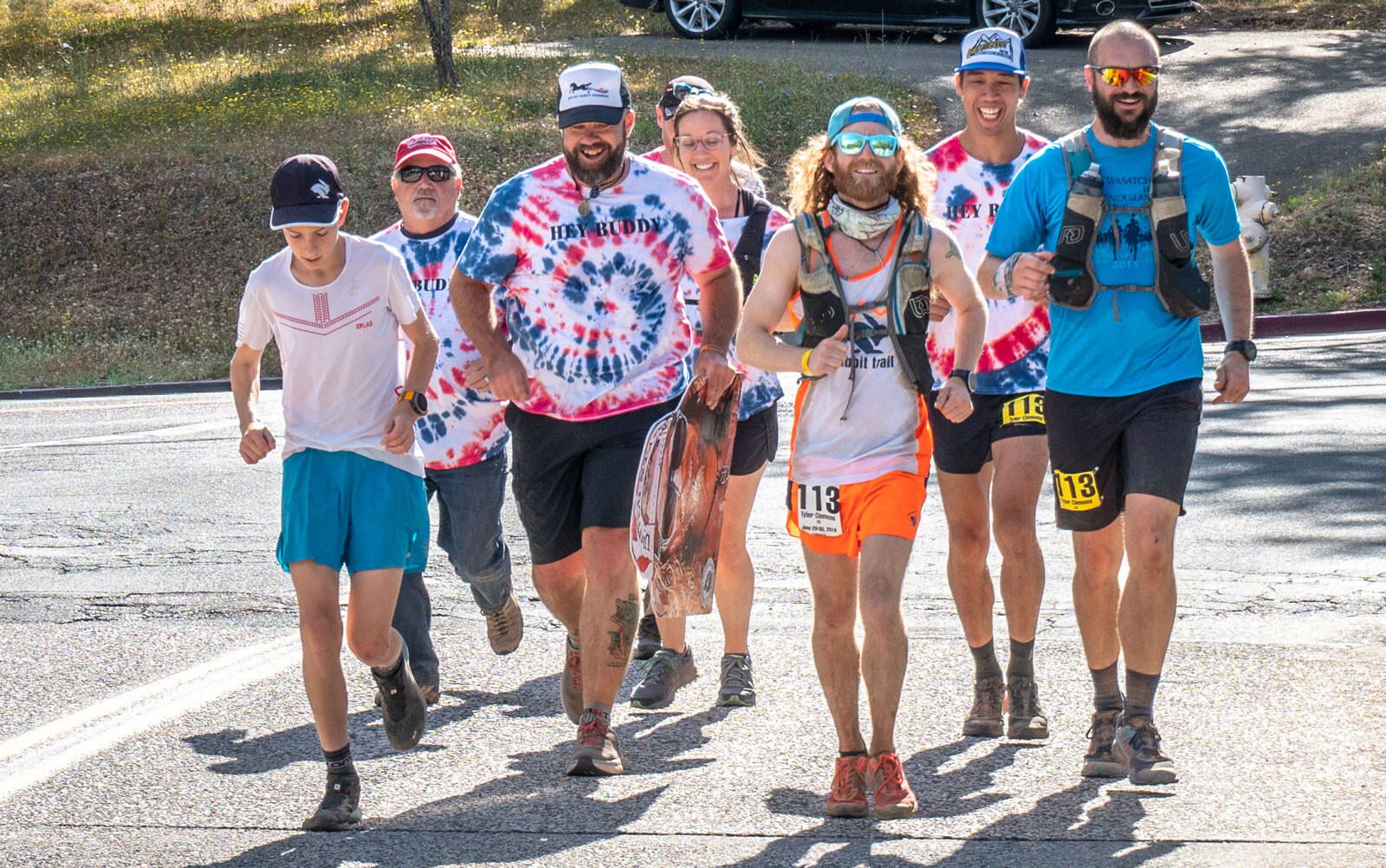
Some 16 miles of the course were burned over by last fall’s Mosquito Fire, leaving miles of shade-less terrain. And of course, there will probably be weather at play, with the event’s notorious heat likely to encompass the middle and lower elevations of the course.
The men’s race at last year’s Western States 100 was sharp, with just 50 minutes separating the first and 10th finishers. Seven of that stellar line-up are back this year, as well as some serious additions like the U.K.’s Tom Evans, French-Canadian Mathieu Blanchard, and Dakota Jones.
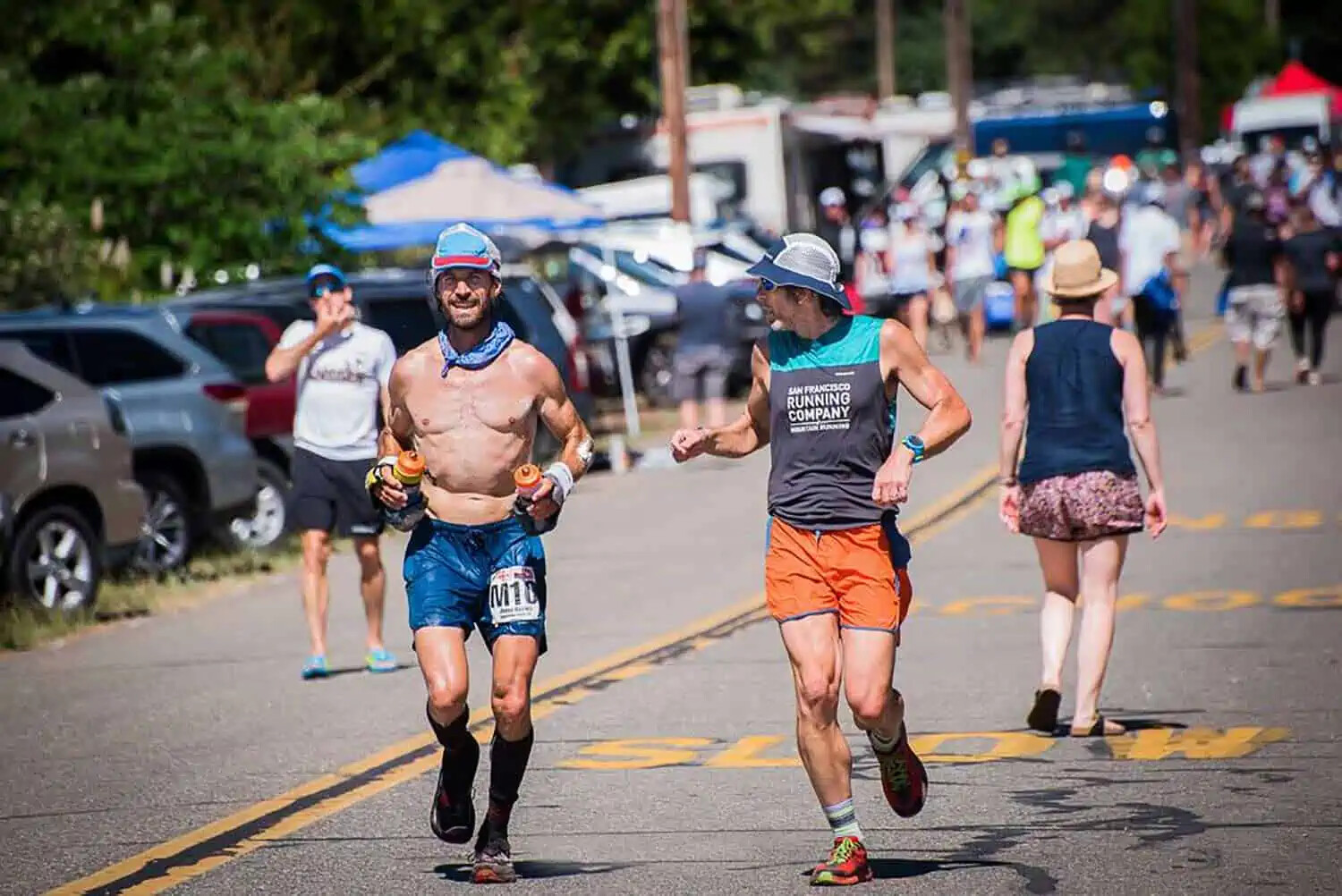
Although there are notable absentees including reigning champion Adam Peterman and course-record holder Jim Walmsley, the depth of this men’s field suggests it could be an even tighter race this year.
As you’d guess, iRunFar will be there to report firsthand on all the action as it unfolds starting at 5 a.m. U.S. PDT on Saturday, June 24. Stay tuned!
A special thanks to HOKA for making our coverage of the Western States 100 possible!
Be sure to check out our in-depth women’s preview to learn about the women’s race and, then, follow our live coverage on race day!
The top 10 runners in the 2022 race were invited to return for 2023. Unfortunately, reigning champion Adam Peterman is out with injury, and seventh-place Vincent Viet of France has opted not to return. It also looks like fifth-place Drew Holmen has withdrawn, as he just finished fifth at the Trail World Championships 80k, held in Austria 15 days before Western States.
Hayden Hawks – 2nd, 15:47:27
Last year’s second-place man, Hayden Hawks, was pretty jovial in his post-race interview about not being able to best race winner Adam Peterman. But without the reigning champion present on the start line, this could be Hawks’s year. Despite struggling with the heat last year, his finish time knocked two hours off his eighth-place finish from 2021, and there are lots of indicators that he could have more to offer on this course.
Some of his previous top performances include a 5:18 win at the 2020 JFK 50 Mile and a win at the 2018 Lavaredo Ultra Trail. So far this year, he’s warmed up by winning the Canyons 50k and taking second at the Tarawera Ultramarathon 100k.
Arlen Glick – 3rd, 15:56:17
Arlen Glick surpassed a lot of people’s expectations when he took third at Western States last year. Although he went into the race with bag of form in the 100-mile distance — having won the Javelina 100 Mile, the Mohican 100 Mile and the Burning River 100 Mile all in 2021 — this was his initiation into mountainous ultrarunning. He took to it very well, running a stormer to place third, and has since logged more mountain miles, taking second in the Run Rabbit Run 100 Mile later in 2022, before returning to the 2022 Javelina 100 Mile to place third.
Tyler Green – 4th, 15:57:10
Tyler Green took fourth at Western States last year, and forced third-place Arlen Glick into an uncomfortable sprint finish as he closed on him in the race’s final moments. In terms of placing, he was back from his second-place finish in 2021, but improved his finish time by about 14 minutes in his third go at the race. In 2019, he placed 14th in a time of 16:51, in what was a very fast year.
Following on from Western States last summer, he had a below par run at the 2022 UTMB, making it just inside the top 50, but showed he is back on form with a third-place finish at the 2023 Transgrancanaria. Last year in his pre-race interview he spoke about stepping back from his day job of teaching to focus more on track coaching and his own running, so that may have allowed him to come into this year’s race with better preparation than previous years.
Ludovic Pommeret (France)
Ludovic Pommeret, sixth at last year’s Western States, went on to inspire veteran racers everywhere with a commanding win at the 2022 TDS at age 47 — almost an hour clear of second place on the demanding route. Some of his other top performances include a win at the 2016 UTMB, where he also took fourth in 2021, and a win at the 2021 Diagonale des Fous.
He’s probably at the other end of the spectrum of Arlen Glick, in that his best performances have been on courses more mountainous than this one, but he’s still not to be underestimated.
Not many ultra-trail runners have made Kilian Jornet sweat to the degree that French-Canadian Mathieu Blanchard did at last year’s UTMB. The two battled it out all day for a close finish, in which Blanchard took second place — under the existing course record — thus earning his Golden Ticket into Western States. He’s been mixing it up a lot this year, taking second in the 146-mile Coastal Challenge Expedition Run stage race in Costa Rica, third in the Marathon des Sables, and running 2:22 in what looked like a fairly casual effort at the Paris Marathon.
by Sarah Brady
Login to leave a comment
Western States 100
The Western States ® 100-Mile Endurance Run is the world’s oldest and most prestigious 100-mile trail race. Starting in Squaw Valley, California near the site of the 1960 Winter Olympics and ending 100.2 miles later in Auburn, California, Western States, in the decades since its inception in 1974, has come to represent one of the ultimate endurance tests in the...
more...Tete Dijana looks to defend his crown at Comrades Marathon
The 2023 Comrades Marathon is nearly upon us, with thousands preparing to take on the down route from Pietermaritzburg to Durban.
This year’s race has an official race distance of 87.7km, as competitors race for victory in a number of prize categories – the men and women’s winners earning over €20,000.
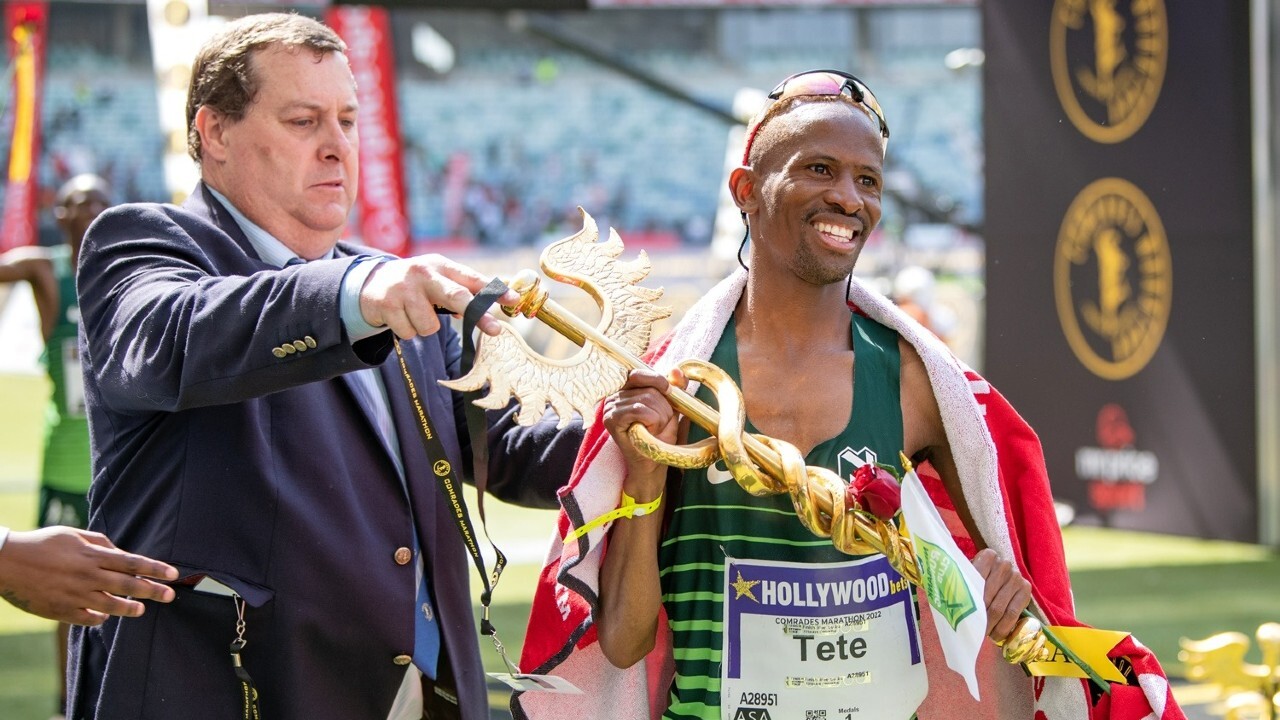
The men’s field this year features a number of past winners – as does the women’s – and promises to be an exciting race from start to finish.
Dijana aims to crown Nedbank again
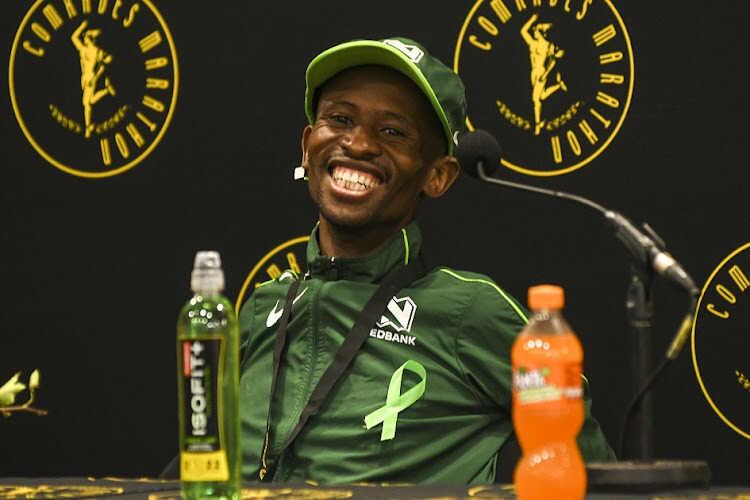
Last year saw five of the top seven finishers all come from the Nedbank running club, but it was Tete Dijana who proved chief amongst them.
He won last year’s race in a time of 5:30:38, with clubmate and 2019 winner Edward Mothibi three minutes behind him and Dan Matshailwe, another Nedbank runner, a further three minutes behind Mothibi.
Expect all those names to feature near the top three, with Nedbank set to work together once more to assert dominance over South Africa’s most famous ultra.
Perhaps the chief non-Nedbank competitor will be 2018 winner Bongmusa Mthembu. Fourth last year, he was the fastest non-Nedbank runner and has set himself more preparation time for the race this year, competing in the Om Die Dam 50km, which he won in 2:56:33.
He is a three time-winner at the Comrades Marathon, his first in 2014 when he was registered with Nedbank, and his other two coming in back-to-back wins in 2017 and 2018 for his current team Arthur Ford.
International talent
The last non-South African to win the race was Stephen Muzhingi, the Zimbabwean taking three titles in a row between 2009 and 2011, and it seems a tall order to expect anyone other than local runners to take the title.
But regardless, there are those who will be competing. British runner Shane Cliffe has finishers in the Lakes in a Day and The Grand Tour of Skiddaw to his name.
There’s also Simon Brown, who has run the Marathon des Sables and qualified for the cancelled Western States 100 in 2020, and experienced runner and coach Ian Sharman.
by Olly Green
Login to leave a comment
Comrades Marathon
Arguably the greatest ultra marathon in the world where athletes come from all over the world to combine muscle and mental strength to conquer the approx 90kilometers between the cities of Pietermaritzburg and Durban, the event owes its beginnings to the vision of one man, World War I veteran Vic Clapham. A soldier, a dreamer, who had campaigned in East...
more...Nine-time winner of Morocco's "Marathon des sables" race abandons
Shocking news struck the runners of the Marathon des Sables late Thursday (Apr. 27). 9-time winner of the race, Rachid El Morabity threw in the towel a few minutes after being caught red-handed with food in the bag.
The goal of the race is to cover 250 km in 7 days across the Sahara, in food self-sufficiency. Any food provided by a third party is therefore prohibited. But an unannounced control operated in the tent of the Moroccan proved to be positive.
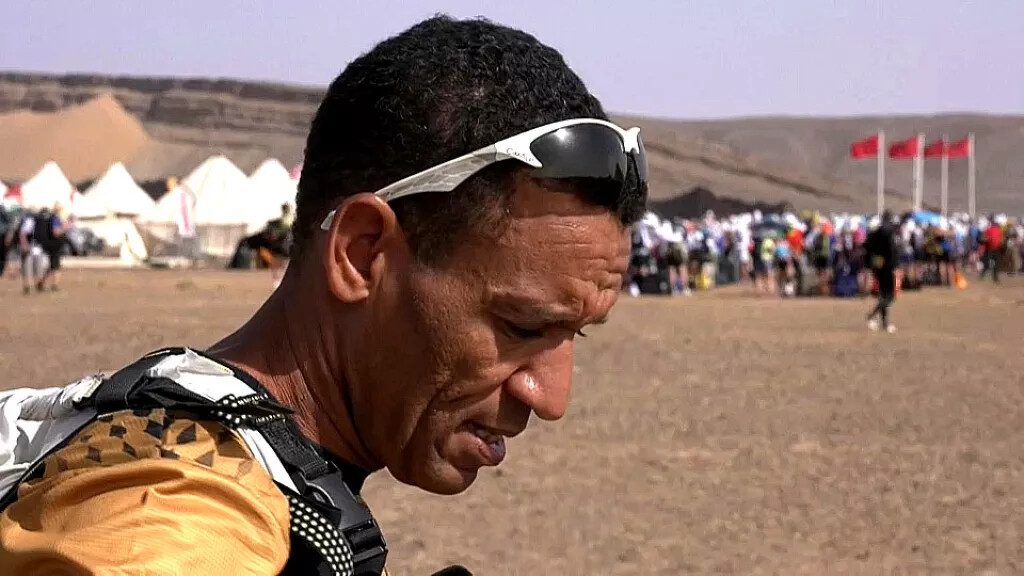
The sanction of the organization was immediate: a penalty of 3 hours sealing the end of the dreams of tenth title for Rachid El Morabity.
He who was aiming to join his compatriot Lahcen Ahansal in the legend of the event. El Morabity's teammate and compatriote, Aziz El Akkad, has decided to abandon.

Rachid El Morabity's younger brother, Mohamed, remains alone at the top of the ranking, 3 minutes 17 seconds ahead of his direct contender Aziz Yachou.
In the women's ranking, French marathoner Maryline Nakache is first, get ahead of Moroccan Aziza El Amrany and Japanese Tomomi Bitoh by 30 minutes.
by Africanews and Pierre Michaud
Login to leave a comment
Marathon Des Sables
The Marathon des Sables is ranked by the Discovery Channel as the toughest footrace on earth. Seven days 250k Known simply as the MdS, the race is a gruelling multi-stage adventure through a formidable landscape in one of the world’s most inhospitable climates - the Sahara desert. The rules require you to be self-sufficient, to carry with you on your...
more...Ultra running is exploding in popularity around the world, but what actually is an ultramarathon?
The term Ultra covers a broad range of races, from mountains to road
Ultra running is fast becoming a mainstream sport. Once, it was the realm of a few crazy runners, and not the pastime of everyone from your boss to your neighbour. But what actually is an ultramarathon?
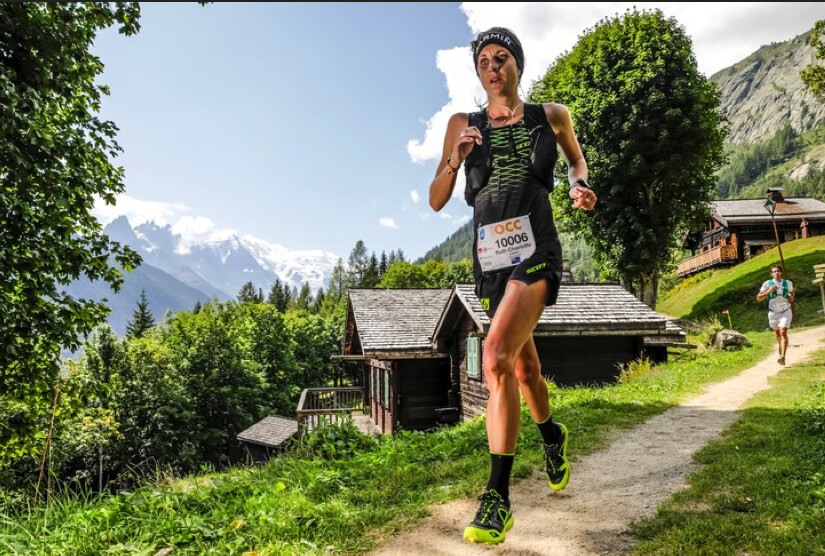
How long is an ultramarathon?
An ultramarathon is anything longer than a marathon, which is 26.2 miles (42.195km). So, you could complete a marathon and run back to your car and you’ve technically run an ultra distance.
Typically, ultramarathons start at 50km and go up from there. Standard distances are 50km, 100km and 161km (100 miles), the latter often being referred to as a “miler”.
While a marathon is never longer than 26.2 miles, ultras tend to vary a bit. For example, the Hong Kong 100 is in fact 103km. And the Ultra Marathon du Mont Blanc, a miler, is in fact 171km. Others are a bit shorter than advertised, too.
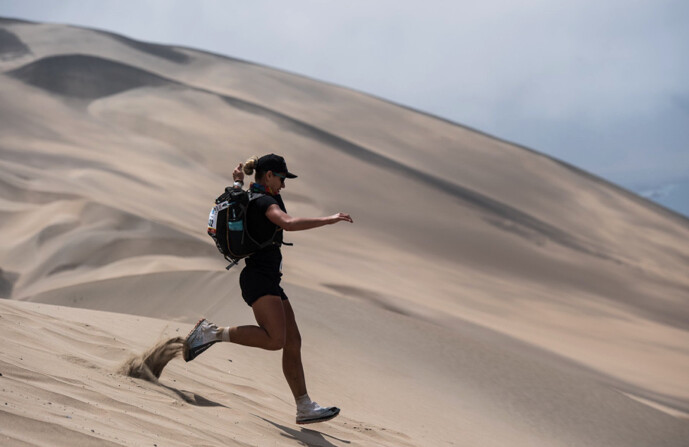
Aside from the above three types, there are ultra races of all sorts of distances and formats. As long as it’s more than a marathon, the distances and formats can be limitless.
An increasingly popular format is 250km split over stages, such as the Marathon Des Sables. Runners complete different distances each day, some less than an ultra, and sleep at night.
As the sport continues to grow, others try to push the boundaries – such as the 298km Hong Kong Four Trails Ultra Challenge, which is non-stop and has no support on the trails. Runners finish the distance in between around 48 and 70 hours.
The formats are becoming increasingly imaginative. A backyard ultra, for example, is around a 6.7km loop. The runners start on the hour every hour until there is just one runner left, so the distance is not set. It keeps going and going. Runners have gone on for more than 80 hours.
Outside organised events, runners often complete ultramarathons just for fun, to set a personal best or a Fastest Known Time (FKT), which is ultra terminology for a specific course record. This can be anything from the 44km Hong Kong Trail, which takes a few hours, to the 4,172km Pacific Crest Trail, which has an FKT of almost two months.
What terrain is an ultramarathon on?
With an infinite range of distances come infinite terrains. An ultramarathon can be road, flat, track, pavement, mountain, trail, snow and more. As long as you can run on it, you can run an ultramarathon on it.
A famous road ultramarathon is the 246km Spartathlon. It follows the legendary route run by Pheidippides, who ran from Athens to Sparta before the Battle of Marathon in Ancient Greece, thus inventing the marathon.
The most high-profile mountain ultra is the Ultra Marathon du Mont Blanc, which has a total of 10,040 metres accumulative elevation gain in the Alps.
Track ultras often take the format of a set time rather than distance. For example, how far you can travel in 24 hours, round and round the same athletics track.
When Zach Bitter set the 100-mile world record, which has since been broken again, he ran it around a 443m track by doing 363 laps.
The distances and terrains are so varied race to race they are essentially different sports. Kilian Jornet is considered one of the best ultra-mountain runners ever, but comparing him with Yiannis Kouros, considered one of the best ultra road runners ever, is like asking who is better at football: Tom Brady or Lionel Messi.
Is an ultra harder than a marathon?
The word ultra refers to the distance, not difficulty. An ultramarathon is inherently hard, but not inherently harder than a marathon or any other distance for that matter.
If you have a specific and demanding finishing time in mind for your marathon, you will have to stick to a specific split, keep your legs spinning and spinning, all the time concentrating on your pace and pushing your body.
Is that easier or harder than a 24-hour 100km over mountains, with variation in terrain and elevation, when you walk some parts and rest at check points?
What about a 5km? If you want to run a fast 5km, you will be at your absolute limit for the entire time and collapse over the finish line.
Non-runners often think an ultramarathon is the “next step” for runners looking for a new challenge. Searching for a faster time is just as challenging as searching for a longer distance.
Either can be harder than the other – it’s down to the runner.
The same is true within ultra running. Ruth Croft, one of the best runners, dominates races around 50km. She was repeatedly asked when she would do a 100 miler once she had “completed” a 50km. Croft resisted the urge to cave to the pressure to run further until she was ready, understanding that fast and far are two often incomparable metrics.
When you consider all of the above, the simple definition of “longer than a marathon” does not quite do justice to the massive range of events encapsulated by the term ultramarathon.
Login to leave a comment
2022 Marathon des Sables Women’s Results
On the women’s side, first-time Marathon des Sables entrant Anna Comet (Spain) was untouchable. Comet ran in a league of her own for the majority of the race, building a lead of up to 53 minutes by the end of Stage 4. Sylvaine Cussot (France) set an equally solid course all week, generally finishing several minutes behind Comet but well in front of the rest of the field, to hold in second place all week.
The gun sounded at the 2022 Marathon des Sables’ fifth and final competitive stage on Friday, April 1. The first finishers broke the tape in the early afternoon, Moroccan local time. The final, noncompetitive Stage 6 takes place on Saturday, April 2.
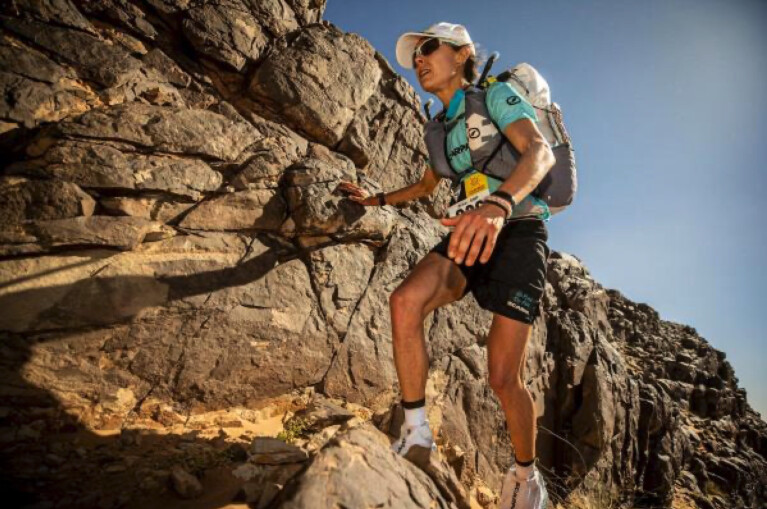
Thanks to Anna Comet, the 2022 women’s Marathon des Sables was never close. She came into Stage 5 leading by almost an hour, and then broke the tape over an hour before second-place finisher Sylvaine Cussot in the cumulative rankings.
Aziza El Amrany (Morocco) rounded out the podium, a sharp debut performance for this Moroccan breakout runner.
2021 MdS women’s winner Aziza Raji (Morocco) finished fourth and Manuela Vilaseca (Spain) came in fifth.
Bethany Rainbow (United Kingdom) finished sixth as the only other woman to run the race in under 30 hours. She ran a valiant final stage to come in under the gun, finishing just 4:30 behind Comet for second place in the stage.
Login to leave a comment
Marathon Des Sables
The Marathon des Sables is ranked by the Discovery Channel as the toughest footrace on earth. Seven days 250k Known simply as the MdS, the race is a gruelling multi-stage adventure through a formidable landscape in one of the world’s most inhospitable climates - the Sahara desert. The rules require you to be self-sufficient, to carry with you on your...
more...2022 Marathon des Sables Results: Mens
The Sahara Desert’s Marathon des Sables (MdS) is as scorching as it is revered. After an October comeback last year following a 2.5-year COVID-19-induced hiatus, the race returned to Morocco again this March.
Temperatures well above 100 degrees Fahrenheit and plenty of blistering sunshine are hallmarks of the seven-day, 155-mile desert stage race. Finishing it — or simply running in it — is no joke. Each year, race organizers deploy 120,000 liters of water, a support staff numbering in the hundreds, and a wide array of vehicles, aircraft, and even camels to monitor the action and keep runners safe.
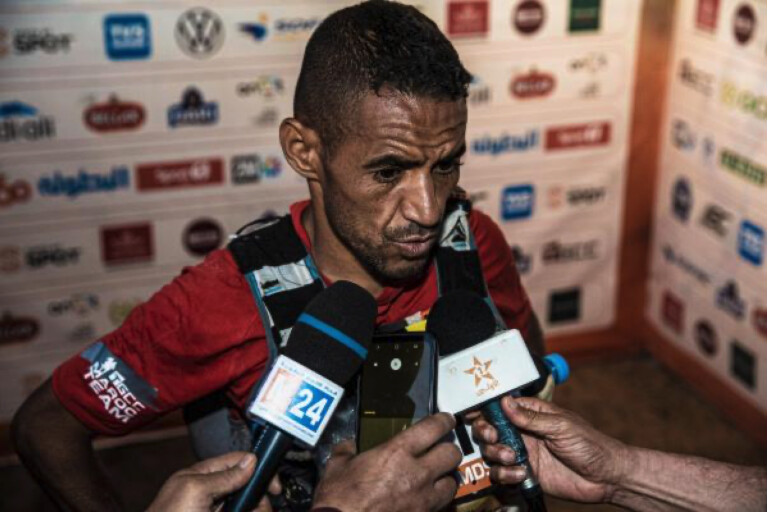

Last year, brutal heat and a virulent stomach bug caused an unusually high 40% dropout rate. In this edition, conditions in the field appear somewhat more stable. However, challenging desert weather still wreaked havoc at times throughout the week of racing.
The 2022 Marathon des Sables started with fair weather on Sunday, March 27. But high heat and howling wind beset the race’s second stage the next day. Though only moderately long, Stage 2 also negotiated plenty of steep terrain.
The wild second stage scrambled runners, especially some perennial race favorites. Eight-time MdS winner Rachid El Morabity (Morocco) led the field coming out of Stage 1 but lost 9 minutes during the marathon-length Stage 2. He landed in third place behind his younger brother, Mohamed El Morabity, a first for the pair as Mohamed has finished second in this race four times, and each behind his winning brother. Mohamed maintained his lead — by a razor-thin margin of 37 seconds — through Stage 4 on Wednesday.
Rachid El Morabity stormed back to win, outpacing the rest of the field — and his younger brother — in the race’s final stage. Mohamed led by around half a minute at all checkpoints on Stage 5, but Rachid overtook him late, and then pulled away.
His Marathon des Sables dominance continues — it’s the ninth time he’s won the race.
Mohamed El Morabity played second fiddle yet again. He claimed his fifth runner-up MdS finish all-time.
Aziz Yachou (Morocco) was the only other runner to finish under 19 hours cumulatively. A strong Stage 5, where he took second, left him 4 minutes back of Rachid El Morabity’s week-long pace. This is Yachou’s second MdS effort, and he improved on his fourth-place debut in 2021.
Merile Robert (France) took fourth and missed the podium for the first time since 2017, and Jordan Tropf (United States) took fifth.
Login to leave a comment
Marathon Des Sables
The Marathon des Sables is ranked by the Discovery Channel as the toughest footrace on earth. Seven days 250k Known simply as the MdS, the race is a gruelling multi-stage adventure through a formidable landscape in one of the world’s most inhospitable climates - the Sahara desert. The rules require you to be self-sufficient, to carry with you on your...
more...Running 250 km through the desert: it’s time for the Marathon des Sables
It all started in 1984 when Patrick Bauer (who was 28 at the time) took on a completely self-sufficient 12-day journey across the Sahara Desert, covering 350 km on foot. Two years later the first Marathon des Sables (MDS) was born, with 23 “pioneers” taking on a similar challenge.
Since then, Bauer’s event (he remains the race director) has continued to grow, with a record 1,300 competitors taking part in the 30th-anniversary race in 2015.This year’s race, the 36th edition, will feature 1,100 competitors from 50 countries who will, like the 25,000 athletes who have participated in the event since 1986, take on the 250 km course carrying their food and equipment. Each day race organizers provide the athletes with water and put up a tent for them to sleep under – otherwise they are on their own.
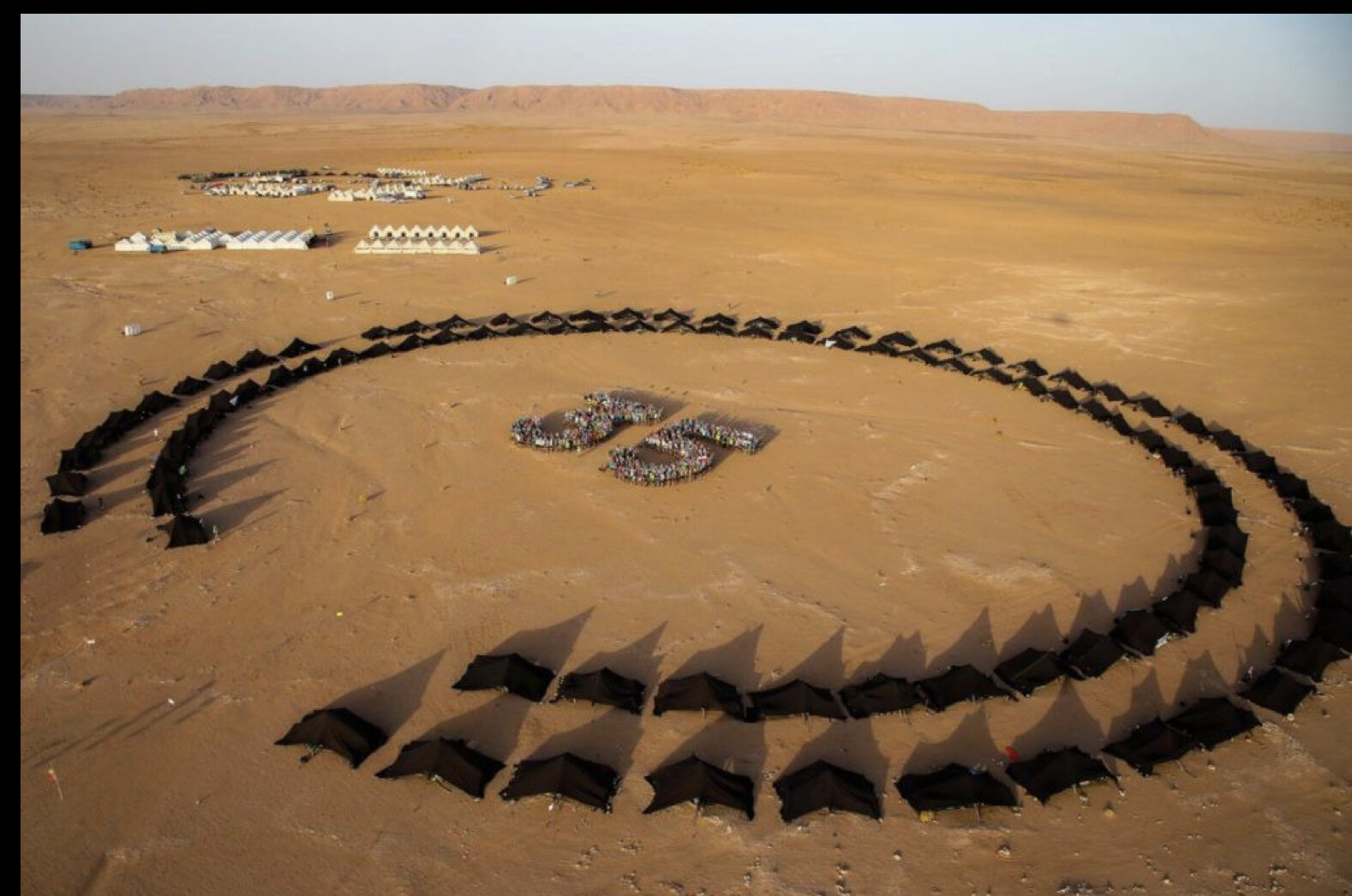
There are five stages in the race, along with a “solidarity” or charity stage that does not count for the overall ranking of the race. The stages range from 30 to 90 km. The athletes don’t know the official course until the day before the race when it is officially announced, but they are guaranteed (according to the event media guide):flat terrain, often hard and stony and suitable for “real runners” as opposed to “trail runners”
sand (sometimes hard or crusted, but most often soft) that they will have to master (for example by opting for shaded areas so they sink less because when the sun heats the sand, it becomes softer)
small, normal and giant sand dunes that will make all competitors draw on their reserves
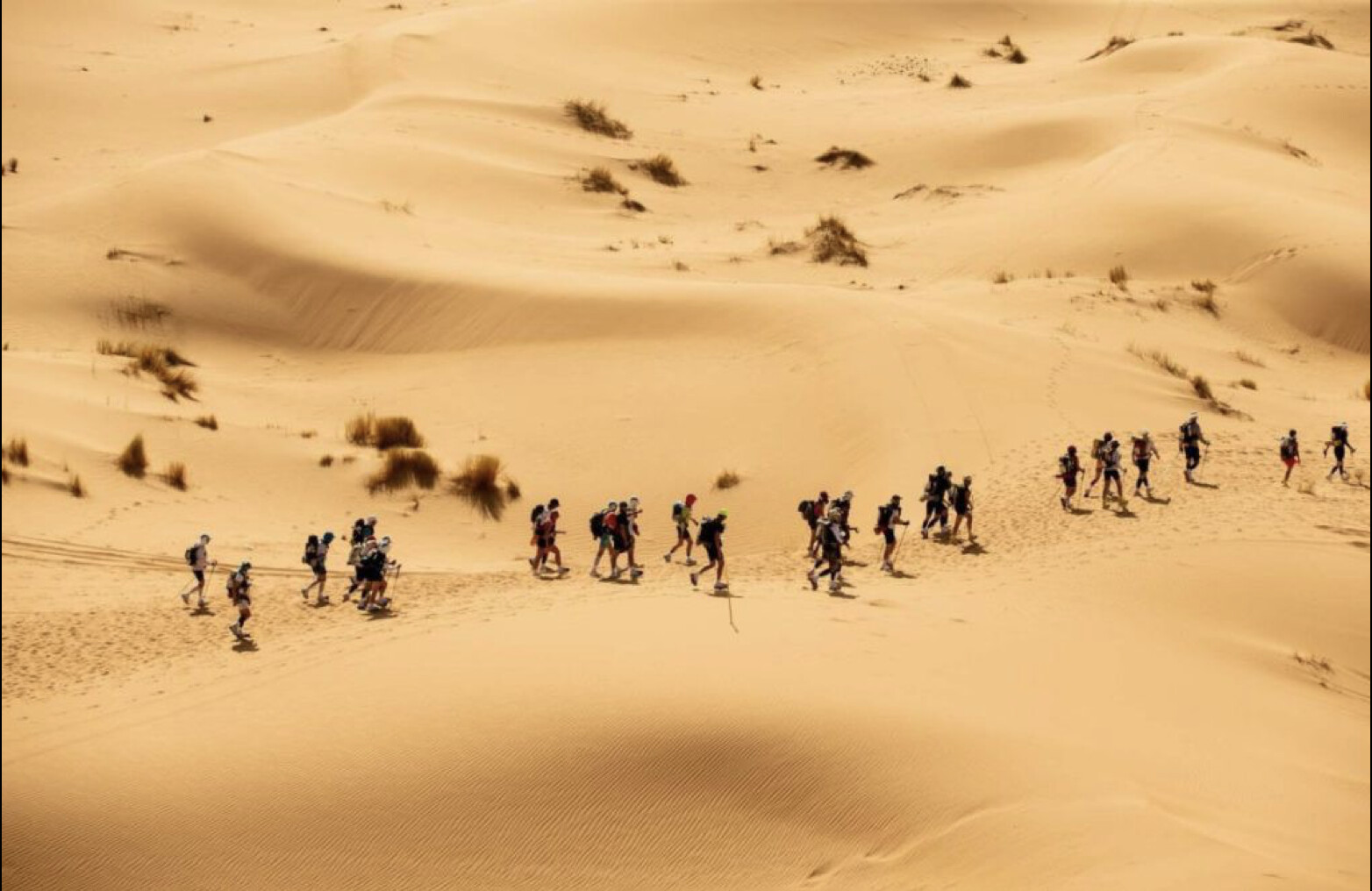
ascents and descents, not very long but often steep, sometimes sandy, sometimes stony
technical sections over rocky escarpments and along crests (the authentic “trail running moments” of the MDS)
gorges that will provide a beneficial and life-saving shade, when competitors pass through them, and dried wadis (supposedly dried river beds… but some years, a trickle of water is flowing!) where competitors can find some vegetation. The daily temperatures are typically in the 30s, but can rise to as much as 45 degrees Celsius.
At night the temperature can drop to 5 C or less. Athletes must carry a week’s worth of food, a sleeping bag, a compass, knife, lighter, whistle, headlamp, venom extractor, signalling mirror and sunscreen. They are also provided with a GPS beacon so organizers can keep track of the athletes at all times. The race takes place in the middle of the desert so that it can be held in total isolation and guarantees that athletes cannot receive any assistance.COVID-19 and the MDS
Last year’s 35th edition took place last fall after being postponed three times. It was a tough year for the event, with an athlete suffering a cardiac arrest during the first stage, then a gastrointestinal bug ripping through the field, leading almost 50 per cent of the participants to pull out, far higher than the normal 5 to 10 per cent attrition rate the event typically sees.
2022 Coverage
Triathlon Magazine Canada editor Kevin Mackinnon will be on hand to cover this year’s race, one of the 65 accredited journalists covering this year’s MDS. He’ll be providing updates and photo galleries through the first few days of racing in Morocco. There will be 15 Canadians competing at the 2022 MDS. Stay tuned for more from Morocco in the coming days.
by Running Magazine
Login to leave a comment
Marathon Des Sables
The Marathon des Sables is ranked by the Discovery Channel as the toughest footrace on earth. Seven days 250k Known simply as the MdS, the race is a gruelling multi-stage adventure through a formidable landscape in one of the world’s most inhospitable climates - the Sahara desert. The rules require you to be self-sufficient, to carry with you on your...
more...Last Minute Halloween Costumes For Trail Runners
Need something for your kiddo's trick-or-treating? Mandatory office Halloween soiree? First post-covid social engagement? Try one of these easy-to-assemble trail running Halloween costumes!
Basic Trail Bro: Don a Ciele hat, and rock some bright Goodr's with a confusingly non-technical button-up shirt and jorts if you're feeling spicy. BYOB - a super dank IPA (the hazier, the better) swaddled in a coozy you got in a race swag bag. You're probably from Boulder. Or Flagstaff. (Portland variation: add a rain jacket and a slightly better beer.) Make sure to track your trick-or-treat excursion on Strava and don't stop talking about your podcast.
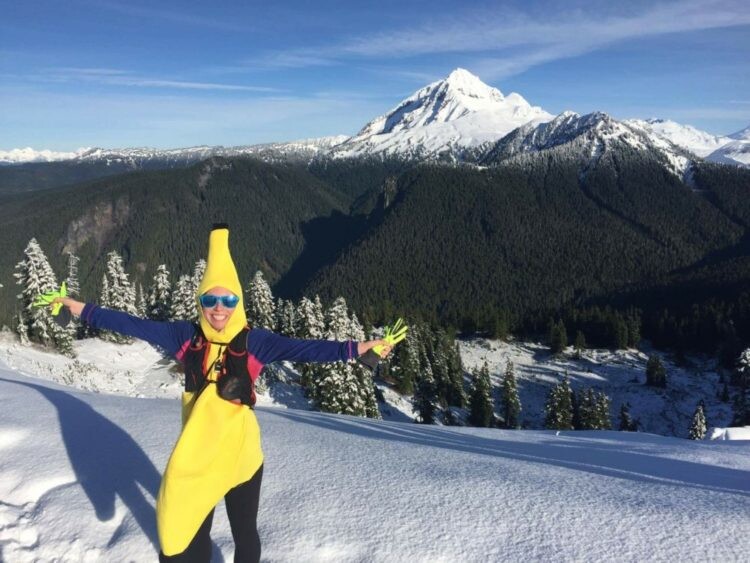
The Courtney: Throw on a tee-shirt and your comfiest basketball shorts and BYO candy corn. Nachos optional.
The Ultra Ultra Runner: Grab your trekking poles, headlamp, gaiters, neck gaiter, waist-light, UPF hat with sunshade, taped-seam windbreaker, sunglasses, clear glasses, 12-liter vest, hip-belt, flasks, bladder, body glide, ramen noodles, gels, spare socks, spare shoes, space blanket, sunscreen, arm sleeves and wind pants. Though you may be dressed like you're about to run the Marathon Des Sables, you could also just be out for a casual jog. You're a human drop-bag: ready for anything.
The Crewmate: Same as above, but carry everything around in your arms the entire night and try to hand everybody you see quesadillas and Skratch.
The Emelie: Grab your S/O and dress entirely in S/Lab, or skimo suits with a babybjorn. Still be faster than everyone.
The Rookie Trail Racer: Grab some long shorts, a sleeveless Nike shirt, and blast the tunes in your Beats By Dre headphones (around your neck, so everyone can hear). Forget the hydration pack, just bring a good ol' Gatorade bottle and be sure to ask everyone "How many miles is 25k????".
The Harvey: Just circle your block 354.2 times while trick-or-treating
Sexy Minimalist Trail Runner: Just split shorts and a handheld. That's it.
The Influencer: This costume is #Sponsored. Flip up the brim of your colorful hat, and snap a pic with your favorite beet-based energy bar or isolated cricket protein, preferably while gazing out at the ocean, or from a summit. Keep your phone and significant other at the ready for any potential photo ops. Bonus points if you have a cute dog who knows a TikTok dance. Make sure all product logos are visible at all times.
Sexy IPOS: Nothing but a gravel bike and KT tape.
The Media Mogul: POV: Your YouTube channel is just about to go viral. Grab your go-pro and lace up your trail runners, because you're about to get a lot of B-roll. Wear a Sony TX90000 BD around your neck, and be sure to periodically change lenses for no particular reason. You're a human steady-cam who'll do anything to get the shot.
The Local Legend: To embody the low-key vibe of the frustratingly-fast unsponsored hometown hero, pull on a of worn-out trail runners and tattered shorts. Wait, is that a Team USA Shirt? Who is this runner? How many FKT's do they have? OOOPS! Someone just stole your CR!
by Trail Runner Magazine
Login to leave a comment
Marathon des Sables Wrapup
After a 2.5-year break due to the COVID-19 pandemic, it was with great anticipation that the 2021 Marathon des Sables took place this week. The famous desert race, which runs in the Sahara Desert of Morocco, travels 155 miles (250 kilometers) over seven days, traversing sand dunes and stone-filled plains in an arid climate where mid-day temperatures easily reach 120 degrees Fahrenheit (48 degrees Celsius).
Each day, a mobile bivouac is erected in the desert, which serves as the day’s finish line, campground for the night, and the following day’s starting line. There are six stages total, and five of them are competitive stages. The final stage is an untimed charity stage. Participants must carry their own equipment including food, camping materials, and survival gear along with water rations supplied by the race organization.
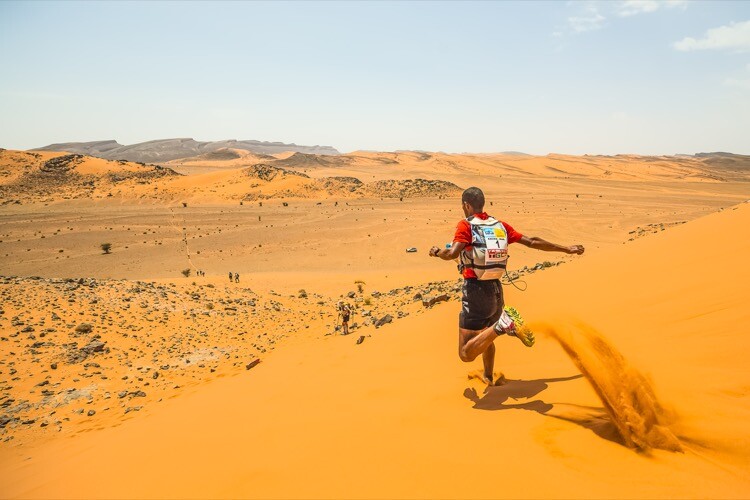
Typically, the race takes place in April, which is spring in the Sahara Desert. This October edition was said to be hotter and drier than usual for this race and this time of the year. In addition to the heat, a stomach virus ravaged many of the participants. By the end of the week, dropouts amounted to over 40% of all starters, an unusually high drate for this particular race.
Sadly, the race claimed the life of one runner due to cardiac arrest. The French man, in his fifties, was an experienced ultrarunner who had met the medical requirements necessary to start the race. iRunFar covered this story earlier in the week.
For the first three days of the 2021 edition, it looked like parity might define the race. Moroccan brothers Rachid El Morabity and the younger Mohamed El Morabity ran close together, leading the rest of the men’s field by just minutes. On the women’s side, Morocco’s Aziza Raji held a bigger, but not insurmountable, half-hour lead over Aicha Omrani (France) and Hassna Hamdouch (Morocco) in second and third.
The stage was set for shakeups in the grueling 50-mile Stage 4. However, Raji and the El Morabity brothers were about to render the outcome academic. At the end of Stage 4, just 15 minutes separated Rachid and Mohamed El Morabity from each other in first and second overall — but the rest of the field lagged behind by over an hour. Meanwhile, Raji had built her lead over the women’s field from less than an hour to a mind-boggling four-plus hours.
In the end, Rachid El Morabity took the win, finishing with a time of 21:17:32. Mohamed took a narrow second in 21:32:12, less than 15 minutes behind his older brother. This marks Rachid El Morabity’s eighth win of this iconic sand race, and Mohamed El Morabity’s fourth 2nd place behind his brother.
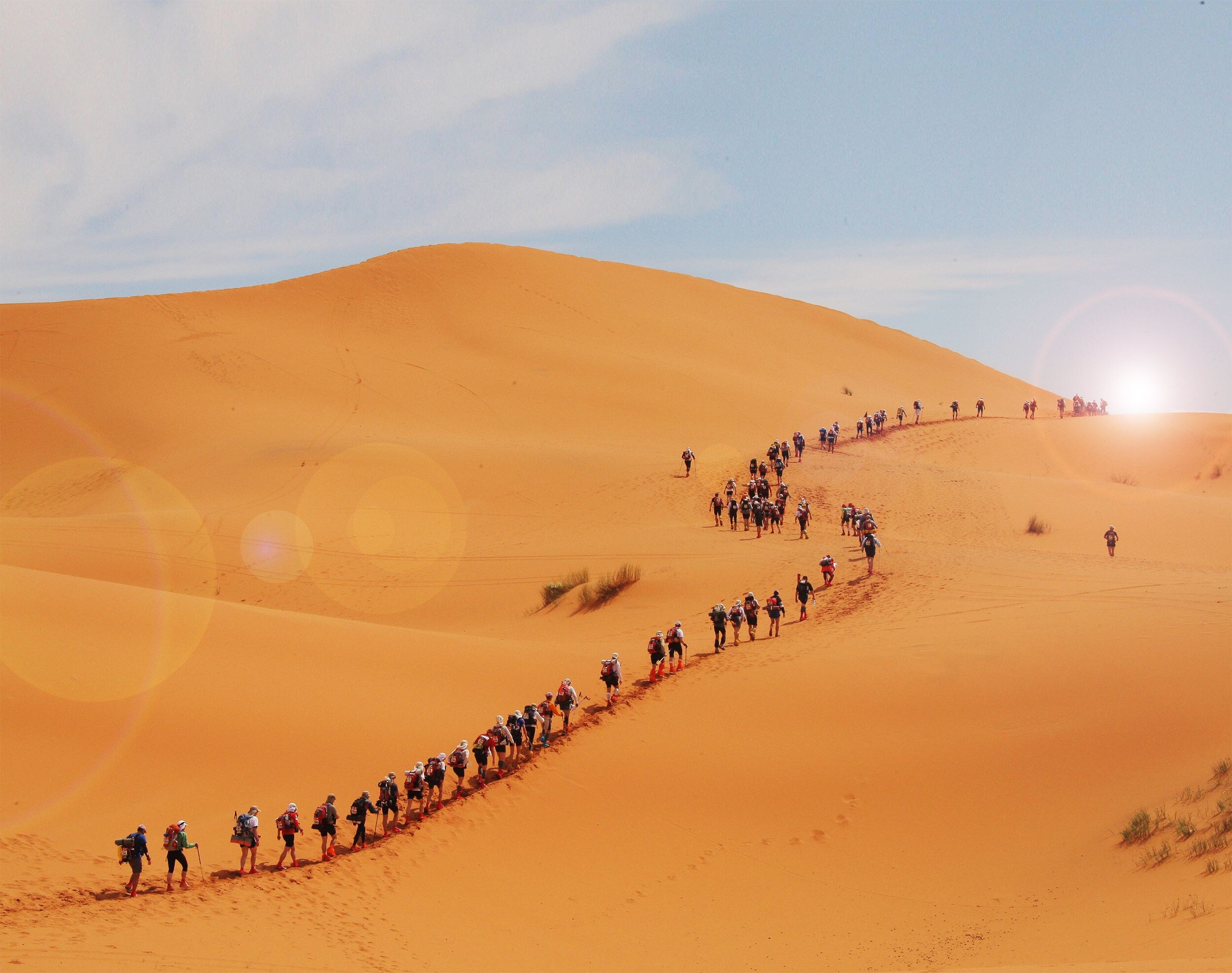
Merile Robert (France) was the lone non-Moroccan on the men’s podium, a position with which he’s familiar. This marks his fifth Marathon des Sables finish, with his top previous finish also third behind the El Morabity brothers in 2018.
Aziz Yachou (Morocco) took fourth place, less than two minutes out of podium position, in what was an incredible breakout performance. According to his social media, Yachou received an hour’s penalty during the race due to losing an item of his required kit, which makes this podium near miss even more fascinating. (Required kit and the penalties for missing or losing items are clearly communicated by the race organization before the race.)
Mathieu Blanchard (France, lives in Canada) rounded out the top five, though he was a distant two hours and 20 minutes behind fourth place. He said on social media he suffered the stomach virus during Stage 4. Blanchard has had quite the 2021, following up his third place at the 2021 UTMB with this performance.
Notably, 10-time Marathon des Sables winner and Moroccan sand running legend Lahcen Ahansal finished ninth in the age 50-59 category with a time of 38:16:32.
Aziza Raji demolished the women’s field with a winning time of 30:30:24. It was Raji’s first win. She was second at the last edition and had a few top-five finishes before that. She’s only the second Moroccan woman in the history of the race to win it, after two-time women’s champion Touda Didi.
Tomomi Bitoh (Japan) took second in 34:39:17, moving up in the cumulative standings during the 50-mile Stage 4 and marathon-distance Stage 5 through a well-paced week of racing.
Aicha Omrani finished third in 35:47:48; remarkably, she finished the 2011 Marathon des Sables in nearly the double the time it took her finish this edition.
Hassna Hamdouch and Elise Caillet (France) rounded out the top five.
Login to leave a comment
Marathon Des Sables
The Marathon des Sables is ranked by the Discovery Channel as the toughest footrace on earth. Seven days 250k Known simply as the MdS, the race is a gruelling multi-stage adventure through a formidable landscape in one of the world’s most inhospitable climates - the Sahara desert. The rules require you to be self-sufficient, to carry with you on your...
more...Man dies while competing in grueling, multi-day race across the Sahara Desert
An unnamed competitor in the 2021 Marathon des Sables died on Monday, marking the third fatality in the race's 35-year history.
Known as one of the most difficult footraces in the world, the Marathon des Sables takes place each year in Southern Morocco's Sahara Desert. The race covers approximately 250 kilometers (about 155 miles) over a period of about seven days.
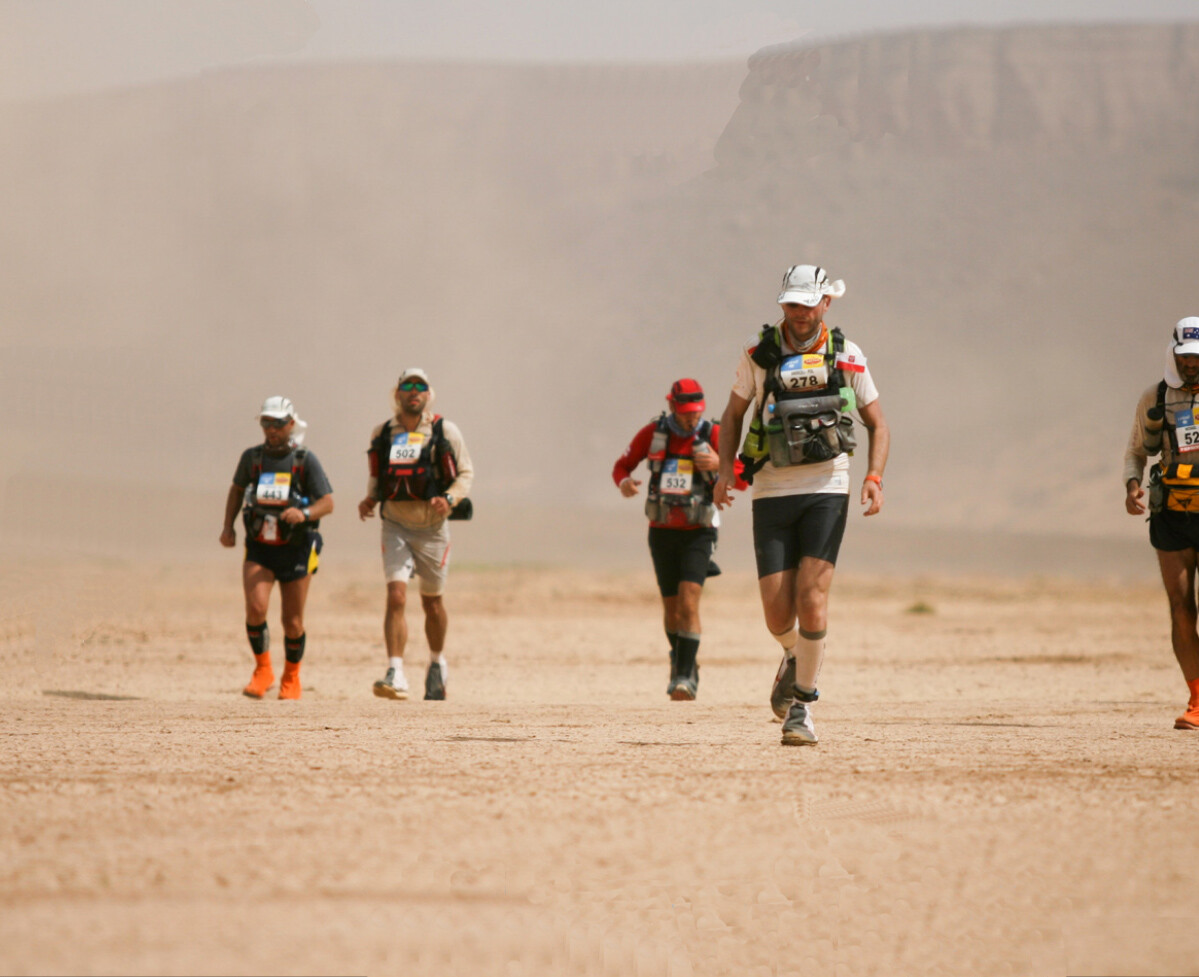
Because it exceeds the traditional marathon distance of 26.2 miles, the Marathon des Sables qualifies as an "ultramarathon." The level of prolonged exertion to complete an ultramarathon, particularly when combined with extreme environmental conditions, can take a severe toll on one's body, causing potentially dangerous physical and psychological issues.
The Marathon des Sables reported the tragic incident on Monday, noting that the competitor suffered "cardiac arrest in the dunes of Merzouga" following "a fainting spell."
They added that the man was "in his early 50's and had fulfilled all the medical requirements for the race." He had already completed the first stage of the competition "without the need for medical assistance" at the time of the incident.
"After he collapsed, he was immediately rescued by two other competitors who are also doctors, who triggered the SOS button on his beacon and started the heart massage protocol," said officials from the event.
The Marathon des Sables Medical Director arrived at the site "within minutes by helicopter and took over from the participants." However, despite "45 minutes of resuscitation," the competitor was pronounced dead by medical staff.
The man's identity has been kept secret "out of respect" for his family, who has reportedly been informed of his passing.
Following the incident, Race Director Patrick Bauer broke the news to participants, leaving "staff and competitors...extremely affected."
While the race is planned to continue despite the tragedy, competitors will participate in a minute of silence before the beginning of the third stage.
As noted by The Conversation, ultra-endurance activities put a range of stresses on the body, physically and psychologically. "As growing numbers of competitors look to push themselves to their absolute limit, and [organizers] seek new challenges to enable them to do so, there is always going to be some risk," wrote the publication.
However, "the main cause of death during ultramarathons...is actually sudden cardiac death." Consisting of 43 percent of ultramarathon deaths, these cardiac arrests are usually sustained by those with unknown heart conditions.
Other potential dangers include environmental conditions, psychological stress, sleep deprivation, water and sodium loss and tissue damage.
In order to participate in the Marathon des Sables, competitors must provide "a medical certificate issued by the organization stating their ability to participate and a resting ECG report." Throughout the race, each individual is responsible for providing and carrying their own food, sleeping equipment, and other gear.
by Newsweek
Login to leave a comment
These races are epic and why ultrarunning is soaring in popularity
The events can be gruelling and even dangerous, yet more and more people are signing up
John Stocker hadn’t slept in three-and-a-half days when he finally crossed the finish line after running more than 337 miles in an ultramarathon event in Suffolk, stopping only at brief intervals for food and rest.
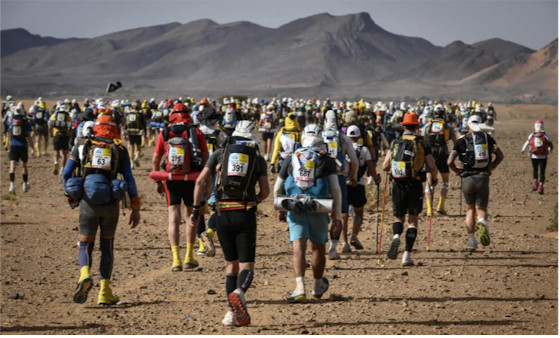
Of the 123 people who started the race in Knettishall Heath on 5 June, he was the last person still running 81 hours later on Tuesday evening, and had to summon all of his physical and mental strength to get around the last lap.
“Your tiredness just takes over. And then I clipped my toe and went down on the concrete. I laid there thinking I wasn’t going to be getting back up,” the 41-year-old personal trainer said, as he recovered at home in Bicester. “But the whole reason I do these ultras is to show my kids that they should try to achieve as much as they can, and not be told by anyone that they can’t do something. That’s what kept me going.”
Ultrarunning has soared in popularity, with a report in May showing a 345% increase in participation globally over the past 10 years and thousands of events taking place annually. Meanwhile, participation in 5Ks has declined since 2015, and participation in marathons has levelled off.
The term broadly refers to any race over the length of a marathon, and can come in many shapes and forms – including the six-day, 251km Marathon des Sables across the Sahara, and the Spine Race across the Pennine hills covering 431km.
“It has been an explosion. When I came to ultrarunning about 14 years ago, I did a Google search and found about 60 races. Now we estimate there’s probably about 10,000,” said Steve Diedrich, the founder of the website Run Ultra. “The pandemic put people into two categories: the people who sat on the couch and the people who got off the couch. And those who got off the couch have pushed themselves further and become ultrarunners.”
Adharanand Finn, the author of The Rise of the Ultra Runners, said: “Generally as running has got more popular and more people have done marathons there’s a natural inflation. To tell people you’ve run a marathon is maybe not as impressive as it once was.
“These races are so epic and so huge, people are so impressed and it’s easy to get sucked in by that.”
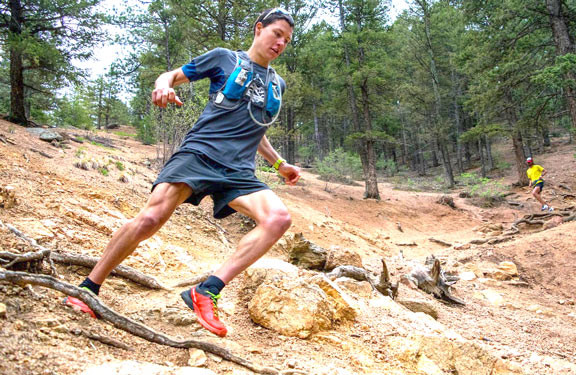
The UK has a long history of ultrarunning in the form of fell races, but races specifically labelled as ultras are on the increase. The “back yard challenge” races, which originated in the US, are particularly gruelling; at the Suffolk event participants had to run a 4.167-mile (7km) route every hour until they could no longer carry on. If runners complete their lap early they can take a short break to sleep, eat and use the toilet before heading back to the start line.
“It’s like Groundhog Day. Because you get back to the tent and you’ve got a few minutes and then all of a sudden it’s your next loop, it starts all over again,” said Stocker. “I still have nightmares now of them blowing the whistle over and over again.”
Along with his fellow runner Matthew Blackburn, he beat the world record for the event previously held by Karel Sabbe, a Belgian dentist who ran 312.5 miles (502km) in 75 hours in October. Now the pair will head to Tennessee to take part in the back yard ultra world championships and compete against the best in the field.
The races are not without risk. The ultrarunning community is still reeling from the deaths of 21 runners in an ultramarathon event in China last month after high winds and freezing rain hit the course. The country has suspended all long-distance races and an investigation into the tragedy is being carried out.
“Through the history of ultraracing there have been issues with floods, cold exposure, heat exposure, a range of everything depending on the location,” but deaths are very rare, said Diedrich. In its 35-year history, two people have died taking part in the Marathon Des Sables.
“We have to have some sort of a safety net, because you’re asking people to push to the absolute limit of their exhaustion,” said Lindley Chambers, the owner of Challenge Running, which organised last week’s Suffolk back yard ultra. He said the route was carefully mapped out to avoid risk of injury and staff were on hand to aid runners at all times.
“You need to be sensible, and manage the risks as best you can,” he said. “But then on the other side, the runners want it to feel like an adventure, they want to feel like they’re challenged. They don’t want you to hold their hand all the way round.”
Login to leave a comment
HOW ULTRARUNNER TOM EVANS ESCAPES HIS COMFORT ZONE
The ultrarunner started his sporting career for a bet, and discovered a love of pushing his limits that has kept him moving ever since.
“My thought process can best be described as ‘minimal’,” laughs Tom Evans, describing his 2017 entry into the six-day, 251km Marathon des Sables, held annually in the Sahara Desert. As well as being possibly the toughest race on the planet, it also happened to be Evans’ first. “I knew it was the hardest race out there, and I thought there was no point in doing the easy ones,” he says. “I’d jump straight in at the deep end.”
Though he lacked any formal training, Evans’ self-belief carried him to an unbelievable third place – the fastest time run by any European in the race’s history – and, naturally, skyrocketed him into the world of professional ultrarunning. “I was always sporty,” explains the 29-year-old. “I represented England at rugby, hockey and athletics events while at school. Looking back, I wasn’t necessarily the best, but I always tried the hardest. After school, I realised I didn’t want to go to university, so at 18 I joined the army. I’d always felt I had something to prove, and in the army an easy way to do that was by keeping fit. The army is an endurance-based organisation, which suited me really well.”
After the Marathon des Sables, Evans capped off a successful streak by winning the 101km CCC race at the 2018 Ultra-Trail du Mont-Blanc. The following year, he left the army to pursue running full-time, and he hasn’t looked back. Next on his schedule is Red Bull’s official charity partner event the Wings for Life World Run on May 9 – a unique race with no finish line, in which runners compete against a ‘catcher car’ until it overtakes them. This year’s participants will still compete at the same time, but – due to COVID-19 restrictions – they’ll run against a virtual car, via an app.

It’ll be different from Evans’ past experiences at the annual event, but he’s a master of adaptability. Currently holed up in Loughborough with his fiancée, professional triathlete Sophie Coldwell, he’s keeping busy by switching snowy trails for road running and has even smashed the Three Peaks challenge on a treadmill. Here’s how Evans keeps pushing forward...
The Red Bulletin: You came third in the Marathon des Sables after entering for a bet. How?
Tom Evans: My friends did [the race] in 2016 and finished in the top 300. I thought I could do better, and over a few beers they bet me I couldn’t. I signed up the next morning. There’s a lot of crossover with the military, because you’re sleeping outside under the stars and pushing yourself to your limits every day. Through running the race, I discovered this ability to suffer for a very long time in the heat. Two years later, I left the army to become a full-time professional athlete.
Ultrarunning is one of the most punishing sports. Is it all down to this natural ability?

No, I train very hard and I get used to suffering. I know in any race there will come a point when I’ll want to stop. When I get there it’s like, ‘Right, I knew it was going to happen, so now’s the time to embrace it, but also know that the minute after you stop, it’s going to stop hurting.’ I think I can withstand a lot, but I want to know how long I can actually keep feeling uncomfortable for.
Many people struggled to find focus during lockdown. What kept you motivated?
It’s very easy to keep a habit once you have it, but it’s very difficult to start the habit in the first place. I think people go from never running at all to loving it. Then there’s the other side of that: as soon as you do stop something like running, it’s very difficult to start again. So, for me, it’s about keeping as much consistency as possible. I always set mid-term and long-term goals – I’m very goals-based. Having gone from boarding school to the military, I like knowing what I’m doing.
Typically I drive to the Peak District or Snowdon or the Lake District, where there are phenomenal trails, but I wasn’t able to do that in lockdown. So I started running from my door instead. Road running suits me well, because it’s easier to collect data on your run. You don’t have to pigeonhole yourself into a certain distance or event. I run because I love running, and it’s a brilliant thing to be able to do.
What’s your plan for the Wings for Life World Run?
Because it’s a charity event, my goal is to raise as much awareness for spinal cord research as I possibly can by putting in a performance that people talk about. It’s going to be a long, uncomfortable run, which is my sweet spot. I think the best way people can physically prepare is to go on the website and play around with speeds; look at how far you can get [while] running at a certain pace. Because it’s on the app, you can challenge your friends virtually, which keeps the competition alive.
Login to leave a comment
Over Half Of Ultrarunners Get Nauseous During Races; Here's Why
The list of issues and injuries that an ultrarunner can face while racing is lengthy. Blisters, chafing, cramps, muscle strains, knee pain, heat illnesses, and altitude sickness are just a handful of the possibilities. Perhaps none of these potential problems, however, are as prevalent and impactful during ultramarathons as nausea and vomiting. Indeed, practically every ultrarunner has their own tale of yakking on the side of a trail or into an aid station trashcan. For some, it's an unlucky one-off event, but for others, recurrent nausea consistently mars their ability to perform up to their expectations.
The reason so many ultrarunners get stricken with nausea is undoubtedly multi-faceted, and to be honest, there is not a cut-and-dry singular explanation. Still, we do have some clues as to why the prevalence of nausea and vomiting is up to 2-3 times more common in these races than much shorter distances. Let's take a look at what the research says about the possible culprits as well as some of the strategies you can try to deal with this troublesome symptom.

Just How Common Is Nausea?
Beyond the anecdotes, what exactly do we know about the prevalence of nausea in ultrarunners? Before we get to some data on that question, it's important to recognize that surveys used to gather this information quantify nausea differently. In addition, the occurrence of nausea is likely to vary with temperature and humidity, elevation, and the length of a race. As such, it's a bit foolhardy to throw out a single estimate of nausea and think that it applies to every ultrarunning scenario.
Caveats aside, some of the relevant data tells us that nausea incidence clearly increases with race duration. Dr. Martin Hoffman, professor emeritus in the Department of Physical Medicine and Rehabilitation at the University of California, Davis, has overseen several studies on this topic, and in some cases, up to 6 out of 10 runners experience nausea during an ultramarathon. To give you some perspective, consider that around 10% of regular marathoners typically suffer from nausea.
Now, some of these cases of nausea are quite mild or transient, meaning they won't hurt performance much. Still, up to half of cases can be severe enough to impact ultrarunning performance. In fact, one of Hoffman's investigations found that nausea or vomiting was the leading reason for racers to drop out of the Western States 100-mile Endurance Run. During a regular 26.2-mile marathon, a runner suffering from nausea near the end of the race is likely to grit their teeth and finish. In contrast, the thought of having to suffer for another 20, 30, or 50-plus miles while feeling queasy is, very understandably, too much for some ultrarunners to cope with.
Multiple Causes
The puzzle of why nausea is so common during ultrarunning is difficult to solve, in large part because there are multiple physiological changes occurring simultaneously over the course of an ultrarace. It's also incredibly tough to match the demands of an ultrarace in a laboratory, so mechanistic studies looking at the origins of nausea during super-prolonged exercise are few and far between.
Even with the scientific uncertainty, we do have some decent guesses as to what's provoking the urge to spew in so many ultrarunners. During prolonged exercise, you secrete hormones like adrenaline and glucagon into your blood that allow your body to liberate fat stores, make glucose, and maintain your blood sugar levels. Arginine vasopressin, a fluid-conserving hormone, is also released so that you can reduce urine production. Blood levels of endotoxins (sort of invader molecules that seep through your gut's walls) and inflammatory molecules can also surge. And finally, you've got muscle breakdown products, like urea and creatine kinase, spilling into your bloodstream. All these substances can stimulate what's called the chemoreceptor trigger zone in your brainstem, which communicates with another brain region called the vomiting center.
Long story short, you've got a cocktail of substances circulating in your bloodstream that act as a potent trigger for nausea. The concentrations of all these substances tend to increase over time during prolonged exercise, which may help to explain why nausea becomes much more common in the latter half of ultraraces.
A Nervous Gut
The release of stress hormones like adrenaline can also occur even before you take your first official stride during an ultra. Throughout the history of sport, many athletes have been plagued by precompetition anxiety severe enough to induce vomiting. Bill Russell, perhaps the best center of all-time in the sport of basketball, reportedly vomited before many of his big games. There's also a moment in the Steve Prefontaine biopic Without Limits that perfectly captures what prerace nerves can do to even the most elite athletes. In the scene, Prefontaine is seen puking under the grandstands before his race against other running greats like Frank Shorter and Gerry Lindgren, even as the crowd chants his name.
These anecdotal accounts are also beginning to be backed by research. Just this year, two of my colleagues and I published an investigation that found anxiety to be associated with the occurrence of nausea in endurance race competitors. The study, published in the European Journal of Sport Science, had 186 endurance-trained individuals document their life stress and anxiety as well as the gut symptoms they experienced during one of their recent races. A subset of the subjects also reported how anxious they felt on race morning. Ultimately, racers who reported higher levels of general anxiety had over three times the odds of experiencing significant levels of nausea during competition. Further, those who reported lots of anxiety on race morning had over five times the odds of experiencing substantial in-race nausea.
These are correlations, so it's hard to definitively prove that these athletes' nausea issues were completely due to anxiety. That said, other lines of evidence support the idea that this relationship is at least partially cause and effect. Plus, most of us have had our own out-of-sport run-ins with gut distress stemming from worries and anxieties, whether they be from a first date, a medical procedure, or an interview.
Sweltering Heat and Altitude
Environmental conditions also play a major role in development of nausea during ultras. Some of the most prominent ultramarathons in the world (e.g., Western States Endurance Run, Badwater Ultramarathon, Marathon des Sables) are held in sweltry conditions. When researchers ask runners to exercise in the heat, the incidence of nausea can quadruple in comparison to exercise carried out at the same intensity in more mild conditions.
Besides the heat, another environmental factor that many ultrarunners deal with is altitude. Nausea is a well-known symptom of acute mountain sickness, with written accounts going back at least several hundred years. Add exercise to the mix, and you can start to understand why nausea is a big issue for competitors at races like the Hardrock 100 and the Khardung La Challenge, which has the highest elevation of any ultrarace in the world.
Fueling: A Delicate Balance
One other notable contributing factor to nausea is in-race fueling. The nutritional demands of ultrarunners can far outpace those of other athletes competing at shorter distances. For those ultrarunners who are looking to push the boundaries of what their bodies can do, they might end up consuming carbohydrate at rates of 60-90 grams per hour. That's roughly equivalent to 3-4 sport gels per hour! Even lesser amounts of carbohydrate (30-60 grams per hour), though, can pose a significant challenge to the gut's capacity to digest and absorb fueling.
In short, fueling during an ultramarathon often takes place on a knife's edge. Too little can lead to a bonk and even nausea if your blood sugar gets too low, while too much foodstuff can also provoke the gut and induce queasiness. With that in mind, it's critical that ultrarunners practice their fueling strategies multiple times throughout the weeks leading up to a race. Ideally, at least some of these gut-training sessions would be done at a pace similar to race-pace and in similar environmental conditions that an athlete expects to compete in.
Strategies to Quell or Avoid Nausea
Given all this information, you might be wondering how to best avoid the nauseous fate of so many ultrarunners. First, you should accept the fact that there is likely no ironclad way to completely eliminate the risk of nausea during an ultra. There are just too many potential causes. That being said, you do have the power to minimize your risk of being stricken with severe nausea. And for some athletes, it will be important to take a multi-pronged approach as opposed to relying on a single strategy. Below are my top five tips for reducing the odds of tossing your cookies during your next ultra.
Acclimate to the heat and altitude if your race is held under those conditions. Likewise, employ cooling strategies (e.g., drinking cool beverages, putting some ice in your cap or shirt, dousing yourself with cool/cold water, etc.) throughout a race that's held in sweltering conditions.
If you suffer from prerace nerves, try techniques like slow deep breathing or mindfulness. Better yet, consult with a sports psychologist.
Avoid both overhydrating as well as underhydrating. During a single-stage ultramarathon, some amount of weight loss is normal (due to the loss of energy stores), so you shouldn't be drinking so much that you weigh the same or more after a race as before the race. On the other hand, large body mass losses (e.g., >5%) may be a sign that you're underhydrating.
Train your gut! If you plan to push the boundaries of food and fluid intake during the race, of course it makes sense that you should practice your nutrition plan during some of your longer training runs. Much like other organs in your body, the gut is adaptable.
Try ginger. I'm generally not a purveyor of supplements, but if the above mentioned strategies don't do the trick for you, there is at least one nutritional product that has shown some anti-nausea properties in settings outside of exercise: ginger. To be specific, these anti-queasiness effects have been most often studied in nausea occurring during pregnancy, motion sickness, and chemotherapy. No supplement is without risk, and many products sold in the U.S. are of questionable quality, so anyone looking to use ginger supplements-or any other supplement for that matter-should do their research and consult with their healthcare provider as well.
by Trail Runner Magazine
Login to leave a comment
The Cold, Hard Reality of Racing the Yukon Arctic Ultra
Temperatures were brutally low at this year’s running of the 300-mile competition, and one frostbitten competitor may lose his hands and feet. Is this just the price of playing a risky game, or does something need to change?
Roberto Zanda left the Carmacks checkpoint of the Montane Yukon Arctic Ultra just before noon on February 6. He was at least 150 miles into the 300-mile race—he’d already been slogging down a dogsled trail through the Yukon backcountry for more than five full days. Temperatures had plunged below minus 40 Fahrenheit on the first night out of Whitehorse, the small Yukon city where the race began; along the race course, temperatures consistently ranged from the minus 20s to the minus 40s.

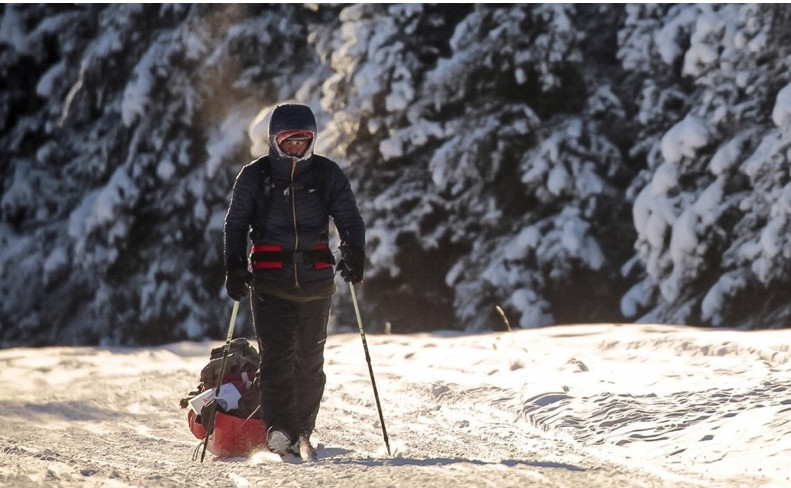
In short, conditions were brutal. Of the eight racers who’d begun the 100-mile version of the variable-length event, just four had finished. Of the 21 who’d started the 300-miler, only the 60-year-old Zanda and two others remained. Most of the rest had scratched with frostbite or hypothermia.
When Zanda left the checkpoint, hosted in a village rec center, a race medic wrote on the event’s Facebook page that the racer had paused only for “a short rest and a big meal. He was looking very strong.”
Just over 24 hours later, Zanda was in a helicopter, being rushed to Whitehorse General Hospital with hypothermia and catastrophic frostbite, lucky to be alive. He now faces the likely amputation of both hands and both feet. What went wrong?
This was the 15th running of the Yukon Arctic Ultra, an annual race in which competitors choose their distance—marathon, 100 miles, 300 miles, or, every second year, 430 miles—and their mode of transportation: a fat bike, cross-country skis, or their own booted feet. Race organizer Robert Pollhammer, 44, who runs an online gear store in his native Germany, started the event in 2003 after being involved with Iditasport, a similar event on the Alaskan side of the border.
The Yukon race takes place on part of a trail built each year by the Canadian Rangers for the Yukon Quest, a 1,000-mile dogsled race, and it’s as much a feat of logistics as it is an athletic contest. It’s continuous, not a stage race; competitors are self-sufficient, carrying all their camping and survival gear, spare layers, food, and water in sleds they pull behind them. Temperatures are cold enough to kill, and it’s dark for roughly 14 hours every day. Nonetheless, eager ultra racers travel from around the world for the event, paying anywhere from $750 to $1,750 USD to enter (depending on when they register and the distance they’re attempting), plus the cost of flights, hotel, and gear. The total can easily add up to $5,000 or more.
The entrants tend to be experienced ultra and adventure racers; many athletes have already completed events like the Gobi March or the Marathon des Sables. Most competitors come from Europe, although this year’s race also saw entrants from South Africa and Hong Kong. The race organization offers a survival course a few days beforehand—a crash education in moisture management, layering, and cold-weather injuries. Generally speaking, the racers are accomplished athletes, but they may not have extensive experience with severe cold. The challenge lies in keeping themselves safe while moving through the Yukon’s remote, frigid backcountry.
The race is billed as “the world’s coldest and toughest ultra,” and there have been plenty of serious injuries before: flesh blackened by frostbite, frozen skin peeling off racers’ faces like wax, and bits of fingers and toes lost to amputation. But what happened to Zanda is by far the worst medical outcome yet, and it has shocked former racers, event organizers, and fans. It has also led to discussions and debates, often heated, about where a race organization’s responsibilities end and a racer’s personal assumption of risk begins.
As Zanda moved out of Carmacks, his Spot tracker showed him clipping along steadily at around three miles per hour. Between 3 p.m. and 9 p.m., his beacon’s transmissions became more erratic—but that’s fairly normal in the Yukon, where satellite signals can be weak or inconsistent. Between 9 and 10 p.m., the problem cleared up and the Spot began sending signals every few minutes.
The last blip came in at 10:08 p.m., at route mile 189.7, and then the device went into sleep mode. After a strong ten-hour, 25-mile push from Carmacks, Zanda appeared to have stopped to camp for the night.
In the morning, as the sun rose, his tracker still hadn’t moved. The race crew wasn’t concerned yet—Zanda had taken a 12-hour rest once before during the race, as had some other athletes. At 9:32 a.m., Pollhammer posted on Facebook that two volunteer trail guides were headed out to check on him. “His Spot has not been sending for a long time now. Once we have news I will let you all know.”
The trail guides are the race’s safety net, patrolling hundreds of miles by snowmobile to check on the athletes and, when necessary, evacuate them from the course. They motored down the trail toward Zanda’s Spot location, but when they got there, in late morning, they found only the racer’s harness and sled, loaded with a tent and sleeping bag, a stove and fuel, and—crucially—the Spot device. Zanda was gone.
They called back to Pollhammer, who contacted the Royal Canadian Mounted Police, and then they began searching the area, looking for some sign of where the racer might have left the packed trail and wandered into the forest. The Mounties were about to launch a search of their own when the call came in: Zanda had been found. A helicopter was dispatched and landed near him. The trail guides, advised by the incoming medical team, did what they could to care for Zanda while they waited. As Pollhammer put it in an email to me: “No time was lost.”
A few days later, Zanda spoke to a Canadian television reporter from his hospital room in Whitehorse. He wore a pale-green gown, and his hands were heavily bandaged, nearly up to his elbows. His feet and shins were the same. He said he’d left his sled behind to go look for help because his feet were freezing up. He and his family members have also told race organizers that Zanda had lost the trail and went in search of the next marker, leaving the sled behind while he scouted.
Hypothermia must have already had Zanda in its grip by then, muddying his mind and compromising his decisions. His sled was his lifeline, containing everything he needed to stay alive and the only tool he had to call for help. He wandered through the cold and dark all night while the sled sat on the trail, sending out a reassuring beacon to the world that all was well.
I competed in this year’s Yukon Arctic Ultra—my first attempt—and I didn’t last long. Twenty-two hours in, suffering from frostbite on three fingertips, I scratched from the event, one of four 100-mile racers who decided to quit.
I never met Zanda, though for all I know we could have been standing side-by-side at the start line. On the afternoon of day one, he left the first checkpoint 19 minutes ahead of me. That night, I passed by as he bivied on the side of the trail. A couple hours later, I put up my own tent, crawled inside, and was trying to change into dry clothes with my hands briefly exposed. That was long enough for frostbite to set in.
Early the next morning, Zanda and two other racers passed my tent. I heard them go by but didn’t call out. I was waiting until daylight to push the help button on my Spot. I’ve thought about those encounters a lot since I learned about what happened to Zanda. It’s impossible not to hear his story and ask: Could that have been me?
Easily. I knew when I signed up for the race that amputations, or even death, were among the potential consequences. At such low temperatures, exhausting yourself to the degree required to complete an ultramarathon is a good way to erase whatever thin margin of safety you’ve managed to create. But while some of my friends had concerns, I wasn’t really worried. That disconnect is what allows many of us to put ourselves in these situations.
Zanda wasn’t the only person hospitalized. Nick Griffiths, another 300-mile racer, scratched on day two. The frostbite on his left foot had become severe by the time he was whisked from the trail to a remote checkpoint for eventual evacuation to Whitehorse. Griffiths spent five days in the hospital, and he will eventually lose his big toe and two others next to it. (To preserve as much healthy tissue as possible, doctors will allow the toes to “self-amputate,” meaning that the dead tissue will simply fall off.) Losing the big toe, in particular, could have a serious impact on Griffiths’ future ability to walk, hike, and run.
“I’m hoping I’ll be all right,” he told me from his home in England, where he’s been reading up on athletes who’ve lost toes. “I’m not expecting to be able to go and do ultras or things like that, but there’s other challenges. It’s not ideal, but there’s no point jumping up and down about it. It’s done.”
I’m not sure I could muster the same acceptance if I were in Griffiths’ position, let alone Zanda’s. Understandably, the Italian racer’s friends and family are extremely upset. In the days after his rescue, the race’s Facebook page filled up with furious comments from people demanding to know how this could have happened, why Zanda wasn’t checked on sooner, why the race hadn’t been canceled entirely when the weather refused to relent. Zanda’s wife, Giovanna, wrote, in Italian, “It’s been too many hours before you decided to verify what happened. He didn’t die by miracle.” His brother, Paolo, posted, “Why they promise you safety when they do not care about you?” To which Pollhammer replied, “Nobody promises safety.”
That much is certain. The waiver I signed when I filed my registration paperwork last summer listed the risks I was assuming as including but not limited to “dehydration, hypothermia, frostbite, collision with pedestrians, vehicles, and other racers and fixed or moving objects, sliding down hills, overturning of ice-rocks, falling through thin ice, avalanche, dangers arising from other surface hazards, equipment failure, inadequate safety equipment, weather conditions, animals, the possibility of serious physical and/or mental trauma and injury, including death.”
Still, even as we sign our lives away, participating in an organized race may provide us with an illusion of safety in a way that an independent backcountry trek might not. If so, I suppose it becomes our job to tear down that illusion and make clear-eyed choices about the risks. That’s easier said than done, of course.
Throughout the aftermath of this year’s race, Pollhammer has remained calm as he answered his critics, walking the fine line of showing empathy for Zanda and his family while making it clear that he believes the error was the racer’s. Initially he seemed shaken, unsure about running the event again next year, but he has since announced the 2019 dates. I asked Pollhammer if, with the benefit of hindsight, he would do anything differently. He said that the rules and safety procedures evolve almost every year, and next year will likely be no different. But there are limits to what he can do, no matter how much he tweaks his protocols
“We can increase the list of mandatory gear, make people carry a sat phone, warn athletes even more so than we do now,” Pollhammer said. “We can do many things. However, we won’t be able to make sure people don’t get hypothermic and start making mistakes when they are out there. It they don’t act, or if they act too late, it will always mean trouble. I wish I could take that away from them, but it is impossible.”
Or as Nick Griffiths put it, “I can’t blame anybody for it—it was my own fault.”
As for Zanda, he told the CBC that he’ll be back out racing again—on prosthetics, if need be.
Login to leave a comment
Yukon Artic ultra 300 miler
The Yukon Arctic Ultra is the world's coldest and toughest ultra! Quite simply the world's coldest and toughest ultra. 430 miles of snow, ice, temperatures as low as -40°C and relentless wilderness, the YUA is an incredible undertaking. The Montane® Yukon Arctic Ultra (MYAU) follows the Yukon Quest trail, the trail of the world's toughest Sled Dog Race. Where dog...
more...Ultrarunner Tom Evans prepares for his biggest race at Olympic marathon trials
Like many, ultrarunner Tom Evans has struggled with the lack of races in lockdown. The former army captain burst onto the ultrarunning scene in 2017, coming third in the six-day Marathon des Sables, and last year he set a new record in the Tarawera 102km Ultra Marathon, in New Zealand. But he has had to adapt to circumstances and is now setting his sights on the marathon in the rescheduled Tokyo Olympics.
We talked to the 29-year-old about swapping the trails for the pavements, his mental strength, the Olympic marathon trials and his role as a Garmin ambassador.
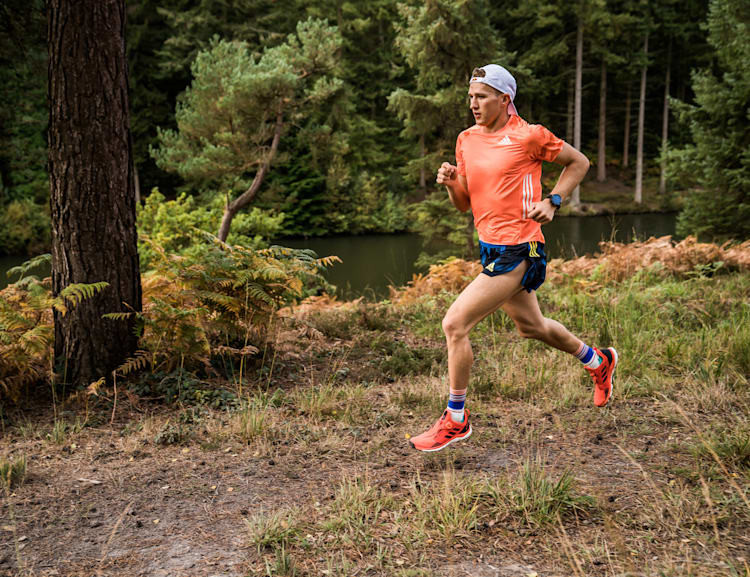
You’ve set your sights on the Tokyo Games. How did this happen?
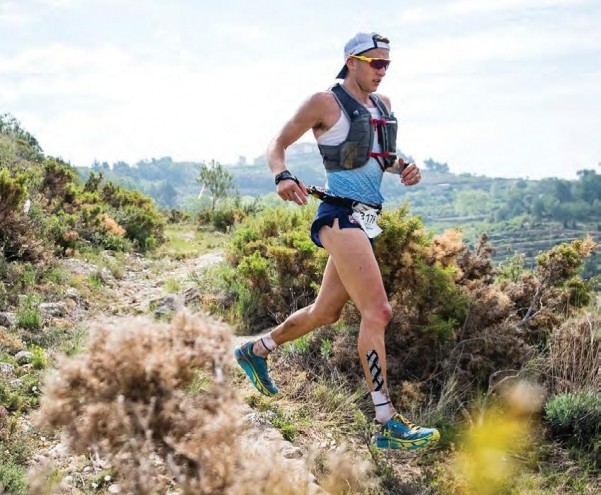
‘At the beginning of the pandemic, Tokyo was not on my list whatsoever – I very much planned on staying on the trails and running long rather than running fast. I guess what the pandemic has taught me is that I like structure and I’m a very goal-orientated athlete and person. I have to have goals, whether it’s “Today I’m going to list 10 things on eBay” or something bigger; I have to set goals and achieve those goals. It’s the same with my running, with there being so little opportunity to race, I thought I need something to set my sights on and if something is going to happen, it’s going to be the Olympics.
‘[With the lockdown restrictions] we couldn’t drive to run or go on training camps, which is how I would normally do my trail running and my ultrarunning. It’s all been very much running from the door, so I’ve been running a lot more on the road, which has led to running a bit quicker and that’s opened my eyes to what I could run at the marathon trials at the end of next month.’ [The event will take place on a looped course in Kew Gardens, London, on Friday, March 26.]
How do you feel about the trials?
‘I’m really excited – for me, it’s really unknown. I think I’ll be able to take a lot of lessons I’ve learnt from ultrarunning into the race and I’m really looking forward to the challenge. It’s been great fun training for it and to now get the opportunity to push myself to the limits and see what I’m capable of.’
‘You know that during a marathon you’re going to hurt and you know that when it starts to hurt, the training that you have done before is what’s setting you up to keep doing it. I go into a race saying, “I know this is going to hurt” and when it starts hurting I think, “Bring it on; I’ve done the training, I trust myself and I knew this was going to happen and now it’s happening, it’s no surprise.”’
by Jane McGuire
Login to leave a comment
Tokyo 2020 Olympic Games
Fifty-six years after having organized the Olympic Games, the Japanese capital will be hosting a Summer edition for the second time, originally scheduled from July 24 to August 9, 2020, the games were postponed due to coronavirus outbreak, the postponed Tokyo Olympics will be held from July 23 to August 8 in 2021, according to the International Olympic Committee decision. ...
more...Kevin Webber runs his version of Marathon des Sables at home
AFC Wimbledon fan Kevin Webber was diagnosed with terminal prostate cancer five years ago and given only two years to live, he tells Sky Sports News reporter Jeremy Langdon.
That diagnosis changed Kevin's perspective on life and, when it came to making up a bucket list, the Marathon des Sables (MdS) was top.
The brutal Saharan ultra-marathon is notorious. Normally around 250 kilometers long, it means six days of suffering in desert heat with a pack on your back.

Kevin warmed up with two conventional marathons - against medical advice - while undergoing chemotherapy before running the MdS in 2016, 2017, 2018 and 2019.
This year would have been the fifth - and also would have made him the only person to run the event that many times with stage 4 cancer - but coronavirus forced the race in Morocco to be postponed early this month.

So Kevin decided to run it instead in his back garden and round his house in Epsom, Surrey.
He said: "I thought I'm not going to allow cancer to stop me doing things so equally I'm not going to allow coronavirus stopping me doing things either".
Kevin ran the 2019 race distance of 232km - around 140 miles - and fittingly made it a truly home event with the United Kingdom placed in lockdown.
"It would have been very easy for me to have gone out on the road and run a marathon in a day but that wouldn't have proved the point. About the solitude. About getting on when you're on your own. I wanted to prove to people in lockdown that even if you self-isolate you can do things," he added.
It meant an astonishing 2,700 laps round his house with each lap consisting of only 80 meters. It was not the easiest circuit either. Thirty metres through the garden. Ten metres down the side of the house - twice - together with another 20 meters at the front of the house round his two cars.
by Jeremy Langdon
Login to leave a comment
Marathon Des Sables
The Marathon des Sables is ranked by the Discovery Channel as the toughest footrace on earth. Seven days 250k Known simply as the MdS, the race is a gruelling multi-stage adventure through a formidable landscape in one of the world’s most inhospitable climates - the Sahara desert. The rules require you to be self-sufficient, to carry with you on your...
more...After over 50 hours ultrarunner Mike Wardian runs 63 laps for 422K to win the virtual race Quarantine Backyard Ultra
The Quarantine Backyard Ultra started Saturday morning, and over 2,400 runners from more than 50 countries joined the virtual race. Runners ran 6.706K every hour for as long as they could, and over 60 hours later, only two runners remained: American Mike Wardian and Radek Brunner of the Czech Republic. Brunner missed the start of the 63rd lap and was therefore disqualified, making Wardian the winner after 422K.
With every passing lap of the Quarantine Backyard Ultra, more and more of the world’s best ultrarunners dropped out and registered DNFs. Last year at the Big’s Backyard Ultra, Maggie Guterl ran 60 laps for 402K, but a nagging back injury forced her to pull out of the race this weekend after just nine laps.
After 15 laps and 100K, Jamil Coury called it a day. Three laps later, Canadian Cal Neff dropped out. At the 100-mile mark, Courtney Dauwalter threw in the towel, along with 72-year-old Gene Dykes. Later on, after 31 laps, Canadian Dave Proctor (who helped bring the event into fruition), had to end his race due to back pain.
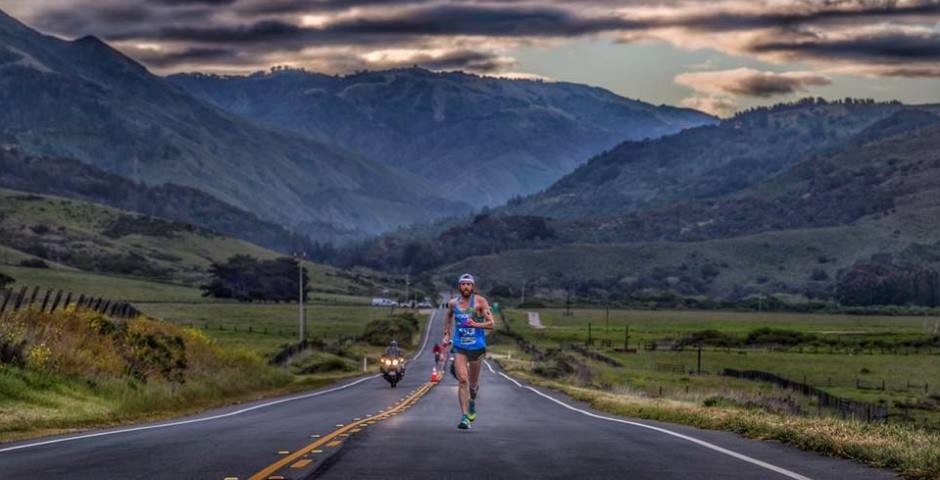
“It was a bit of a tough day for sure,” Coury said. “I was hoping to go as long as I could— 24 or 30 hours—but you never know with these things.” Although he didn’t get as far as he would’ve liked, Coury cut himself some slack, seeing as he’d run a marathon around a 27-metre course just four days earlier. In fact, just making it in time to race at all was an accomplishment for Coury, who slept at his office the night before and woke up only minutes before the event began.
“I was working late on Friday night, and i fell asleep at my office,” he said. “I fortunately had a pair of shoes and socks in my truck. I threw it on, started my livestream and just ran out the door.” Coury ran the first seven hours around his office’s neighbourhood, returning to finish work between laps. He eventually drove home (he made it to his treadmill with three minutes to spare before the start of the next lap) and made it to 100K before bowing out.
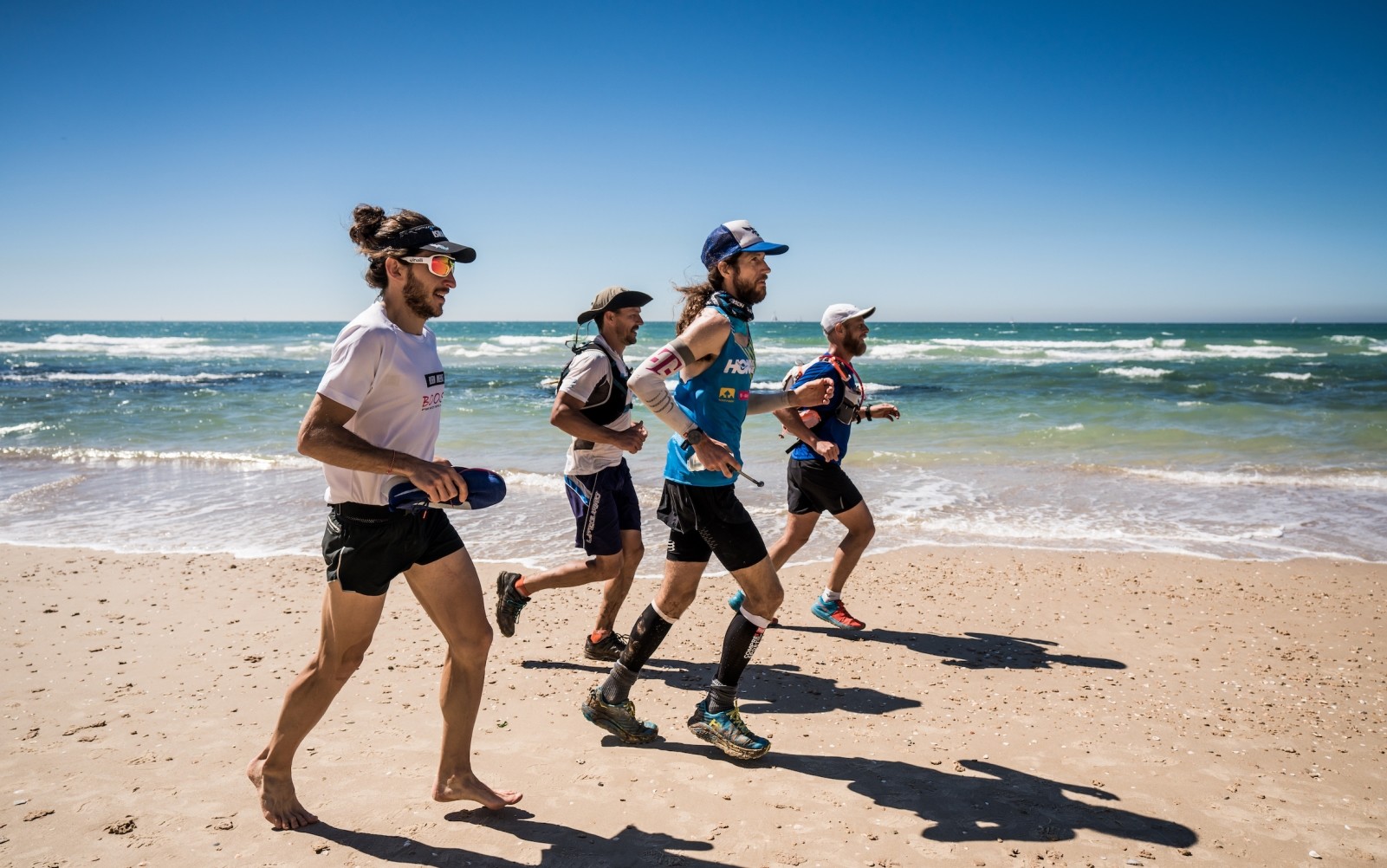
Dauwalter said she got to the 100-mile mark and decided that was “a solid day.”
“When I signed up I didn’t have major plans,” she said. “I wanted to make it at through the night, because that’s always special and fun to see the sunrise.” She did make it through the night, got her sunrise and retired from the race soon after.
“I think this is a really fun format,” she said. “It’s great with the camaraderie. You come back from a lap and go on the Zoom chat with the other runners.” Proctor also noted how fun it was to chat on the Zoom and YouTube feeds.
“It’s so unique,” he said. “When all the runners go off and do their thing, I get extraordinarily busy talking to everybody on YouTube.” He said that he spent around half of his time on the treadmill answering questions viewers had posted on the YouTube live video.
“I found that it was really quite rewarding. It gets your mind off of what you’re doing and it gives you something [else] to do.” While they were both still in the race, Proctor and Coury teamed up and answered questions together, adding some fun banter to the mix as well.
The two finalists had very different setups for the final laps. Brunner ran solo in his house on a treadmill while Wardian took to the streets with a support crew and several cyclists riding alongside him as he ran. The winner of multiple U.S. national titles at ultra distances, Wardian is well known in the running community. He has run the Western States 100 and the Ultra-Trail Du Mont-Blanc multiple times, and he finished 11th at the 2011 Comrades Marathon and third at the 2010 Marathon des Sables.
Brunner is more of an unknown, at least in the North American ultra community, but like Wardian, he has an impressive running resume. He has represented the Czech Republic on multiple occasions, competing at the 24-hour, 100K and trail world championships. At the 2017 24-hour worlds in Ireland, Brunner came 14th. He has also run to the podium four years in a row in the Spartathlon, a 246-kilometre ultramarathon in Greece. Although he didn’t win, after this run, Brunner’s name has become much more well known in the ultrarunning community.
by Ben Snider-McGrath
Login to leave a comment
The Marathon des Sables has been postponed due to coronavirus
The Marathon des Sables ultramarathon, scheduled for April 3-13, has been postponed to Sept. 18-28.
Marathon Des Sables: Communicate. Dear competitor:
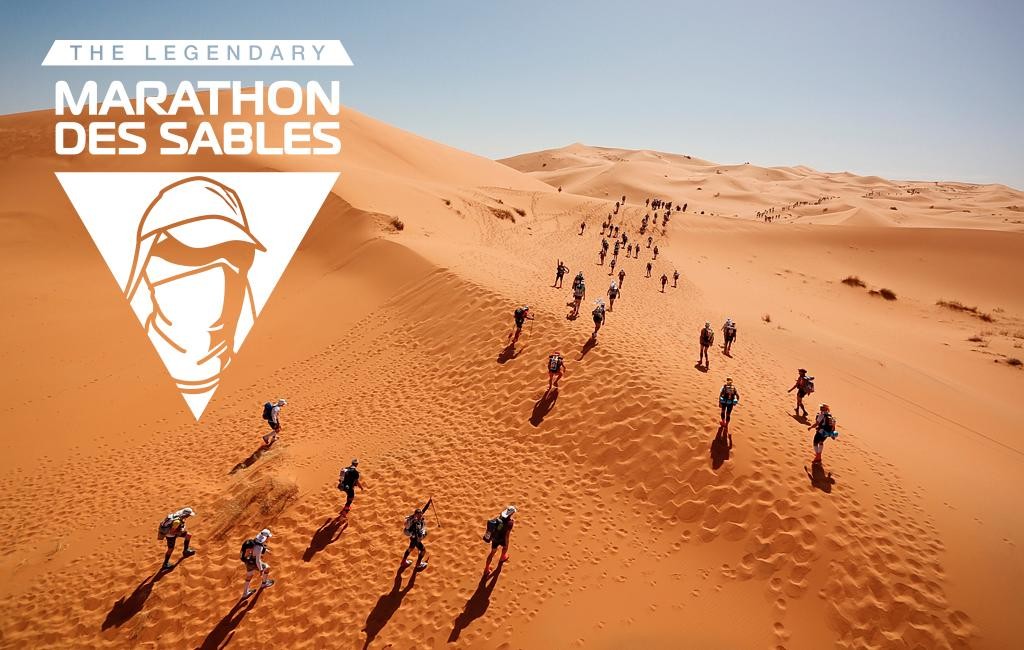
Given this more than worrying situation and the circular published by the Ministry of Interior of the Kingdom of Morocco on March 4, 2020 on the spread of Coronavirus (Covid-19), it is very likely that the 35th MARATHON DES will be banned SABLES planned from April 3 to 13, 2020.
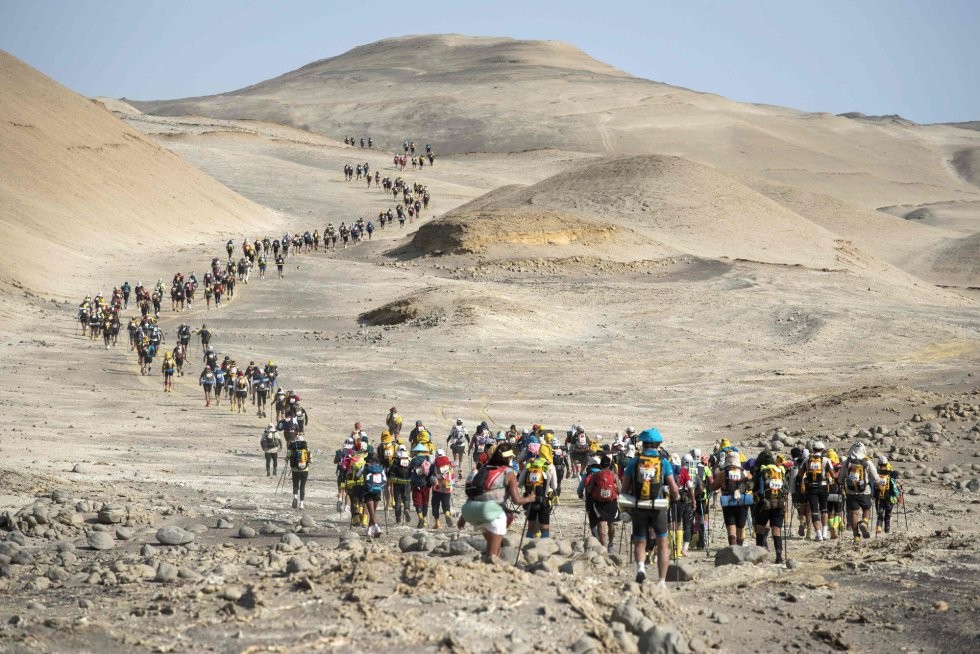
As a precaution, we prefer to anticipate and assume our responsibilities. Therefore, we inform you today that this edition is postponed until the 35th period from September 18 to 28, 2020.
We understand that the postponement of this edition can be very complicated for each and every one of you. However, unfortunately it seems inevitable to us to make this decision one month after the initial departure for the well-being of all and for the pleasure that we want to keep within the MDS family.
Know that this situation affects us all, but we will see each other in a few months to celebrate this anniversary edition in the best conditions.
Thank you for your understanding and see you soon under the stars!
Login to leave a comment
Marathon Des Sables
The Marathon des Sables is ranked by the Discovery Channel as the toughest footrace on earth. Seven days 250k Known simply as the MdS, the race is a gruelling multi-stage adventure through a formidable landscape in one of the world’s most inhospitable climates - the Sahara desert. The rules require you to be self-sufficient, to carry with you on your...
more...Women are not only finishing ultra marathon races they are winning some of them
According to conventional wisdom and most of the sport’s history, women should not win ultraendurance events — ever — when competing against men. But they are.
Three big wins in the past few months have put women’s performance in the longest and most difficult sporting events on the planet firmly in the spotlight. In September, American athlete Sarah Thomas, a cancer survivor, became the first person to swim the English Channel four times without stopping, spending 54 hours in the water and covering 134 miles. In August, German cyclist Fiona Kolbinger won the 2,500-mile nonstop Transcontinental Race across Europe and in January, British runner Jasmin Paris won one of the toughest running races there is, the Spine, a 268-mile jaunt across Britain’s backbone in winter, while breastfeeding her baby.
The proportion of women in ultramarathons was very low at the beginning of the ultrarunning movement. Records began for U.S. 100-mile ultramarathons in the late 1970s, and the proportion of women was basically zero. Now it’s steady at 20 percent. And not only are women running, but they’re winning.
That’s a record for women in the sport. Still, some prominent ultra gatekeepers don’t think women’s participation will equal success across the board.
Women are winning increasingly frequently. Badwater, the Spine, the Moab 240 — the list of big ultramarathons women have crushed goes on, and it’s not just a matter of winning against a weaker male field than usual. When Paris won the Spine in January, running 268 miles from England to Scotland, she smashed the course record by over 12 hours.
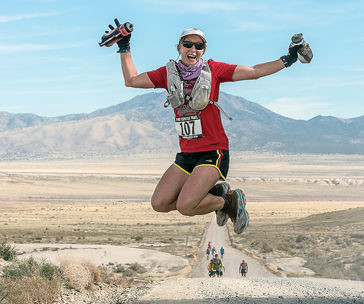
Physically, men hold most of the cards: better V02 Max, which measures the rate at which your body can take in and use oxygen, larger hearts, larger muscle mass, better body mass index ratios and stronger and (usually) longer bones. But women do have some advantages: They’re more efficient than men at converting glycogen to energy. Glycogen is the secondary source of fuel used when glucose levels drop, so basically women can access and burn fat better. They also store fat better, itself an advantage because it means they can draw on those stores during punishing longer races.
Psychologically, too, men don’t have an obvious edge over women. Let’s start with pain: If you’re running long distances, you’re likely to experience pain. Despite a popular myth that women have a higher pain threshold than men, studies show that in fact women feel pain more quickly. This works to their advantage in ultras, as a quick response to pain means that they can locate and treat small problems like the onset of blisters early in the race. Also, when women feel pain, brain studies have shown that they mobilize emotion-processing parts of the brain to deal with it and so can train themselves to overcome it, whereas male brains more often use threat-control circuits, giving them increased adrenaline and awareness — but tiring them out faster.
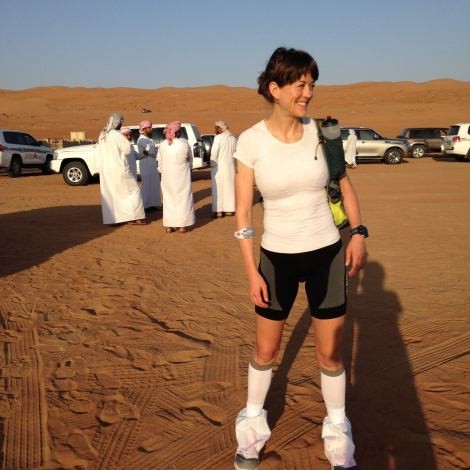
“Science doesn’t really back up anecdotal theories about childbirth making women stronger endurance runners,” says psychologist and keen marathoner Sian Williams, but she adds that there is evidence that women can be better at pacing themselves. A 2015 analysis of more than 90,000 marathon results for 14 races suggested both sexes slowed by the second half, but men more so than women. The study, published in Medicine and Science in Sports and Exercise, suggested that men’s early burst of speed is linked to competitive behavior but causes issues in the latter part of the race. “Perhaps the psychology of ego and risk plays as much a part as physiology in lasting the distance,” Williams concludes.
That psychology of risk emerges also in the way the sexes handle sleep deprivation. Men have the physical advantage: They need less sleep than women by an average of 20 minutes. But men and women have diametrically opposed reactions to lack of sleep: Men’s behavior becomes riskier, and women’s more risk-averse — also an advantage in an ultramarathon, which requires alertness, night navigation and injury management. In what could be the clincher, women have been found to become more selfish and ego-driven with lack of sleep, mimicking typical male behaviors and increasing competitive will, which could give them a final push toward the end of an ultra.
Elisabet Barnes is a two-time women’s champion of the Marathon des Sables, a 251-mile race across the Sahara Desert. She’s also won ultras outright, including Australia’s Big Red Run. For her, the key is less about biology and more about attitude — such runs require “leaving the ego behind, planning all aspects of the race meticulously and having a spiritual presence, leveraging the elements and working with them … rather than fighting the harsh environment,” she says This, she notes, may be easier for female participants.
Though the men have a clear advantage physically, female behaviors can disproportionately benefit them in the long and tough races. That could come in handy for the top ultra women who are setting their sights on that “overall winner” title. Even in the iconic Barkley — where many female running luminaries have tried and failed — 2020 could be the year for that elusive female first.
by Alice Morrison
Login to leave a comment
Former Ironman world champion Chris McCormack is going to take on the Marathon Des sables in 2020
When Australia's Chris McCormack, the two-time Ironman world champion (2007 and 2010), finished his active pro triathlon in 2014, he initially devoted himself to organizing various projects, putting his own athletic career on hold. In 2015 he took over the leadership of the "Bahrain Elite Endurance Triathlon Team," backed by Sheikh Nasser Bin Hamed Al Khalifa.
In 2017 McCormack founded "Super League Triathlon," now held as a series with different locations around the world. For the coming year, the 46-year-old has decided to put sport back in the foreground. "Macca" announced his registration for the famous Marathon des Sables, a race that he says has always been on his bucket list.
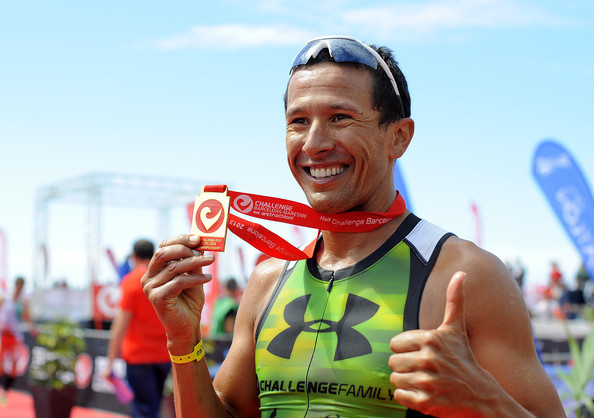
The Marathon des Sables is an extremely demanding ultra-marathon that started in 1986 and takes over seven days through the Moroccan Sahara. The 252 km event is run in six stages over seven days. Five stages are between 20 and 40 kilometers, while one stage covers about 80 km. Next year the race takes place between April 3 and 13.
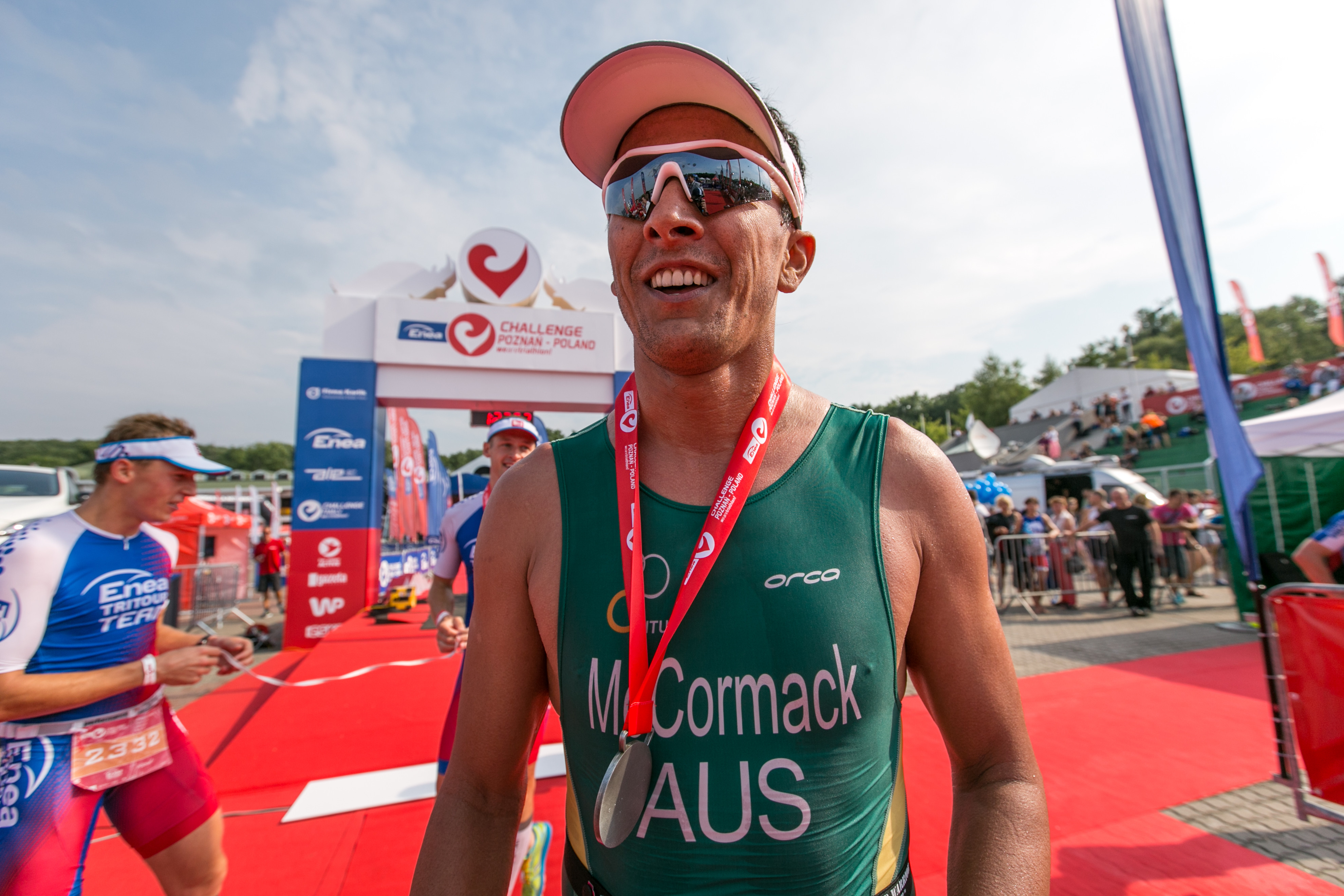
The participants carry their own gear and food for the whole race - the organizers provide water and an open tent. You must also be equipped with minimal survival equipment including a sleeping bag and a snakebite set.
The course typically consists of rocky plains, dry riverbeds and sand dunes, and only occasionally runs through villages. During the day temperatures can reach over 40 degrees Celsius, while at night dip as low as 5 degrees.
by Simon Muller
Login to leave a comment
Marathon Des Sables
The Marathon des Sables is ranked by the Discovery Channel as the toughest footrace on earth. Seven days 250k Known simply as the MdS, the race is a gruelling multi-stage adventure through a formidable landscape in one of the world’s most inhospitable climates - the Sahara desert. The rules require you to be self-sufficient, to carry with you on your...
more...Yes, raw speed helps. But it isn’t everything. Why Older Runners Have an Edge in Ultra Races
There were two first-time winners at last weekend’s Leadville Trail 100 Run, as Ryan Smith of Boulder, Colorado, and Magdalena Boulet from Berkeley, California, persevered on the out-and-back course in the Colorado Rockies. Smith won the men’s race in a time of 16:33:24, while Boulet finished in 20:18:06 and, in a salute to her Western environs, broke the tape wearing a black Stetson hat.
Beyond their individual triumphs, Smith and Boulet also chalked one up for the 40+ demographic; Smith turned 40 this year, while Boulet is a spry 46. For those keeping score, this is actually the second consecutive year where both the male and female winners at Leadville were in their fifth decade. In 2018, it was Rob Krar (41) and Outside contributing editor Katie Arnold (46) who stood atop the podium in a race which is among the oldest 100-milers in the country and bears the prestige of being included in the so-called “Grand Slam of Ultrarunning.”
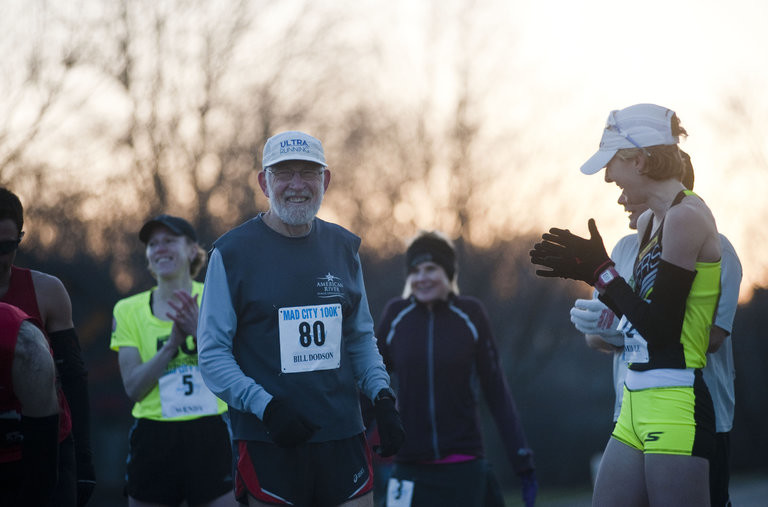
How to account for this quadragenarian dominance? Road racing snobs might point out that the field size in ultras is generally quite small and that these events are hence less competitive than big city marathons with thousands of participants. This year, the Leadville 100 had fewer than 400 finishers. Then there’s the fact that the elite ultrarunning scene, despite its increased mainstream visibility over the past decade, is still largely unprofessional, in the sense that weekend warriors can carry the day at certain marquee events. Smith works full-time as a software engineer, and Boulet is VP of research and development at GU Energy Labs. While this amateur spirit might be a point of pride for ultrarunners who don’t want their sport to devolve into the doping-riddled morass that is professional track and field, one could argue that it also subtly discourages the best pro distance athletes (i.e. Kenyan and Ethiopian runners) from turning to the trails. This, in turn, makes the podium perpetually attainable for the super-fit middle-aged hobbyist.
But maybe there’s more to it than that. Given the amount of stuff that can go wrong when you’re running 100 miles in the mountains, perhaps more “mature” athletes might have an advantage when raw speed is less essential than psychological resilience.
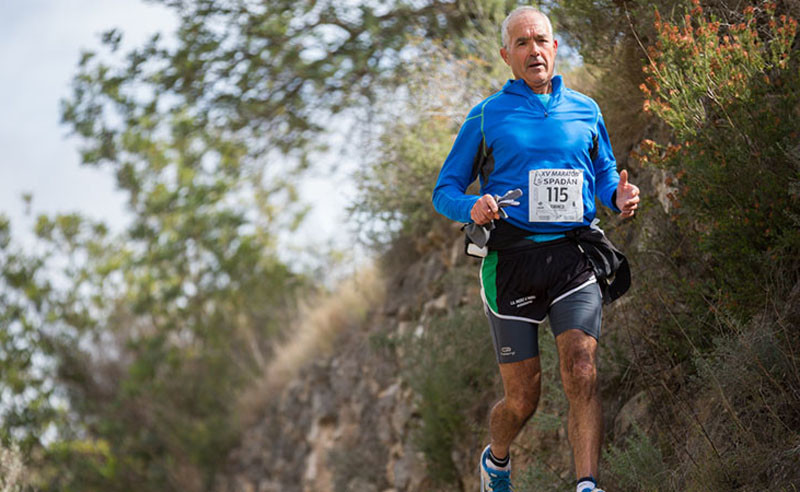
“Ultrarunning is about problem solving and being fast is just one piece in a larger puzzle,” says Boulet, who was back at work on Monday morning. “There are so many other pieces that need to fall into place in order to have a successful race.”
Boulet would know. In 2015, she triumphed at Western States, arguably the most vaunted ultra on U.S. soil. Last year, she won the Marathon des Sables, a 156-mile, six-day stage race in the Sahara Desert that frequently gets cited as one of the world’s most difficult races.
Boulet also has the rare distinction of having successfully transitioned into the world of ultrarunning after a previous career as a pro marathoner and road racer. In 2008, she made the U.S. Olympic team in the marathon. The following year she was the first American woman (sixth overall) at the NYC Marathon. With the exception of Kara Goucher, who contested her first trail marathon earlier this summer, Boulet is surely the most accomplished road racer to take a serious shot at competitive trail running.
“I was able to bring the experience from my marathon and road career into trail racing, but with a lot more experience and a lot more patience,” she says. “I’m a lot kinder to myself and my body.”
For his part, Sands, who describes himself as a “serious amateur,” agrees with Boulet that being the best pure runner is only one factor when a race involves one hundred miles of elevation change, gnarly terrain, and volatile weather. Unlike in shorter road races, where it is much more feasible to execute a race plan to perfection, in ultras the objective isn’t so much to avoid mishaps, as to make the best of it when they inevitably happen.
“Typically success in these longer events is not about getting everything dialed next to perfectly, because that’s just so rare,” Sands notes. “It’s really about, when some issue arises and you’re faced with a challenge, how well can you react in the moment to overcome it.”
This latter point reminded me of a recent email exchange I had with Robert Johnson, the editor and co-founder of Letsrun.com and a road-racing snob if ever there was one. Johnson made the point that one thing he finds intriguing about ultras is that there is still an aspect of the “unknown.” He noted that training for traditional distance running had more or less been “solved”; everyone already knows, more or less, how to prepare for races. Ultra-running, on the other hand, is still very much an undiscovered country.
Boulet agrees with this assessment.
“After twelve years of doing marathons, I got to the point where I had that formula dialed-in really well with my coach. We could look at a block of training and know what that translates into [performance-wise]. It was very predictable,” she says.
But the ultra scene offers enough potential variation that, Boulet notes, each race can necessitate its own specific training cycle. In the lead-up to Marathon des Sables, for instance, she spent weeks running on sand.
“For someone who is older, ultras are really exciting because you’re not doing the same thing over and over. They keep changing,” Boulet says.
“I think that’s also a key to longevity in the sport. To keep it interesting—and fun.”
Login to leave a comment
168 mile Al Marmoom Ultramarathon is one of the world’s longest desert ultras
Set in a rugged national conservation area, the Al Marmoom Ultramarathon claims to be one of the longest desert ultra in the world. The 270km (168 mile) route was run over five days in December in temperatures as high as 35C (95F),.
In its inaugural year, 19 runners (15 men and four women) completed the race, with 36-year-old Moroccan Rachid El Morabity -- a six-time Marathon des Sables winner -- crossing the finish line first in 31 hours and 17 minutes. Eleven runners didn't make it, as well as many others in the shorter 100 km and 50 km versions of the race.
Race manager Ole Brom oversaw of the health and wellbeing of the runners. Running these distances across energy-sapping sand amounts to an extreme sport, the Norwegian told CNN, and "not something that is taken on lightly."
"On the first day after about 40 km, about 12 km from the end, (one athlete) collapsed unconscious," says Brom. "He ignored the signs of dehydration and he suffered the consequences."
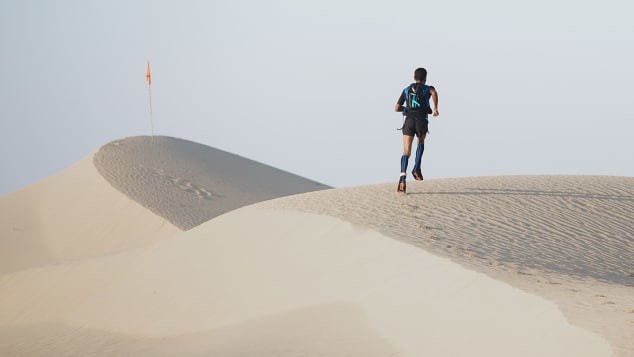
Stretches of the race, including one 100-kilometer leg, were only accessible by air for first responders, explained event director Ruth Dickinson. Athletes wore tracking devices and distress beacons and carried anti-venom pumps in case of snake bites.
Running across the dunes was not without its rewards. "(It's) really peaceful," says 45-year-old female race winner Magdalena Boulet, "(you) can't really see anything for miles and miles."
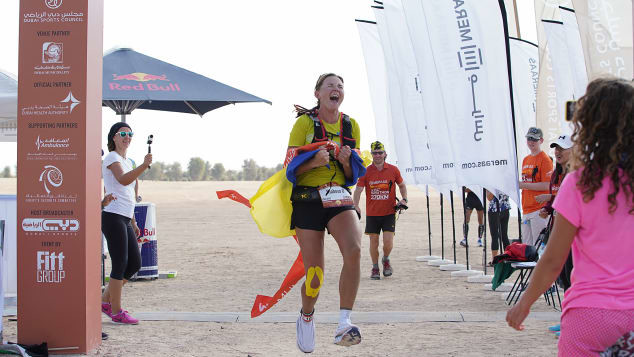
"It's mesmerizing," Brom adds. "On certain routes there were Oryx, there were sand gazelle, mountain gazelles. We saw eagles (and) a lot of different migrating birds." (As a designated conservation area, runners were penalized for dropping trash and required to bury human waste, should nature call.)
There were still smatterings of luxury, with racers provided hot water, tents and massages between stages. Brom says some athletes told him they'd return for the toilets alone.
The Al Marmoom Ultramarathon will join 400-plus local sporting events ranked by the Dubai Sports Council. Acting director of events Ghazi Al Madani says planning for 2019's race is already underway.
Brom believes transit hub Dubai could become a nexus for desert ultra runners, playing host to regular events in its "backyard." "Ten percent of the landmass of Dubai is sand," he adds, "so it makes perfect sense."
by Tom Page
Login to leave a comment
Al Marmoom Ultra Marathon
Launched under the initiative of UAE Vice President and Prime Minister and Ruler of DubaiHis Highness Sheikh Mohammed bin Rashid Al Maktoum, Al Marmoom Desert Conservation Reserve will host the world's longest desert ultra-run Meraas Al Marmoom Ultramarathon. Meraas Al Marmoom Ultramarathon is a 300km, 100km and 50km race across desert terrain and will be held 9th to 11th December...
more...Meet Cactus the dog who just ran one of the world’s toughest races, the Marathon des Sables
A dog has become the first canine to cross the finishing line at one of the world’s toughest ultra marathons.
The hound, nicknamed Cactus, wandered onto the course on day two of the Marathon des Sables in Morocco.
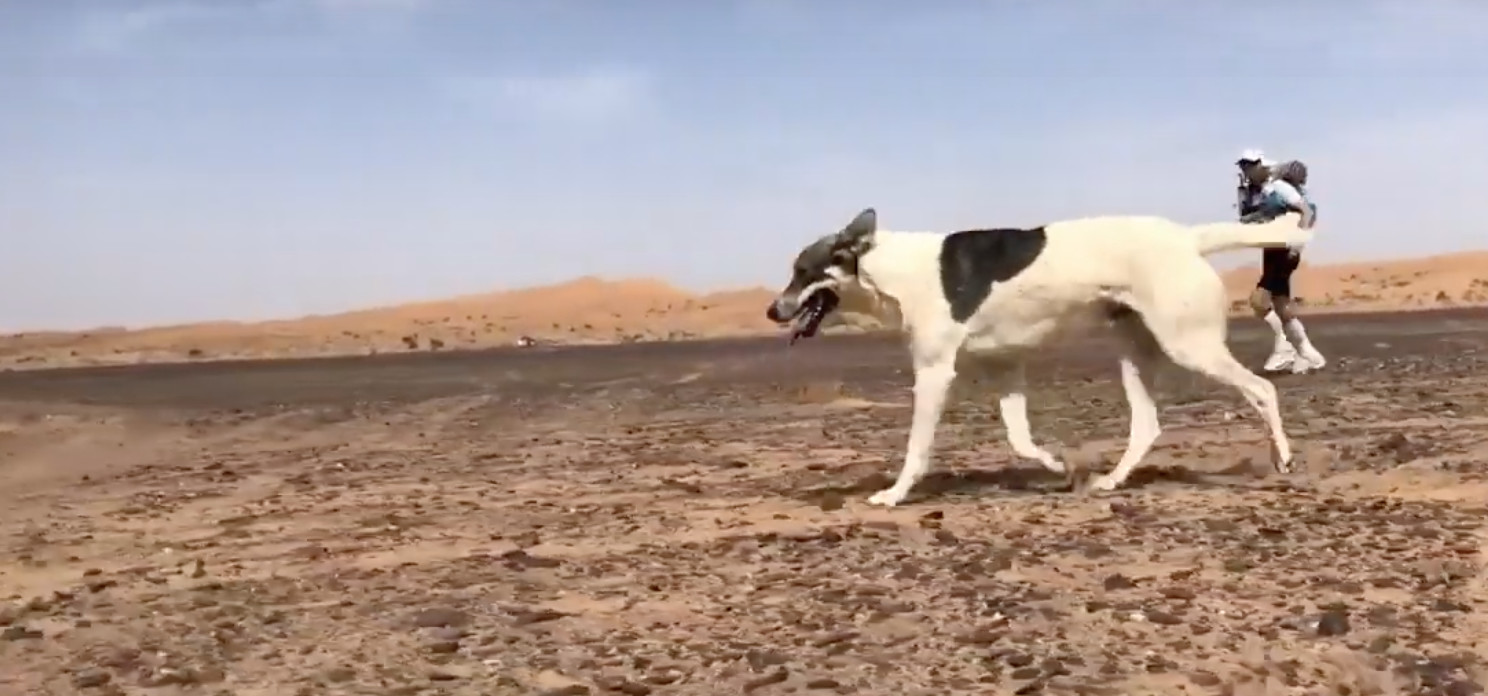
He began following competitors in the 251-kilometre, six-day endurance race in the sweltering Sahara Desert.
‘Cactus’ finished the second stage, then the third and fourth. Organisers tweeted on Friday to say he had crossed the finishing line.
Runners welcomed their four-legged competitor and cheered him on as he trudged with them on his self-inflicted jaunt. He also rested with them and ate and drank in their company.
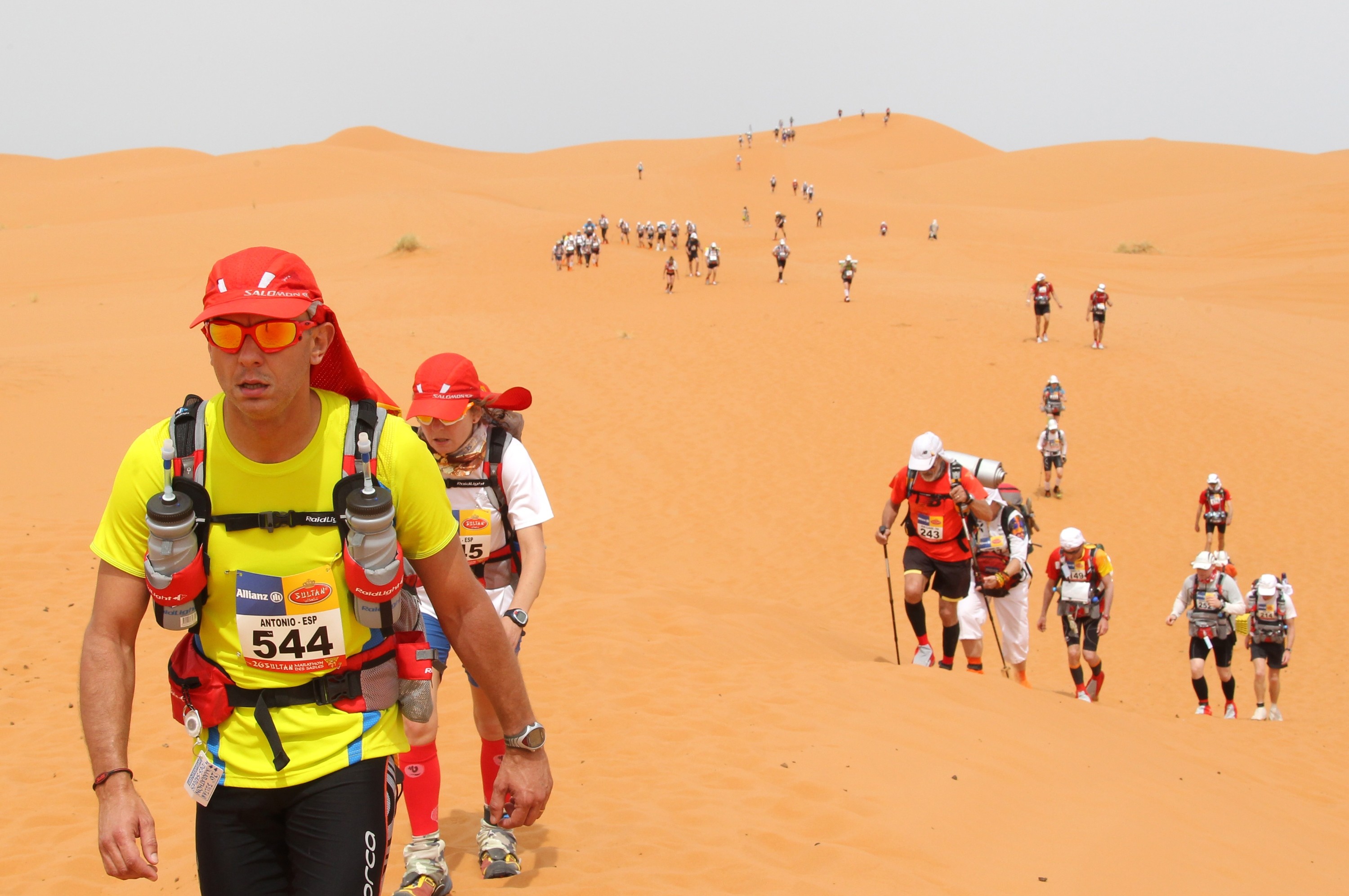
Owner Karen Hadfield took to social media to say that he is a nomad dog and regularly runs 40-km a day in the area.
Pictures emerged on Saturday of organisers and competitors bidding ‘Cactus’ farewell as Karen came to collect him.
Login to leave a comment
Marathon Des Sables
The Marathon des Sables is ranked by the Discovery Channel as the toughest footrace on earth. Seven days 250k Known simply as the MdS, the race is a gruelling multi-stage adventure through a formidable landscape in one of the world’s most inhospitable climates - the Sahara desert. The rules require you to be self-sufficient, to carry with you on your...
more...16-year-old Canadian to tackle 251K Marathon des Sables
Though not old enough to compete at many Canadian marathons, 16-year-old Jack Davison of Fort Langley, BC is about to start one of the world's most gruelling ultras

Though many Canadian marathons would not permit a 16-year-old to register, Jack Davison, of Fort Langley, BC is about to start not just a marathon, but six in a row, in the Sahara desert. He is one of 10 Canadians registered in the 251K Marathon des Sables in the Moroccan Sahara, which starts tomorrow. Jack is there with his father,
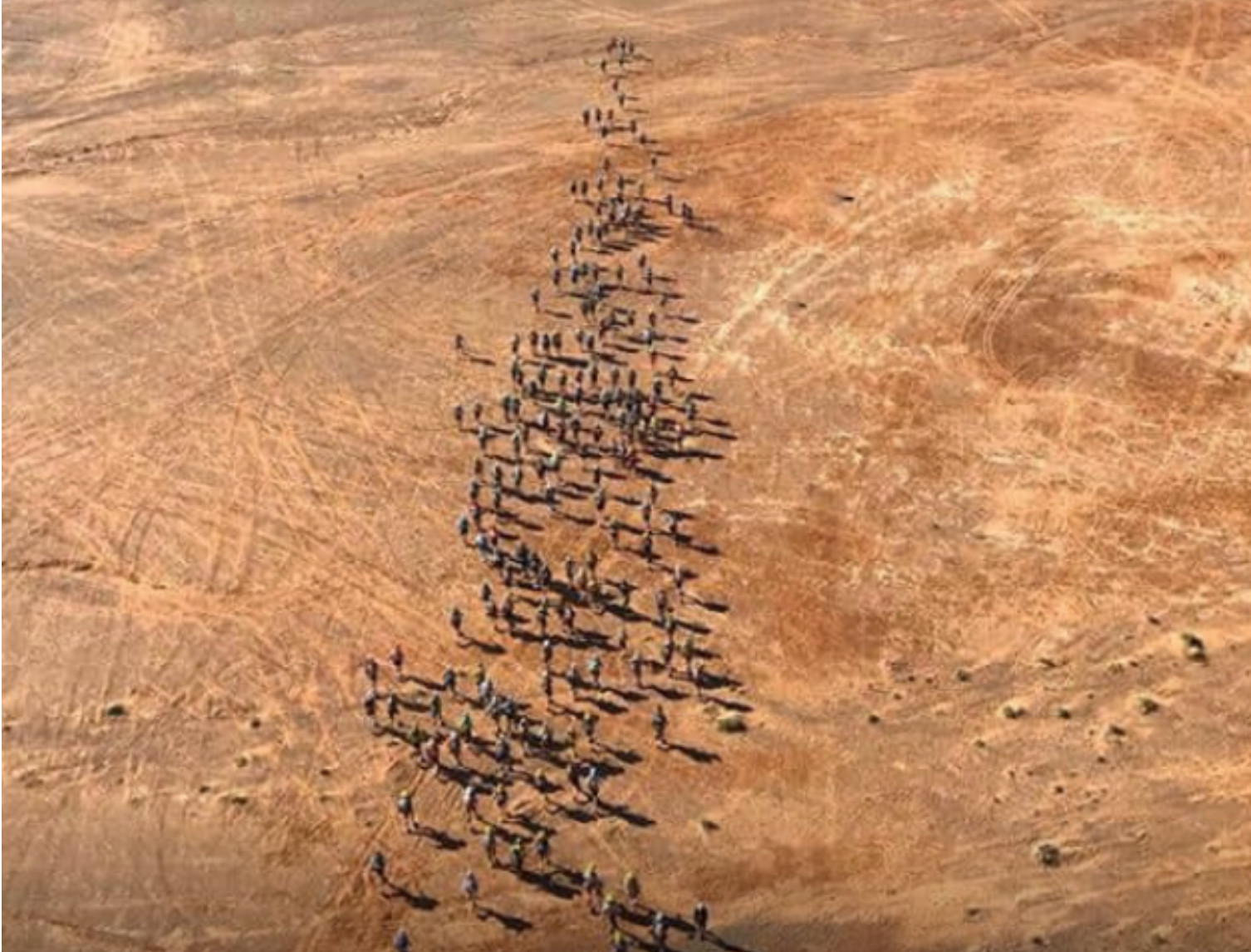
Long distance running is not even Jack’s main sport. He is a provincially-ranked tennis player who was eighth among U16 players in BC last year. He hopes to secure a scholarship at a US university and eventually to turn pro.
Login to leave a comment
Marathon Des Sables
The Marathon des Sables is ranked by the Discovery Channel as the toughest footrace on earth. Seven days 250k Known simply as the MdS, the race is a gruelling multi-stage adventure through a formidable landscape in one of the world’s most inhospitable climates - the Sahara desert. The rules require you to be self-sufficient, to carry with you on your...
more...High school student Jack Davison is running the Marathon Des Sables 251-km six-day run, through the African desert in southern Morocco.
Jack Davison is confident taking on this Marathon Des Sables Challenge. Just 15 years old he was the youngest runner to complete two ultras in 2018.
The first was the Fuerteventura Des Sables half marathon on the Canary Islands in September. Davison really didn’t know whether he could complete the 120k ordeal on the Spanish archipelago, which is just off the African coast but he did.
“I went in with an open mind,” he said.
“It was an amazing accomplishment.”
It is believed to be a world record for the youngest ultra marathoner. If not, it is certainly a world-class accomplishment.

The terrain was rocky and hilly, “they love to make you run up hills,” and the temperatures were over 100F degrees.
The wind blew constantly. The organizers furnished the runners with tents, pitched on a sandy beach next to the ocean. However the wind never stopped blowing, and he remembers the sounds of the tents flapping the entire night.
When he got to the Ica Desert in Peru last month, he was more prepared for what lay ahead.
“I knew what to expect, but I always get pretty nervous before a run.”
There were no tourist buses where they were going, and military vehicles transported the runners for about 12 hours before they got to the starting line.
Running in a sandy desert presented its own challenges. Consider that professional athletes run on sand to make their training more challenging. The was one sandy hill, almost a kilometer long, that he won’t soon forget.
“It took me an hour to run up that sand dune,” he recalls.
He enjoyed the social side of running, meeting people from around the world out to conquer the same goal.
Davison wasn’t in the money, but he finished in the top one-quarter – about 350 in Spain and 400-plus in Peru. He was satisfied with that.
“I went there each time just trying to complete it.”
Surprisingly, Davison doesn’t train with a lot of distance running. He is a provincial calibre tennis player, and his main fitness regimen is spending about 25 hours each week running around a court.
But he is no stranger to distance runs.
His father Aaron is also an ultra marathoner. Aaron has completed the full Marathon Des Sables three times, and will attempt it this year at the age of 51.
Like his father, Jack finds an incredible sense of achievement in these feats of endurance.
At his age, Jack is not even allowed to run in marathons in Canada, where the minimum age is 18. But he didn’t think it hurt him in any way. After the Canary Islands marathon he rested for about a week.
But last month when he got back from Peru, he found his mom had enrolled him in a tennis tournament, so he only had a few days of rest before he was back in action. He finished second in the tourney.
His tennis coach isn’t crazy about his marathoning, but Davison also plans to complete that epic 251k marathon across the Sahara in Morocco April 5.
“That will be the highlight of my life so far,” he says.
Login to leave a comment
Marathon Des Sables
The Marathon des Sables is ranked by the Discovery Channel as the toughest footrace on earth. Seven days 250k Known simply as the MdS, the race is a gruelling multi-stage adventure through a formidable landscape in one of the world’s most inhospitable climates - the Sahara desert. The rules require you to be self-sufficient, to carry with you on your...
more...Best Racing Moment of 2018 and My Best Runs 2019 World Best 100 Races were announced today
My Best Runs "Best Racing Moment in 2018" and the My Best Runs "2019 World Best 100 Races" were announced today in Mountain View, California at the My Best Runs (MBR) headquarters.
First on the agenda was the announcement of the 2018 Best Racing Moment. MBR founder Bob Anderson stated, "Eluid Kipchoge was all smiles as he crossed the finish line at the Berlin Marathon September 29."
"He had just smashed the world marathon record clocking 2:01:39. Eliud ran the last 17k without pacers, pushing himself, taking off one minute and 18 seconds off of Dennis Kimetto's record."
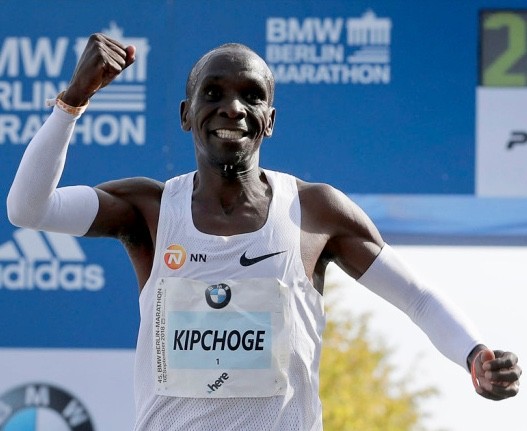
"The world has rarely seen one event so dominated by one man, Kenya's Eliud Kipchoge," says Bob who also was the founder of Runner's World magazine (1966) and publisher for 18 years.
Eliud has won many awards this year including World Athletes of the Year at the IAAF Awards.
Next up on the agenda was the annoucement of the 4th Annual My Best Runs 2019 World Best 100 Races.
"There are so many good races in the world. This list could easily be much bigger. However, as we have done now for four years, we have narrowed it down to the top 100," stated Bob.
The featured race at 44 of the best 100 are marathons. There are 20 half marathons and 14 10ks. There is the Western States 100 miler and the Comrades Ultra marathon in South Africa.
The shortest race is the New Balance 5th Avenue Mile in New York City. The longest is the 156 mile Marathon Des Sables coming up March 5 in Morocco.
Most offer prize money totally million of US dollars. The Standard Chartered Dubai Marathon coming up January 26 is offering $1,316,000. This marathon which was first held in 2000 top four men at the 2018 race all ran under between 2:04:00 and 2:04:06. Four women ran between 2:19:17 and 2:19:53.
"It is good to see over $21 million (from races MBR are featuring) in prize money being offered runners," says Bob. "Running is what these runners do and the money is well deserved and important for our sport."
Of course the Berlin Marathon is one of our top 100 but so is the Valencia Half Marathon (Spain) where Abraham Kiptum broke the world half marathon record in the 2018 race by clocking 58:18.
The Birell 10k Race in Prague, CZE also made the list again for the 4th year. 18-year-old Phonex Kipruto from Kenya clocked 26:46 while Caroline Kipkirui clocked 30:19. "This is one fast evening race and obviously belongs on our top 100 list," stated Bob.
The list has races from 23 different countries.
"You can not go wrong in running any of these races," says Bob Anderson. "Your biggest challenge in many of these races will be to be able to be on the starting line. But if you can get in, you will have a blast."
by My Best Runs
Login to leave a comment
Bill Mitchell began running in his early 60s, has run 157 marathons and says hot chocolate and wine gums is his secret to success
73-year-old Bill Mitchell has run 157 marathons – including 23 ultra-marathons – says a daily cup of hot chocolate and wine gums are the secret of his success. (Wine gums are sweets and contain no alcohol).
Bill Mitchell began running in his early 60s and says that he is now the fittest he has ever been. And it’s no surprise to hear that when you discover the former merchant navy officer from Derbyshire UK, has run the infamous Marathon des Sables – a six-day, 250km endurance test where temperatures often exceed 50C (122F) an astonishing three times.
"A lot of people resign themselves," says Bill "to old age. I always say to people you’re never too old to do anything. The bottom line is anyone can do it as long as they’ve got the desire."
Bill said he found his second ultra-marathon easier than his first – and credits his unusual diet plan. He added, "I drink hot chocolate every day. It is delicious. I also carried a small bag of wine gums with me."
Mitchell also follows a strict diet – that includes eating oily fish and avoiding meat, cream and butter – to ensure that is fit and healthy. Mitchell began running in April 2008 and his hobby has now led him and his wife Linda, 68, across the globe.
Login to leave a comment
Run The World Challenge 2 Profile: Gloria Nasr has run the toughest race on earth already five times
by Bob Anderson
Login to leave a comment
Chris Patterson is running a marathon each week for a year to raise money for Hope For Children
Login to leave a comment
The Amazon has a mystical appeal to Craig, it is an extremely harsh and unforgiving environment.
Login to leave a comment
Spain won both the men’s and women’s team titles at the Trail World Championships, U.S. teams finished 4th and 3rd
Login to leave a comment
I walked with the camels, sat on top of sand dunes, sang songs, mediated and helped Runners through some tough moments at MDS
by Lisa Smith-Batchen
Login to leave a comment
Moroccan Rachid claimed his sixth victory in the Marathon Des Sables
Login to leave a comment
A 72 Grandfather, from Woodstock is set to take on the Maraton Des Sables
Login to leave a comment
73-Year-Old Bill Mitchell heard that the 156 mile MdS was harder than they thought it would be?
Login to leave a comment
Shaun Bacon, 54, training for fifth Marathon des Sable in Sahara Desert
Login to leave a comment
Mother-of-four to undertake the ultramarathon across Sahara Desert
Login to leave a comment
Ovarian cancer survivor Going to run the Toughest Foot Race on the Planet
Epic Running Adventures
Login to leave a comment
Ultra-marathon man ready to run the Toughest Foot Race On Earth
Epic Adventures
Login to leave a comment


